
George Washington's Mount Vernon
The iconic riverside estate of george washington. open daily, 365 days a year..
George Washington's Mount Vernon is the riverside home of our nation's first president, George Washington. The estate includes a Mansion, four gardens and historic outbuildings where enslaved people made tools and textiles, cared for livestock and processed food. At the New Tomb, guests can visit the final resting place of George and Martha Washington, where wreath-laying ceremonies take place year-round. George Washington's Mount Vernon is open 365 days a year. Mount Vernon is embarking on a multi-year preservation project to safeguard George Washington’s Mansion for generations to come. As work progresses through the house, individual rooms will be temporarily taken off display. Visit www.MountVernon.org/Revitalization for details. From July 8, 2024, through 2025, the Education Center exhibit on George Washington’s life will be closed for an extensive rebuild. Visit www.MountVernon.org/GWEX to learn more.
- Motor Coach Parking on site
- ADA Compliant
- Foreign Language Guides
- Guided tours available
- Motor Coach/Bus Parking
- Private Tour
- Educational Programming
- Open to public
- Produce public facing events?
- ADA compliant
- Non-Profit Organization
Additional Information
Largest capacities.
Banquet capacity: 300, Theatre capacity: 200, Reception capacity: 1200
Distance to Metro
Attraction rates, length of tour, min to airport.
Membership Discounts, Season Pass
Metro Station
Payment options.
American Express, Cash, Discover, MasterCard, Visa
3200 Mount Vernon Memorial Hwy. South end of GW Pkwy Mount Vernon , VA 22121 United States
(703) 780-2000, [email protected].
View Gallery
Upcoming Events
Historic plant & garden sale.
Apr 27, 2024 - Apr 27, 2024
Shop for heirloom vegetables, herbs, and annual flowers—plus, native...
Mount Vernon: The Story of An American Icon Exhibit
Apr 25, 2024 - May 31, 2024
Meet the people who shaped George Washington's estate, including...
Revolutionary War Weekend at George Washington's Mount Vernon
May 04, 2024 - May 05, 2024
Mount Vernon's serene 12-acre field transforms into a battleground as...
George Washington Whiskey Tasting
May 04, 2024 - Jun 29, 2024
In 1799, George Washington's distillery produced nearly 11,000 gallons...
Lives, Loves, Loss: Special Family Activity & Tour
May 11, 2024 - May 11, 2024
On May 11, learn about the enslaved families at George Washington's...
Mother's Day Buffet at the Mount Vernon Inn Restaurant
May 12, 2024 - May 12, 2024
Mount Vernon Inn Restaurant will offer a special Mother's Day buffet...
Spring Wine Festival and Sunset Tour
May 17, 2024 - May 19, 2024
Relax on the east lawn overlooking the Potomac River as you experience...
Summer Huzzah at George Washington's Mount Vernon
Jun 08, 2024 - Jun 08, 2024
Play lawn games, have your fortune told, take a scenic horse-drawn...
Freedom Before Emancipation: Family Day for Juneteenth
Jun 19, 2024 - Jun 22, 2024
Juneteenth is the celebration of Emancipation Day in 1865. Long before...
An American Celebration at Mount Vernon
Jul 04, 2024 - Jul 04, 2024
Watch as people from across the world become U.S. citizens in a moving...
Sep 07, 2024 - Sep 28, 2024
George Washington Patriot Run
Sep 08, 2024 - Sep 08, 2024
Join George Washington's Mount Vernon for a 10-miler and 5K race along...
Nearby Favorites
National children's museum.
Host your Private Event at National Children's Museum in Downtown...
TripZero: Housing for Sustainable Events
Run a delightfully sustainable event. Allow TripZero to source your ev...
Embassy Suites Washington, DC-Convention Center
Steps from Washington Convention Center and more!

Welcome to Mount Vernon
Located on Interstate 5, Mount Vernon is conveniently located mid-way between Seattle, Washington, and Vancouver, British Columbia, Canada. Mount Vernon is a regional hub for agriculture and agritourism, events, entertainment, education and culture, financial and technology, legal, health care, and local government. Home to the world-famous Skagit Valley Tulip Festival, Mount Vernon's agritourism and events attract one million visitors annually!
Mount Vernon also offers a vibrant mix of office, retail, restaurants, and professional services on the banks of the grand and peerless Skagit River. It’s also one of the few areas in the country that offers visitors high speed, state-of-the-art fiber optic technology.
Discover our stunning natural environment, perfect for day and overnight outings, and immerse yourself in the essence of Mount Vernon's thriving environment and inclusive cultural heritage.
Explore by season

- Skip to global NPS navigation
- Skip to the main content
- Skip to the footer section

Exiting nps.gov
Thing to Do
George Washington’s Mount Vernon and Estates
Potomac Heritage National Scenic Trail
George Washington’s Mount Vernon and Estates is located on a hill along the Potomac river. Mount Vernon, named after a British General, was originally much smaller than the spacious mansion we see today. Built in 1735 by Washington’s father Augustine, the original building was a one-and-a-half story farmhouse. George Washington raised the roof in 1758 to its current height of two-and-a-half stories.In 1774 Washington drastically increased the floorspace, adding the two wings, the piazza, and cupola.
Washington was an innovator and explored many different ways of integrating new technology and equipment into the construction and operation of his estate. He gave personal attention to Mount Vernon’s operations, and his attentiveness to detail is still reflected in the maintenance and restoration of Mount Vernon today. For example, the room formerly known as the “Nelly Custis Bedchamber” has recently been restored to a more faithful interpretation of the room during its use in Washington’s day. It has been aptly renamed “The Chintz Room.”
Most of the Mount Vernon estate sites are available by wheelchair . Many of the paths to different buildings and features on the estate are uneven, but there is a wheelchair path leading from the the Ford Orientation Center, Donald W. Reynolds Museum and Eduation Center and also the Mount Vernon Inn. However, the Mansion’s upper floor is accessible only by stairway. Non-motorized wheelchairs and wheeled walkers are available free of charge in the Ford Orientation Center.
A map of accessible paths is available on the Mount Vernon Accessibility Page .
Small hand-held devices are also available for those who are blind or have low vision , and audio tours are available for those hard of hearing. There are also ASL tours available for the main estate and auxiliary grounds (such as the Gristmill and Distillery) the by calling or emailing beforehand and requesting an ASL tour guide for the grounds ahead of time.
If you have further questions, please send your emails to [email protected] or call 703-780-2000.
- potomac heritage national scenic trail
- architecture
- historic buildings
- george washington
- martha custis washington
- revolutionary war
- mount vernon
- agriculture
Last updated: August 1, 2017

Everything You Need to Know to Visit George Washington’s Mount Vernon in Virginia
By Jason Barnette | Travel writer and photographer with 15+ years of road tripping experience
- Last Updated on December 24, 2023
- Published on February 10, 2020
This post may contain affiliate links. Read my Affiliate Disclosure here .
After the brief but thrilling tour through the house I returned to a long row of wooden chairs on the covered porch of George and Martha Washington’s Mansion. I could see the wide Potomac River down the hill. It wasn’t hard to imagine what it was like when Washington lived here in the 18 th century because not much had changed at all in this peaceful neck of the woods.

It was a sweltering day in September, in the midst of a bona fide heatwave, when I arrived at the main gate to the Mount Vernon estate. I was thrilled to finally be able to explore the home of George and Martha Washington, but the intense heat and humidity kept me from most of the outdoor exploration. In this post I have compiled everything I learned that day with my four-hour visit to Mount Vernon.
With admission starting at $20 for adults and $12 for children you get lot of bang for your buck. General Admission includes a guided tour inside the Mansion, access to all the walking trails through the gardens and historic area, the museums, and the Distillery & Gristmill located off-site. The general admission alone will keep you busy for a few hours and give you a wonderful insight into our first president.
Here is everything you need to know to visit George Washington’s Mount Vernon in Virginia.
How much time will you spend at Mount Vernon
It entirely depends on how much you want to do. The minimum amount of time necessary for the guided tour of the Mansion and a walk through of the gardens and museums is about two hours. Expect to add at least one hour for each specialty tour. I recommend at least three hours to experience Mount Vernon and five hours for an experience you’ll never forget.

The Mansion
If you look really closely when you visit you can just make out the outline of the original one-and-a-half story house built by Augustine Washington in 1734. When George Washington took over the plantation in 1754 he began a series of renovations and expansions. After nearly 50 years of tinkering he settled with the 21-room Mansion he called Mount Vernon .
The only way to see the Mansion is with a guided tour included in the price of admission. The house has been meticulously restored over the years and offers an absolutely stunning look into an authentic 18 th century home. Not a recreation, but the actual home of George and Martha Washington. The architectural details designed by Washington himself are stunning. The fact present-day Mount Vernon has maintained them so well is nothing short of astounding.
The guided tours are admittedly brief, and quite frequently my group bumped into either the group behind or in front of us. Mount Vernon is one of the most-visited presidential homes in the country so I can’t entirely blame them, but my entire tour lasted only 20 minutes. It was an amazing twenty minutes, however, with each room uniquely painted and adorned with paintings, furniture, and artifacts from Washington’s time.
About midway through the tour my guide pointed to a bed on the upper floor of the Mansion and said, “This is where George Washington died in 1799.” To realize I was standing in the very room where Washington passed away was one of the most profound moments of travel and history in all of my adventures.
When you purchase an admission ticket online (recommended) or on site you will be asked to pick a time for the Mansion Tour. The time you pick is when you need to be in line at the Mansion. Wait times can be around 5-30 minutes for the tour to begin. It is important you make it in time; if you have to reschedule your time it could be hours before you could begin the tour.

Historic Area
Surrounding the Mansion at the heart of Mount Vernon is the Historic Area dotted with outbuildings, gardens, and trails. I found this to be the most peaceful part of my time at the estate with no rush to get anywhere and very thin crowds compared to the house tour.
The Historic Area includes the Spinning House, Blacksmith Shop, Slave Quarters, and more than a dozen other buildings. Each was fully set up as it would have been during Washington’s time on the plantation and open to the public to pop in and explore. My favorite building at Mount Vernon? The Necessary . It was just the outhouse, but I found the name hilarious (and reminded me of the necessary chairs I found at The Charleston Museum in South Carolina).
There are three gardens to explore at Mount Vernon: Fruit Garden, Lower Garden, and Upper Garden . The Lower Garden is beside the animal enclosure where animals typically used on the plantation are kept for viewing today. My favorite was the Upper Garden with a peaceful walk along a crushed gravel trail through the formal garden beside the Greenhouse.
Bring water! It can get quite hot and humid at Mount Vernon during the summer months. There aren’t many places to get water through the Mansion and historical areas, so please bring your own water. And please bring a reusable water bottle like the CamelBak Chute that I love so very much.
Washington’s will stipulated that upon his death a new tomb should be built at Mount Vernon where he, his wife, and his family would later be interred. Today visitors can explore the old and new tombs on the estate.
When George Washington died in 1799, he was initially interred in the Old Tomb . But before his death Washington realized this old tomb was in bad condition. Today visitors can see the location of the Old Tomb.
The New Tomb was completed in 1831 and the bodies of George and Martha Washington where interred there forever. Visitors can walk to the tomb located south of the Fruit Garden, about ten minutes from the mansion.

National Park Week 2024
Learn about the annual celebration of the National Park System and read my travel guides to national park units across the country.
Reynolds Museum and Education Center
Hot and humid? Raining? Just plumb tired and need a rest? The Reynolds Museum and Education Center is the perfect place for you! With a whopping 23 galleries, the Revolutionary War 4D Theater, and an interactive theater, you’ll certainly have a lot to do there.
The museum was an amazing walk through Washington’s life. Hundreds of artifacts and entire scenes from history were on display in the museum. One of the coolest scenes was the life size George Washington on an equally life size horse from the Revolutionary War. But my favorite piece in the museum was a simple painting depicting George Washington’s first expansion of the original house built by his father.
One of the most popular indoor attractions at Mount Vernon is the Re volutionary War 4D Theater . Prepare yourself for canon fire, harmless smoke, and snowflakes as the fourth dimension comes to life during a thrilling experience. It is a recent addition to the estate so the video and effects were top notch.
Distillery and Gristmill
The distillery and gristmill are located on a satellite portion of the estate about three miles from the main entrance along Mount Vernon Memorial Highway. Access to the site is included in the price of general admission. If you don’t want to drive or didn’t drive to begin with there is a shuttle to take visitors between the sections of the estate.
You can visit the Distillery and Gristmill on your way to the estate. You can either buy your tickets online or when you arrive at the distillery. I recommend doing this first because you’ll be more exhausted after finishing the tours of the Mansion, Historic Area, and museum.
Once there you’ll see authentic recreations of the gristmill and distillery once used by George Washington on the plantation. The gristmill is a gorgeous stone building with a ginormous wheel that you’ll frequently find turning under the power of water. Step inside for one of the most in-depth looks at how a gristmill functions in the country.
The distillery was the most surprising thing I discovered at George Washington’s Mount Vernon. I had no idea Washington made whiskey and sold it to the general public! The fully-function recreation of the distillery shows you how whiskey was made in the late 18 th century!
Did you know
George Washington began a commercial distilling business in 1797. By 1799 the distillery produced 11,000 gallons of whiskey, almost 20 times more than the average Virginia distillery, making his business venture one of the largest distilleries in the country.

Accessibility
Great news! The vast majority of everything to see and do at Mount Vernon is fully accessible. There are some limits, but for the most part this is one of the most accessible historic sites I have come across yet.
Begin with the curbside drop off directly in front of the main entrance to the estate. There are no shuttles between the parking lots and entrance, so this is the best option for those with wheelchairs and walkers.
The Ford Orientation Center, where your adventure at Mount Vernon begins, and the Reynolds Museum and Education Center are fully accessible. However, only the first floor of the Mansion is accessible. This will still allow you to see about 70% of the tour, but unfortunately you will miss the bedroom where Washington died.
Through the Historical Area there are a few accessible paths. The primary route is beside the North Garden directly to the Mansion. Other paths around the outbuildings and through the formal gardens are passable on a surface of crushed gravel but be careful on wet days.
Just in case you need it Mount Vernon offers free non-motorized wheelchairs and walkers for visitors.

Getting to Mount Vernon
The most direct route to Mount Vernon is along Mount Vernon Memorial Highway at U.S. Highway 1 in Alexandria. There are a few exits you can take off Interstate 95 to reach this highway.
But my favorite way to get to Mount Vernon is to take the 25-mile George Washington Memorial Parkway . The National Park Service parkway begins at Exit 14 off Interstate 495 west of Washington, D.C., continues along the Potomac River through Alexandria, and ends at the roundabout at Mount Vernon. Along the way the Parkway passes several other NPS monuments and memorials, Gravelly Point Park, and Jones Point Park.
But the absolute coolest way to visit Mount Vernon? Take a three-hour scenic boat ride! Spirit Cruise’s Spirit of Mount Vernon cruise boat departs Washington, D.C. just after 8 a.m. for a two-hour cruise along the Potomac River, and then leaves Mount Vernon around 1 p.m. for a two-hour return cruise.
A more affordable and quicker option is to ride on the Mount Vernon Cruise with the Potomac Riverboat Company . This 50-minute cruise departs Alexandria, makes a stop at National Harbor, and then sails down the Potomac River to Mount Vernon.
If you choose to drive to Mount Vernon one the greatest advantages of this historic site is the free parking. There are two massive parking lots on either side of George Washington Memorial Parkway with about a 5 to 15-minute walk to the main entrance. There is a curbside drop off area in front of the main entrance to make it easier for accessibility and families. Sorry, dads, but you have to walk back from the parking spot.
Where to Eat
Take a guided tour, sit on the front porch watching the Potomac River, and go for a walk through the gardens and the next thing you know you’ll be hungry. Fortunately, there are two great places to eat on the property so you don’t have to leave when the rumble in your belly starts.
The Food Court Pavilion is located near the main entrance across from the Ford Orientation Center. The pavilion offers food throughout the day including breakfast, lunch, and snacks. Papa Johns has a shop set up inside where you’ll also find hamburgers, sandwiches, salads, and desserts. There is plenty of indoor seating with large tables.
The Mount Vernon Inn Restaurant is located next door to the pavilion. The restaurant serves lunch and dinner throughout the week and brunch on Saturdays from 10 a.m. until 3:30 p.m. The diverse menu includes everything from hamburgers and sandwiches to pork chop and roasted duck. The dining room at the restaurant is quite gorgeous with patterned wallpaper and white linen tablecloths.
Where to Stay
There is actually so much to do at Mount Vernon that I strongly recommend spending the entire day exploring it. The historic site does not offer two day passes so you might as well do everything in one trip! Okay, maybe not everything. But you can try and you’ll be tired afterwards.
If you want to make a weekend trip out of visiting Mount Vernon, I recommend staying in nearby Alexandria about twenty minutes away.
My first night in Alexandria I stayed at the Hampton Inn & Suites on Richmond Highway. This is my top recommendation for hotels in Northern Virginia because of easy access, outstanding room, and proximity to everything. The hotel includes an outdoor swimming pool, free on-site parking, and a fantastic breakfast.
The Alexandrian is a top-rated posh hotel in Alexandria’s Old Town historic district. It’s located within walking distance of many attractions in the city and takes only minutes to drive out of town.
Closest to Mount Vernon
The Best Western Mount Vernon is just four miles from Mount Vernon. With comfortable rooms, free on-site parking, and a decent breakfast in the morning, it is a no-frills great place to spend the night.
TownePlace Suites by Marriott across the street is a step above with an outdoor swimming pool, free on-site parking, and a One Bedroom King Suite with a sleeper sofa that makes it better for traveling families.
I am always a fan of Hampton Inn hotels and this one makes a great place to stay. It has a rather nice indoor swimming pool and fantastic breakfast in the morning. In fact, that breakfast is exactly why I was late getting to Mount Vernon when I stayed there!
2 Responses
I enjoyed your article! I’ll be in Georgetown for a wedding in a few weeks and have a full Sunday free to visit Mt. Vernon with my husband, daughter and her boyfriend. Do you think it’s worth it to hire a half day private guide to take us around the premises, or can we easily navigate on our own? We are very interested in history, so I thought it may be worth it to be able to ask questions and get more out of the day. I would appreciate your thoughts!
Hi Laurie! Mount Vernon is a very easy property to navigate on your own. However, if you want the most immersive experience with a docent or guide who will really dive deep into the history of the property, I absolutely recommend the half-day tour. I hope you enjoy the wedding and trip to Mount Vernon!
Leave a Reply Cancel reply
Your email address will not be published. Required fields are marked *
- share this article
Privacy Policy
Copyright © 2023 Jason Barnette | All rights reserved | Seriously, don’t steal my stuff

Share this Article
Did you enjoy reading this article? If so, then share it with your friends. Sharing is caring, after all.
- Skip to primary navigation
- Skip to main content
- Skip to primary sidebar
- Skip to footer
TravelAwaits
Our mission is to serve the 50+ traveler who's ready to cross a few items off their bucket list.
A Visit To Mount Vernon: The Best Things To See And Do

Orhan Cam / Shutterstock
- Activities and Interests
- Destinations
- History and Culture
- United States
- Washington, D.C.
With his proven success leading a ragtag group of patriots to win the Revolutionary War and drafting the constitution of the newly formed United States, George Washington steadfastly secured his place in history as America’s first president. And that’s why, in a city full of free memorials, museums, and other sights, it’s absolutely worth the time, effort, and cost to travel about 15 miles south of the nation’s capital to spend a day at Mount Vernon.
From the mansion where America’s first president lived to the slave cemetery a few feet away from the graves of George and Martha, these are the best things to see and do on a visit to this Founding Father’s home in Mount Vernon.

Sage Scott / Everyday Wanderer
George Washington’s Mansion
When George was a toddler, his father began building a modest home. And when the future president’s older half-brother passed away two decades later, a 22-year-old George took the reins. Over the next 45 years that Washington lived at Mount Vernon, he added to the home, turning it into the nearly 11,000 square foot, two-and-a-half-story, 21-room mansion that can be toured today.
General admission to Mount Vernon includes a guided tour of the mansion. However, entrance to the mansion is timed, so it’s best to purchase your tickets in advance and plan the rest of your visit to Mount Vernon around your scheduled home tour.
There is a lot to take in when touring the home, which is ten times larger than the average colonial Virginia home. However, your tour guide will certainly tell you all about:
- The majestic New Room (including how it got its name)
- George Washington’s study (his 18th-century man cave)
- The Washingtons’ bedroom (where George passed away from a throat infection in 1799)
- The dove weathervane atop the cupola (commissioned by Washington to symbolize his desire for peace in the new nation)
But one of my favorite experiences was learning about a key mounted on the wall of the central hall. The key was a gift from the Marquis de Lafayette, Washington’s friend and fellow revolutionary. It once unlocked the door to the infamous Bastille prison, whose destruction is considered the start of the French Revolution.
Pro Tip: To view the upper floors of the home, you’ll have to climb stairs. See the Mount Vernon website for accessibility information including recommended paths and handheld devices for guests with limited vision and hearing.

A Variety Of Outbuildings
In stark contrast to the mansion, be sure to visit the overseer’s and slave quarters. Because he was often away from Mount Vernon serving his country, George Washington hired an overseer for each of his five farms. In exchange for a modest annual salary of $133.33 — plus lodging, meals, and laundry service — the overseer at Mount Vernon was given the 18th-century equivalent of a studio apartment. And for a life of backbreaking forced labor, the hundreds of enslaved men, women, and children at Mount Vernon lived with 20 or more people in the same space.
In a world without indoor plumbing, the “necessary” was the Cadillac of outhouses back in the 18th century. Instead of a deep dirt hole where human waste would be deposited, the outdoor facilities at Mount Vernon used a system of drawers that could be removed for proper disposal and cleaning.
Other buildings to explore for a glimpse of life at George Washington’s Mount Vernon include the blacksmith shop, carriage house, stable, spinning house, and storehouse.

Gardens And Greenhouse
If you stand on George Washington’s front porch, you’ll see a large curved expanse of lush green grass known as the bowling green. While many of our homes feature green lawns today, in the late 1700s it was a rarity that reinforced the Washingtons’ wealth.
Flanking the bowling green are the upper garden (to the right) and the lower garden (to the left). The lower garden was designed to produce edibles for the kitchen, but the upper garden was created to grow flowers and be a place of beauty.
Speaking of beauty, it’s hard to miss the impressive red brick building with a row of cathedral glass windows that stands on the northeastern edge of the upper garden. In this massive greenhouse, the first president was able to successfully grow coffee beans, healing aloe plants, citrus trees, and other non-native plants through the cold Northern Virginia winters.

George Washington’s Final Resting Place
Since his death at the end of the 18th century, George Washington has been interred in two places at Mount Vernon. Overlooking the Potomac River, the old vault was the original burial plot for POTUS 1, his wife, and 20 other family members. But George Washington realized that the family vault required extensive repairs, so his last will and testament requested that a new tomb be constructed.
About three decades after his death, the bodies of America’s original president and first lady were moved to their current resting place. With two cream-colored obelisks that look like miniature Washington monuments, George and Martha are now buried in a small brick building just to the west of the old tomb.

Slave Cemetery And Memorial
While it’s a beautiful and historic place to visit, the truth is that George Washington’s Mount Vernon was constructed and operated by hundreds of enslaved men, women, and children . And although 12 American presidents owned slaves, several things set George Washington apart from other slave masters.
Despite the fact that he owned hundreds of human beings, George Washington struggled with the idea of slavery, spoke out against the institution, and expressed his desire to end the practice. And more importantly, he ultimately took action. In the will he penned in his home office, Washington stipulated that his slaves would be freed upon the death of his wife, Martha.
And when the Mount Vernon Ladies’ Association identified the location of the slave cemetery in 1929 by adding a memorial marker — just steps from where George and Martha are buried — it was believed to be the first tribute of its kind at an American historic site. In 1983, architecture students from Howard University added an updated memorial to the Slave Cemetery to honor the enslaved people who were forced to spend their lives toiling at Mount Vernon.

MountVernon.org
Mount Vernon Inn Restaurant
While you can certainly dodge scores of school children and opt for a fast-food style meal at the Mount Vernon Food Court Pavilion, there is an alternative, and I highly recommend it! For just a few dollars more, you can enjoy a delicious sit-down meal at the Mount Vernon Inn Restaurant. No matter which salad, sandwich, or entree you select, be sure to add a cup of George’s favorite soup to your order.
Made with a recipe that dates back to George and Martha’s time at Mount Vernon, the peanut and chestnut soup is amazing, no matter how unusual it may sound.
Pro Tip: An admission ticket is not required to dine at the Mount Vernon Inn, so if your itinerary doesn’t allow you to spend a day exploring the estate, you can always stop by for dinner (and a cup of that amazing soup)!

Other Tips For A Fantastic Visit To Mount Vernon
While the D.C. Metro is an affordable, easy-to-navigate way to get around the capital city, getting to Mount Vernon without a car can be more challenging. Here’s how to get there via subway and bus from Washington, D.C .
In addition to a guided tour of George Washington’s mansion, access to the outbuildings, and entrance to the museums, your general admission ticket also includes access to the distillery and gristmill. If you visit between April 1 and October 31, these additional sights are a short shuttle ride from the main estate.
The best time for a visit to Mount Vernon is in the spring, summer, or fall, when you’ll be able to best admire the beauty of the grounds and see the animals.

D.C. Bound? Here are 10 things to know about the Cherry Blossom Festival , plus Hotel Vs. AirBnb: Where To Stay In Washington, D.C.

Bitten by the travel bug as a preschooler when her family moved abroad for the first time, Sage Scott is addicted to travel. From her nomadic upbringing in a military family to her personal and professional travels as an adult, Sage has visited all 50 states, lived abroad twice, and explored nearly 30 other countries.
Now settled in America’s Heartland, Sage writes with a midlife traveler’s perspective from Kansas City — the Midwestern cowtown affectionately called the Paris of the Plains and the undisputed Barbecue Capital of the World — and is always in search of new experiences whether in her hometown or halfway around the world.
George Washington's Mount Vernon
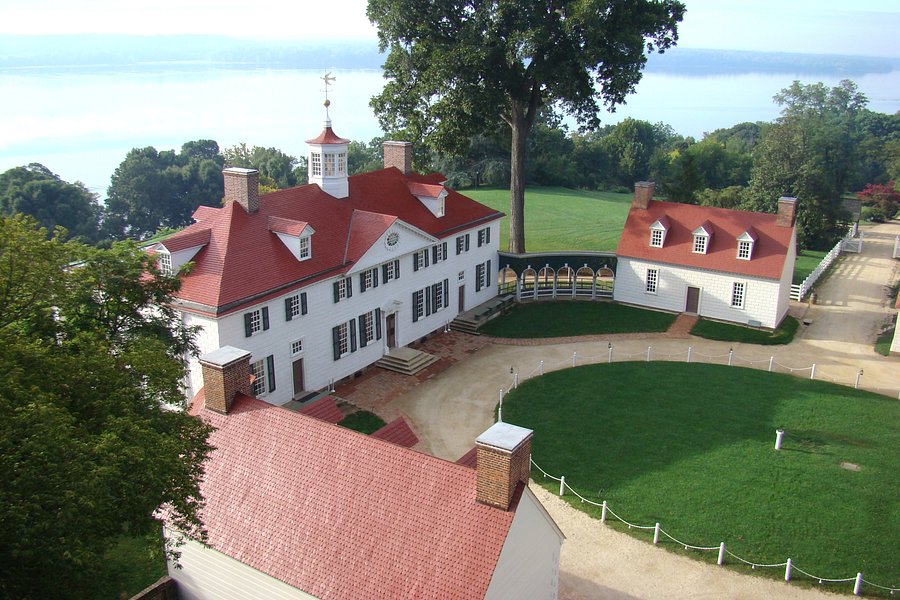
Most Recent: Reviews ordered by most recent publish date in descending order.
Detailed Reviews: Reviews ordered by recency and descriptiveness of user-identified themes such as wait time, length of visit, general tips, and location information.
- (2.29 mi) Best Western Plus Mount Vernon/Fort Belvoir
- (2.44 mi) Hampton Inn & Suites Fort Belvoir Alexandria South
- (5.46 mi) Holiday Inn Express & Suites Alexandria - Fort Belvoir, an IHG Hotel
- (6.78 mi) Residence Inn by Marriott Alexandria Old Town/Duke Street
- (5.93 mi) Embassy Suites by Hilton Springfield
- (0.20 mi) The Mount Vernon Inn Restaurant
- (6.14 mi) Afghan Bistro
- (2.30 mi) Su Pollo
- (1.13 mi) Cedar Knoll
- (7.48 mi) Mike's American
- (0.17 mi) Birthplace National Monument
- (0.17 mi) Ford Orientation Center
- (0.17 mi) The Shops At Mount Vernon
- (0.23 mi) Donald W. Reynolds Museum and Education Center
- (0.58 mi) Luxury Tours of Mount Vernon
- History Classics
- Your Profile
- Find History on Facebook (Opens in a new window)
- Find History on Twitter (Opens in a new window)
- Find History on YouTube (Opens in a new window)
- Find History on Instagram (Opens in a new window)
- Find History on TikTok (Opens in a new window)
- This Day In History
- History Podcasts
- History Vault
George Washington’s Mount Vernon
By: History.com Editors
Updated: June 26, 2023 | Original: January 25, 2018

Mount Vernon is the former plantation estate and burial location of George Washington, the American Revolutionary War general and the first President of the United States, his wife Martha and 20 other Washington family members. The current estate—which is open to visitors—includes a mansion, gardens, tombs, a working farm, a functioning distillery and gristmill, plus a museum and education center.
Where Is Mount Vernon?
Mount Vernon is located in Mt. Vernon, Virginia , overlooking the Potomac River about eight miles south of Alexandria.
It’s unclear who designed the original estate home on the site, but George Washington oversaw its many expansions and renovations until it became the iconic structure that still stands today.
Little Hunting Creek Plantation
Mount Vernon was originally called Little Hunting Creek Plantation and was owned by John Washington . John eventually passed the estate to his son Lawrence who then passed it to his daughter Mildred.
In 1726, Mildred’s brother Augustine, George Washington’s father, purchased the estate and built the main part of the plantation house—an ordinary, one-and-a-half-story structure. Augustine passed the estate to his eldest son Lawrence, George’s elder half-brother, in 1740. Lawrence renamed it Mount Vernon after the famed English naval officer Admiral Edward Vernon.
George Washington inherited Mount Vernon only after the deaths of his brother Lawrence and Lawrence’s two heirs. Lawrence died in 1752, followed by his daughter, Sarah, in 1754 and Lawrence’s widow, Ann, in 1761.
Where Did George Washington Live?
George Washington lived for much of his childhood at Mount Vernon with his half-brother Lawrence, learning the ins and outs of planting and how to be a cultured member of society. In 1753, he began what would become an illustrious military career.
Washington didn’t make Mount Vernon his home until 1759 after he married the widow and mother of two, Martha Dandridge Custis, the future Martha Washington and first “First Lady” of the United States. At the time, Lawrence’s widow, Ann Fairfax Washington, still owned Mount Vernon, so George Washington leased the estate from her until he inherited it in 1761.
Over the next four decades, Washington renovated Mount Vernon’s main house into a two-and-a-half story, 11,028-square-foot stately home with twenty-one rooms. He oversaw almost every detail, always making sure the estate reflected his distinguished status, even as he served in the Revolutionary War and as president of the United States.
The walls of the mansion are made of wood, although they look like stone. To achieve the look, Washington used rustication, a technique where wood boards are cut and beveled to look like stone blocks and then sanded and painted while wet to provide a stone-like texture.
Mount Vernon Gardens
Washington expanded Mount Vernon’s lands to around 8,000 acres. He created four gardens on the estate including:
- The Lower Garden, a kitchen garden for growing fruits and vegetables year-round.
- The Upper Garden, a garden intended for guests to stroll through which included gravel walkways, fruit trees and elaborate planting beds.
- The Greenhouse, a beautiful structure where tropical plants were grown year-round.
- The Botanical Garden, a small garden in the back of the spinning house where George grew plants from all over the world and tested potential crops.
Mount Vernon Tombs
Two tombs stand on Mount Vernon: the original family vault now known as the Old Tomb, and the new vault now known as the New Tomb which became the family’s final resting place.
After realizing the original tomb was deteriorating, Washington instructed in his will that a new resting place be built upon his death and all family members re-interred there. He also provided the financial means to build it. George and Martha were originally buried in the Old Tomb but were later moved to rest permanently in the New Tomb.
Other Mount Vernon outbuildings are:
- blacksmith shop
- spinning room
- sixteen-sided barn
- servant’s quarters
- gardener’s house
- overseer’s quarters
- slave cabins for enslaved families
- men’s slave quarters
- women’s slave quarters
Mount Vernon’s Farms
Mount Vernon’s acreage was divided into five farms. Mansion House Farm included the mansion house and its surrounding area. Large-scale crops weren’t grown there, but the farm contained gardens, woods, tree groves and meadows.
The four agricultural farms on Mount Vernon farmed over 3,000 acres and were called River, Muddy Hole, Dogue and Union. Washington originally cultivated tobacco, Virginia’s prime crop, but later made wheat his main harvest.
He also produced other grains and foods that allowed him to successfully rotate his crops and experiment with various farming methods. Washington was intimately involved in the goings-on of Mount Vernon, agricultural and otherwise. Even as he led his country, he also led the activities of Mount Vernon.
Slave Life at Mount Vernon
Over 300 slaves labored at the Mount Vernon plantation. Fewer than half were owned by George Washington: 153 were part of the bridal dowry of Martha Washington and the rest were rented out by other plantation owners.
Most of the slaves worked and lived on the estate’s farms. Many who worked at Mansion House Farm were craftsmen such as blacksmiths and carpenters. Others were weavers and cooks. Almost half of Mount Vernon’s slaves were too young, too old or too weak to work daily.
Mount Vernon’s slaves led a dismal life. They toiled from sunup to sundown every day but Sunday. In addition to taking care of Mount Vernon, they also handled their own daily chores such as caring for livestock, planting and harvesting gardens and cooking and preserving food. Their quarters were once described as “wretched.”
Days off for Washignton’s slaves were rare, although they were usually given time off for Christmas , Easter and other religious holidays. Most of Mount Vernon’s slaves were Christian, but some practiced African voodoo or Islam .
Washington was, at times, a brutal slave master. Although some reports state he treated his slaves well, documentation shows he worked them relentlessly, employed harsh punishment and sold them at will, often separating families.
Some of Mount Vernon’s slaves fought back against their unfair fate by attempting to escape. At least two were successful—George Washington’s personal cook, Hercules , and Martha Washington’s personal maid, Oney Judge .
Other slaves chose more passive ways of protest such as underperformance, theft and sabotage. Martha Washington went to great lengths to capture Oney Judge but she eluded her grasp.
Mount Vernon’s Slaves Are Freed
Washington’s will stipulated his slaves be emancipated upon Martha’s death , but she freed them in 1801, the year before she died. She could not legally free her dower slaves, however, and they were returned to the Custis estate and ownership passed to her grandchildren.
Martha may not have freed Mount Vernon’s slaves early out of the goodness of her heart since, according to Abigail Adams in a letter to her sister, the slaves knew they were to be freed upon her death and Martha feared they might kill her to hasten their freedom.
Abigail wrote, “[Martha] did not feel as [though] her life was safe in their hands, many of whom would be told that it was their interest to get rid of her–she, therefore, was advised to set them all free at the close of the year.”
Mount Vernon Ladies Association
The Mount Vernon Ladies Association owns and maintains Mount Vernon. Ann Pamela Cunningham founded the Association in 1853. The Association purchased Mount Vernon from George Washington’s heirs in 1858 for $200,000 with the goal of saving the estate and preserving its history.
It was a daunting task. But the Association—with the help of countless American citizens—worked tirelessly to save Mount Vernon and 500 of its acres. Over the years, many prominent people contributed to the cause such as Henry Ford and Thomas Edison .
The estate faced potential destruction during the Civil War but was declared neutral ground and remained open to the public and intact. The Association continues to work to safeguard the integrity of Mount Vernon and its stories.
Mount Vernon Tours
The Museum and Education Center has 23 galleries and theaters featuring interactive exhibits and short historic films. It also houses more than 700 objects and artifacts related to Mount Vernon and its famous residents.
Pets are welcome in many areas of the estate. Special tours and activities are available including period reenactments and demonstrations. Some events are included with admission, others cost a nominal fee.

HISTORY Vault: America the Story of Us
America The Story of Us is an epic 12-hour television event that tells the extraordinary story of how America was invented.
George Washington’s Mount Vernon. MountVernon.org. Mount Vernon Virginia. National Park Service. Mount Vernon, Virginia. Washington Papers.

Sign up for Inside History
Get HISTORY’s most fascinating stories delivered to your inbox three times a week.
By submitting your information, you agree to receive emails from HISTORY and A+E Networks. You can opt out at any time. You must be 16 years or older and a resident of the United States.
More details : Privacy Notice | Terms of Use | Contact Us

Love to read? Prefer the movie or TV series? Either way, see how your next binge can make a difference.
DC Day Trip: Visiting George Washington’s Mount Vernon
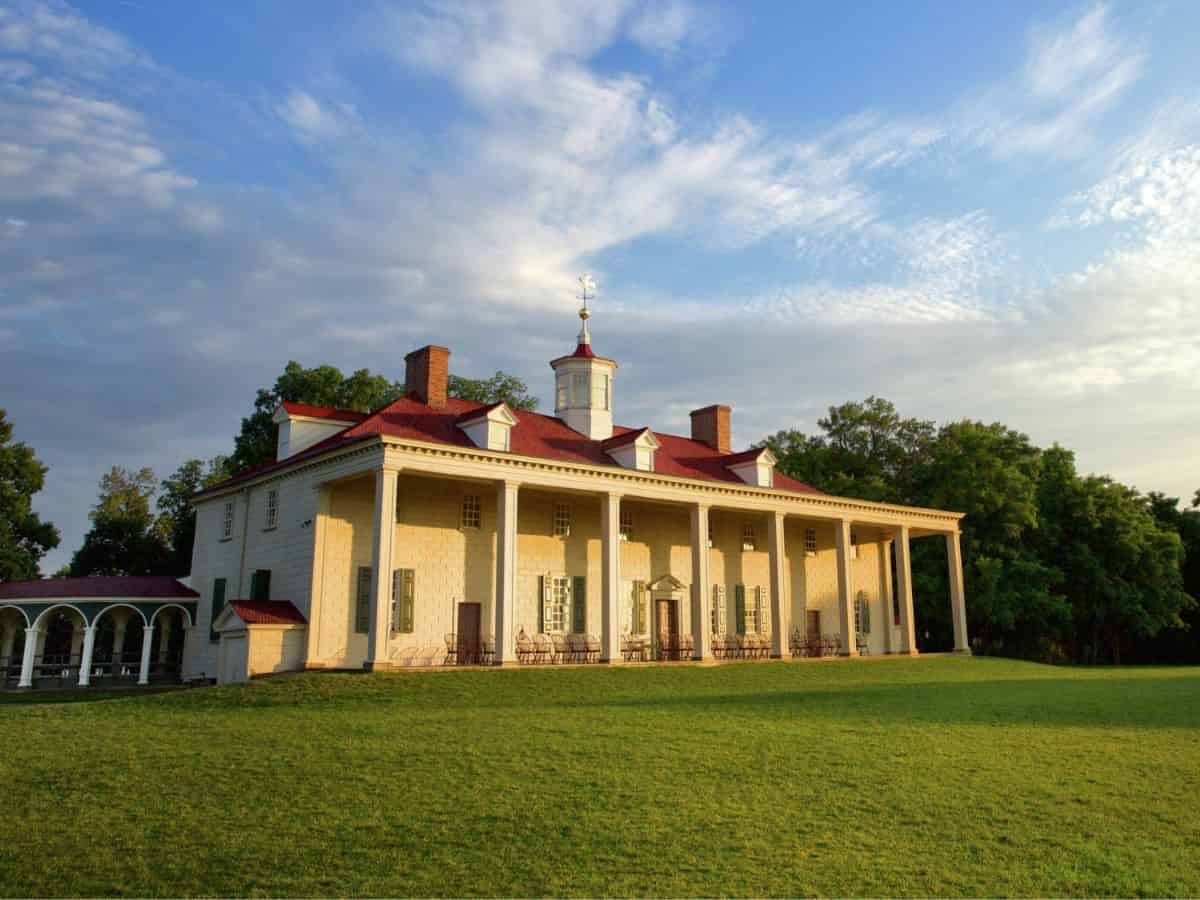
In this Article
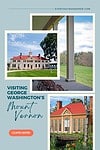
Located about 40 minutes south of the bustling streets of Washington, DC, George Washington’s Mount Vernon offers a captivating glimpse into America’s past. Here’s how to spend a day exploring the first president’s historic home overlooking the Potomac River in Northern Virginia.
In a city packed with free museums, memorials, and more sights than anyone can realistically see in a week, is it worth the time and effort to travel outside the capital city and pay an entrance fee to see George Washington’s Mount Vernon? My answer is YES! (In all caps. For emphasis.)
About 20 miles south of DC, this historic estate is not just a window into the life of a Founding Father but an opportunity to experience life in the early days of the United States and compare and contrast it to the present. From its iconic mansion to the sprawling grounds, Mount Vernon is a day trip that offers far more than just a break from city life.
Each corner of this historic estate tells a unique story, echoing the legacy of George Washington and the era in which he lived. From the intimate details of the mansion’s interior to the expansive beauty of the estate’s grounds and the heartbreaking role enslaved people played, Mount Vernon is where history comes alive in the most extraordinary ways. Here’s how to explore it all in a day trip to George Washington’s Mount Vernon home.

Have You Visited Mount Vernon?
Share your favorite photo with me by tagging @sagescott.kc on Instagram and using the hashtag #everydaywanderer
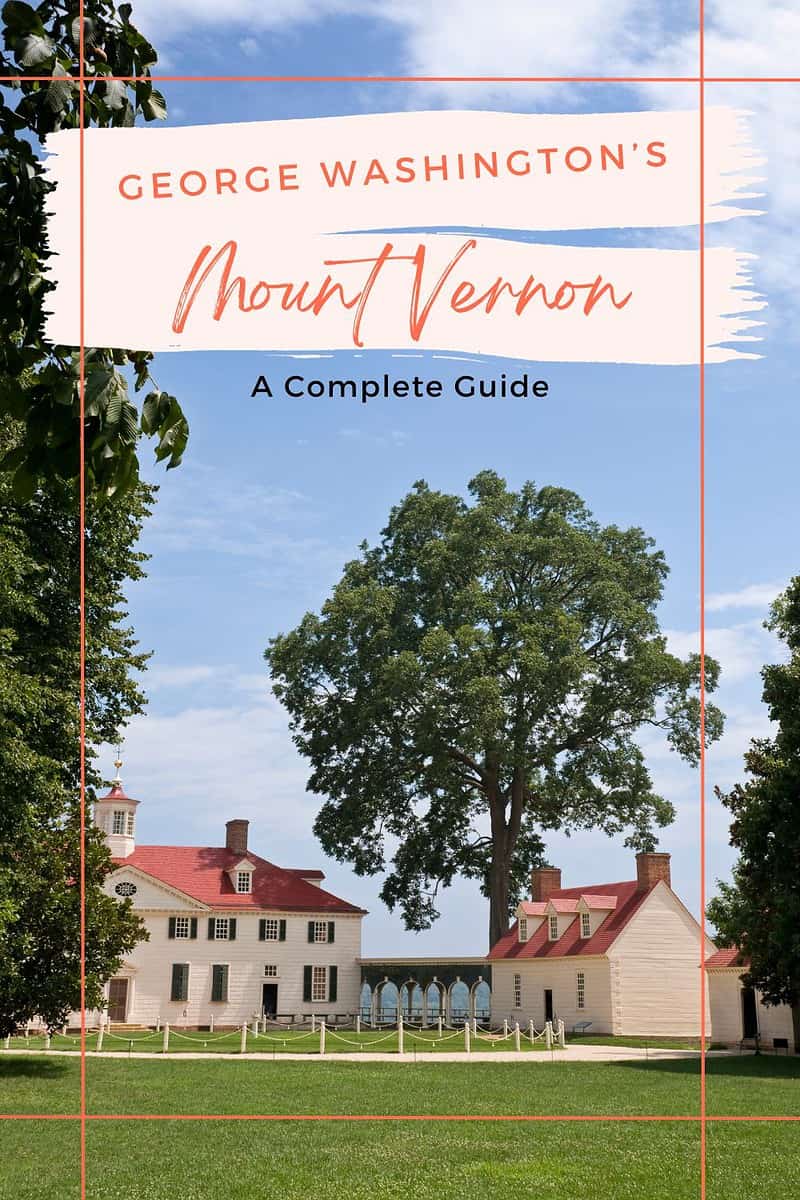
To help offset the costs of running EverydayWanderer.com, you’ll find affiliate links lightly sprinkled throughout the site. If you choose to make a purchase via one of these links , there’s no additional cost to you, but I’ll earn a teeny tiny commission. You can read all of the legal blah blah blah (as my little niece says) on the full disclosure page .
George Washington’s Mansion at Mount Vernon
Taking a guided tour of the mansion at George Washington’s Mount Vernon is like walking through the pages of history. This grand residence, built of wood in neoclassical Georgian architectural style, is the estate’s centerpiece, offering an intimate glimpse into the life and legacy of America’s first president.
Although it lacks modern luxuries, like indoor plumbing, George Washington’s Mount Vernon mansion is still pretty swanky — even by 21st-century standards. Every floor boasts soaring ceilings. The mansion walls feature bold shades of blue and green or the most fantastic wallpaper patterns of the time. Elaborately carved mantels crown each fireplace, while a majestic staircase guides visitors from the central hall to the second floor.
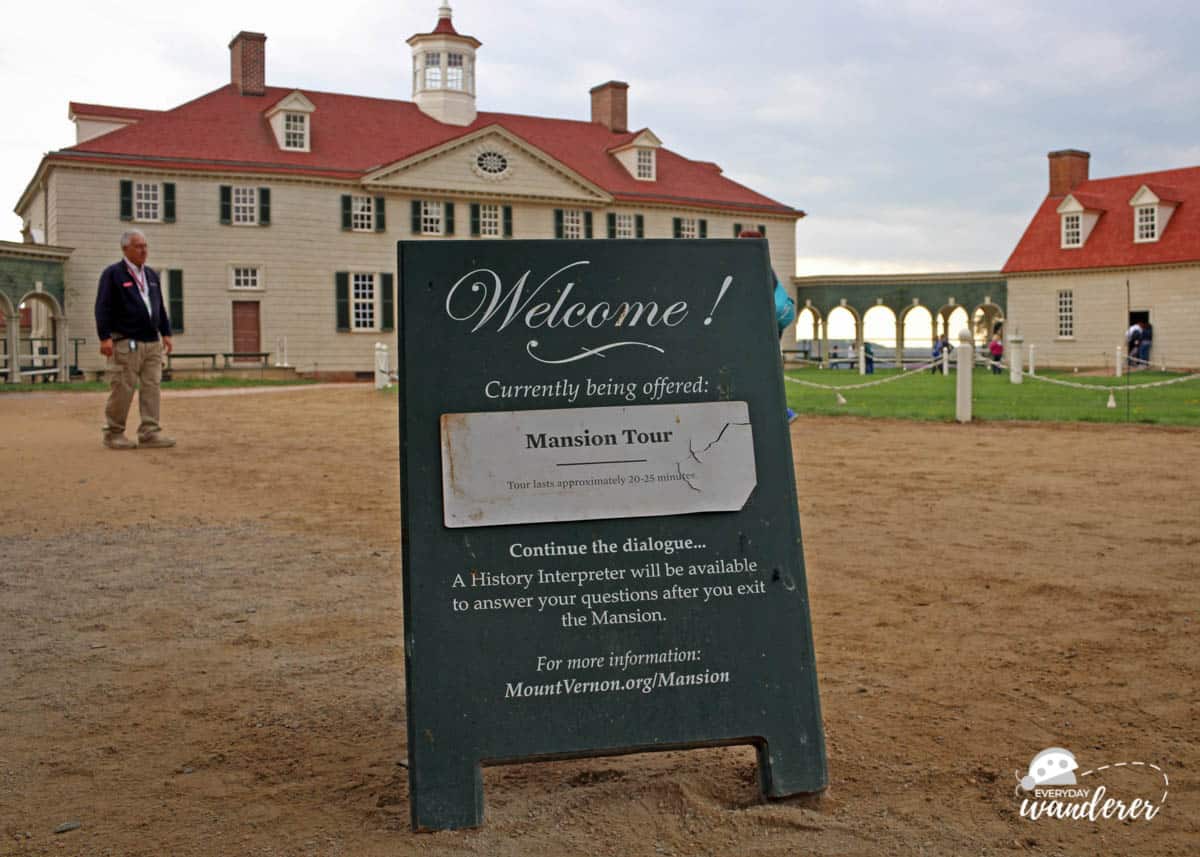
Sage Advice: Each general admission ticket includes a guided tour of the first two floors. While you can explore the grounds of Mount Vernon at your leisure, you must plan your visit around the tour time on your mansion ticket.
You’ll especially want to note the following rooms and features when you visit. Each room offers a unique perspective on Washington’s life and times, inviting you to step back and imagine the world as he experienced it.
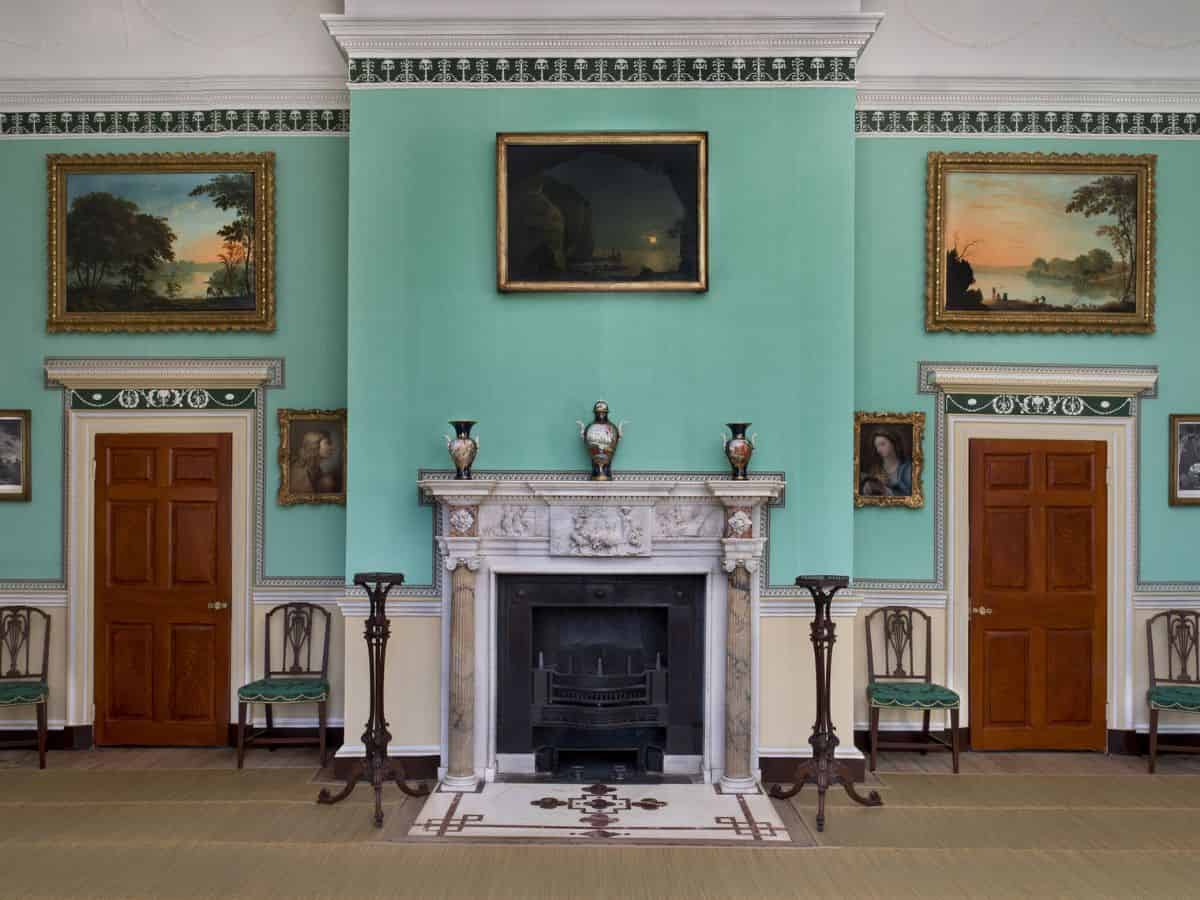
The New Room
The New Room is Mount Vernon’s largest and most magnificent space. Conceived by Washington as a multifunctional room for entertaining, dining, and important meetings, it reflects his aspirations for the young nation. The high-ceilinged room features vibrant green walls, symbolizes wealth and status in the 18th century, and is adorned with detailed architectural ornamentation. Its unpretentious beauty and fine craftsmanship stand as a testament to Washington’s vision for the new nation.
Washington's Bedchamber
On the second floor, Washington’s bedchamber is a room of both historical and emotional significance. This is where the first president spent his final moments in 1799 before passing away from a severe throat infection. The room, preserved with the utmost care, still houses the Washingtons’ original bed as well as a mantel clock and a French writing desk that belonged to them.
Visitors often find themselves in a reflective mood here, contemplating the life and death of a man who played a pivotal role in shaping a nation. The room, with its modest furnishings, contrasts with the grandeur of the rest of the mansion, offering a more personal insight into Washington’s life.
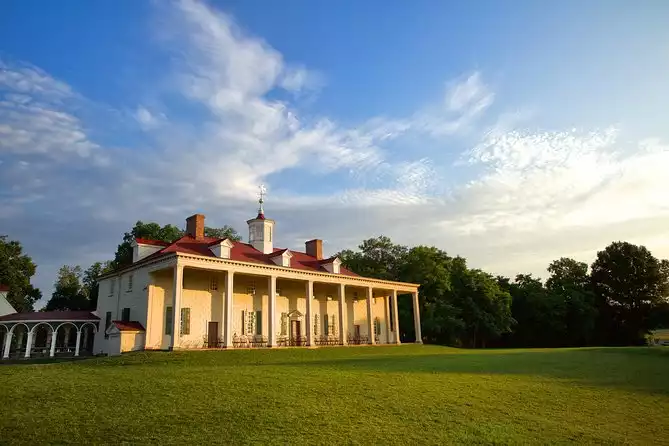
- Lowest Price Guarantee
- Reserve Now & Pay Later
- Free Cancellations (Up to 24 Hours)
Washington's Study
A highlight of the mansion tour is Washington’s Study, a private sanctuary where he managed his estate, corresponded with world leaders, and contemplated the future of the United States. During Washington’s time at Mount Vernon, very few people were granted access to what is now a common sight on the standard mansion tour.
In this original man cave, the first president of the United States freshened up, dressed, read, and wrote. The study is a treasure trove of personal artifacts, including Washington’s books and surveying equipment. While some may marvel at the unique chair Washington pedaled to fan himself during warm months, I covet the gorgeous, floor-to-ceiling, built-in bookshelf along the wall behind it.
Key to the Bastille
When you tour the central passage, the oldest part of the home where guests would wait to be welcomed by the Washingtons, your tour guide will point out the key to the Bastille, the infamous prison in France. It was gifted to Washington by the Marquis de Lafayette as a “symbol of French liberty to the father of all liberty” in 1790, shortly after the end of the French Revolution the year prior.
The Exterior of the Mount Vernon Mansion
The exterior of George Washington’s Mount Vernon is as captivating as its interior, showcasing architectural innovations and breathtaking views. Washington’s keen eye for design is evident in every aspect, from the majestic two-story back porch to the symbolic cupola atop the mansion. These features not only reflect his taste but also his vision for his beloved home.
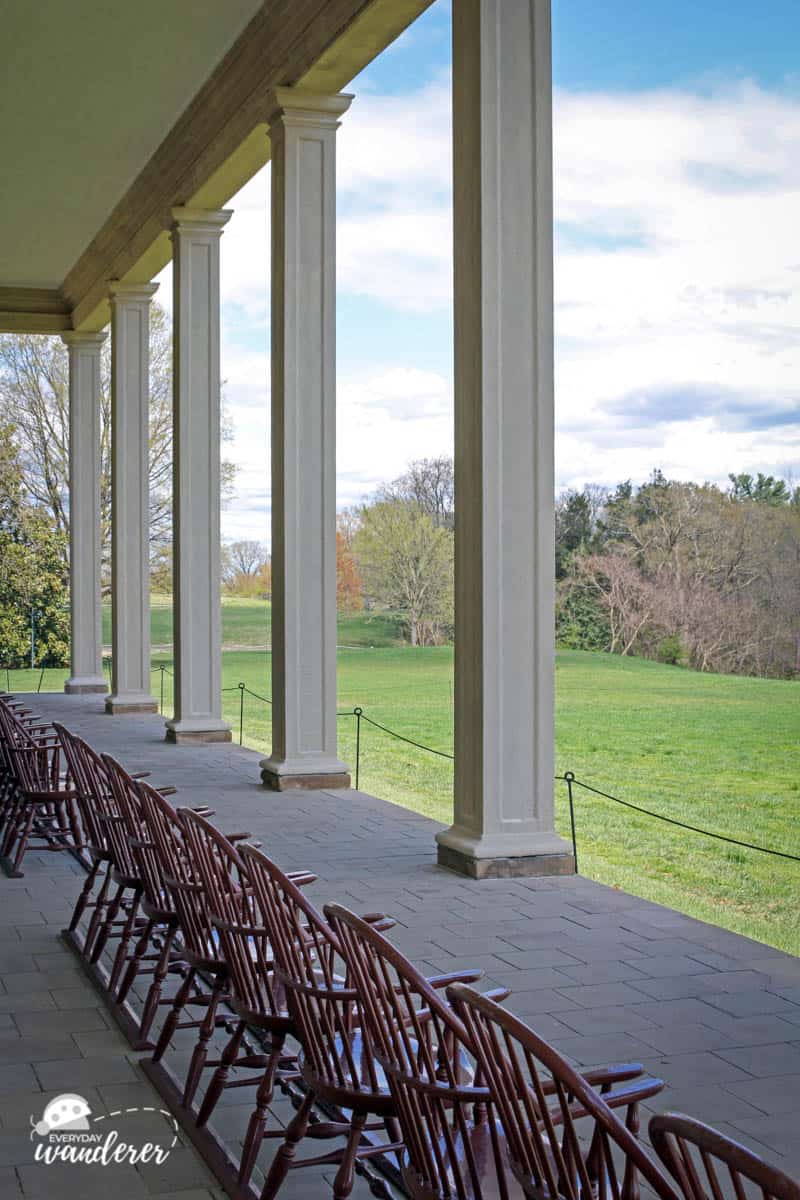
Two-Story Back Porch
The two-story back porch of Mount Vernon, stretching the entire house, is a testament to George Washington’s architectural ingenuity. With its stunning views of the Potomac River, this porch served as more than just a relaxation spot — it made a bold statement in colonial Virginian architecture with its grandeur, a rarity in 18th-century private residences. One can easily imagine Washington sitting here, soaking in his estate’s natural beauty and tranquility.
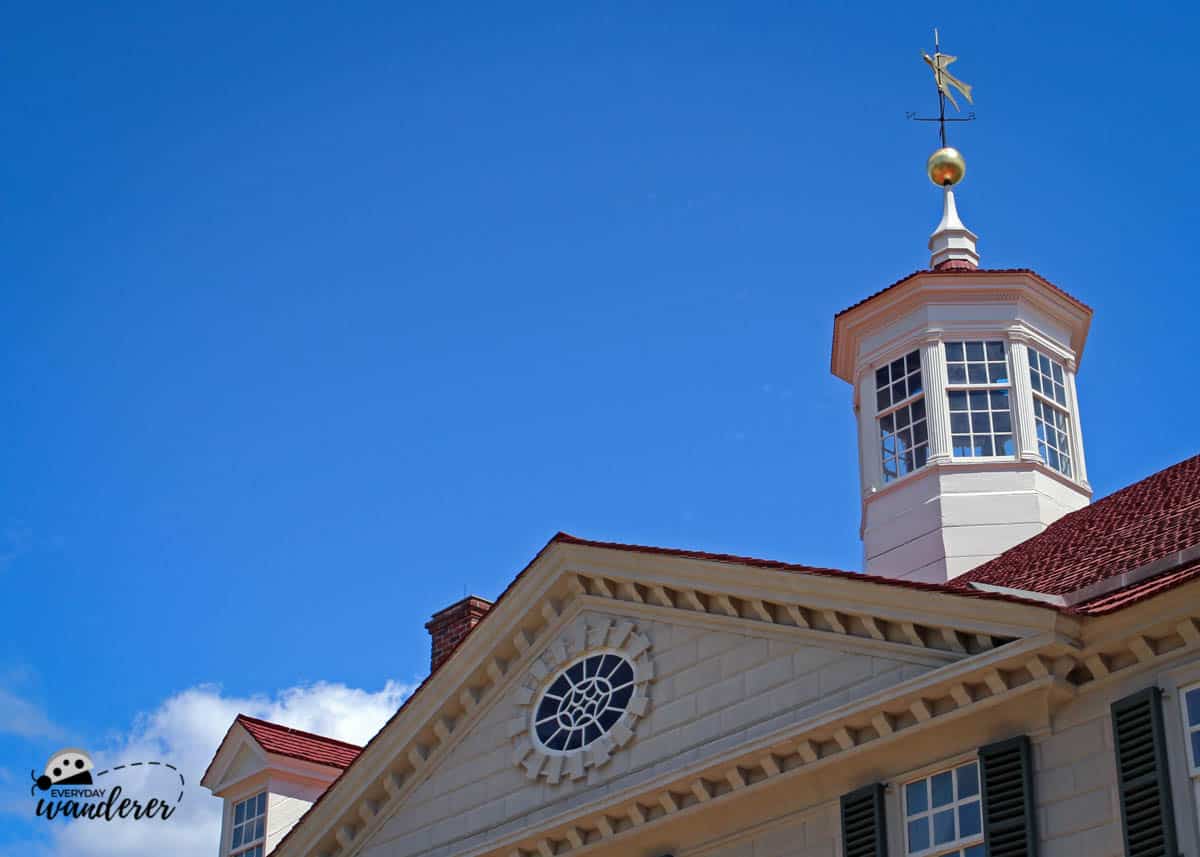
Cupola and Weathervane
This domed architectural feature, more commonly found on public buildings at the time, crowns the mansion and serves both aesthetic and practical purposes. Added by Washington partly to help cool the house by drawing hot air out, the cupola also cleverly disguises the asymmetry of the west facade.
Atop the cupola sits a weathervane, an emblem of Washington’s hope for peace in the new nation. This weathervane, depicting a dove with an olive branch, was commissioned from Philadelphia artisan Joseph Rakestraw in 1787. While the original is preserved in Mount Vernon’s collection, a replica graces the mansion today, symbolizing Washington’s aspirations for his country.
Enjoying This Article?
Sign up for the newsletter!
Thank You for Subscribing!
Outbuildings of Mount Vernon
The historic outbuildings at George Washington’s Mount Vernon are more than just functional structures; they are windows into the daily life and operations of the 18th-century estate. Each building, from the innovative greenhouse to the essential wash house, tells a story of ingenuity, labor, and life in colonial America.

The Necessary
Without indoor plumbing, where did the first president of the United States do his business? Certainly not in a typical pit toilet! The “necessary” at Mount Vernon, an elegantly designed outhouse, challenges modern perceptions of colonial amenities. Far from being a rudimentary pit toilet, this facility was ingeniously crafted with three seats and waste drawers for easy disposal, minimizing odors and flies. Its exterior, blending seamlessly with nearby structures, and its surprisingly sophisticated design, reflect Washington’s attention to detail and care for his estate’s appearance and functionality.
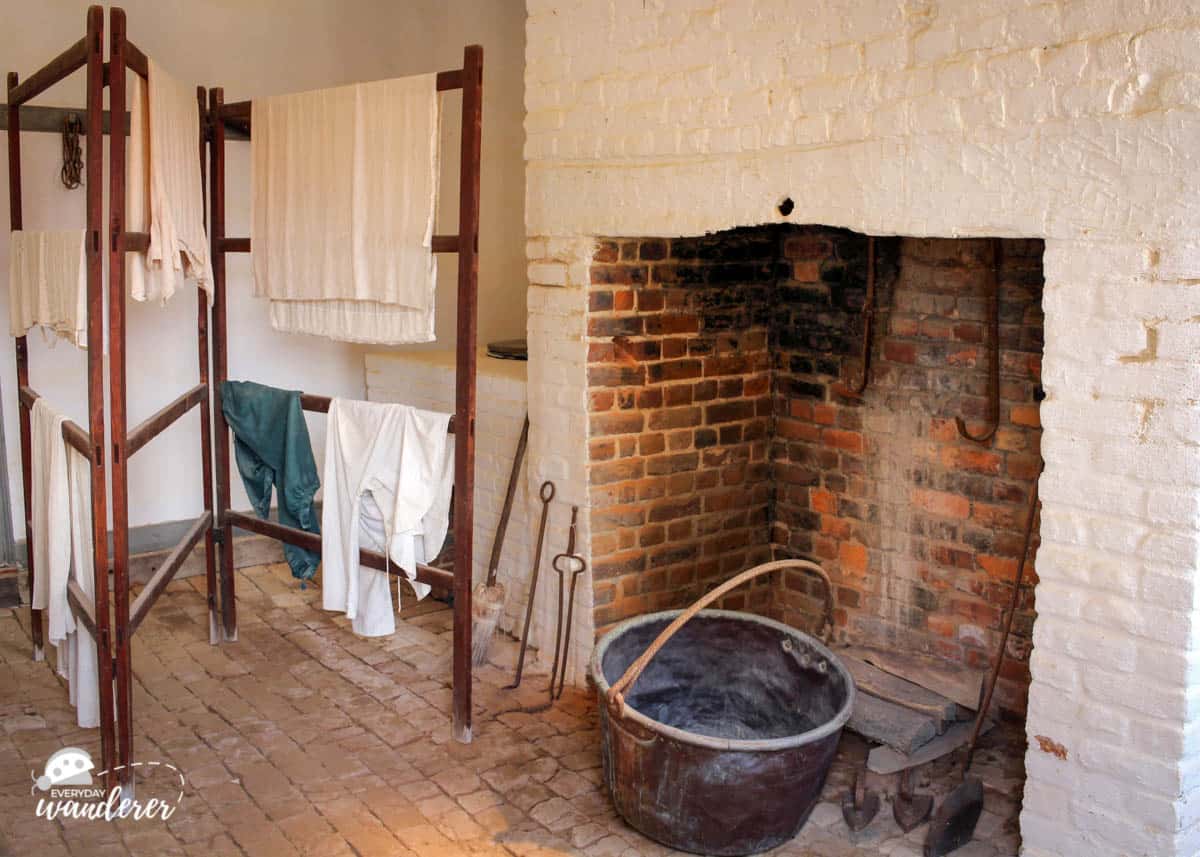
Wash House and Laundry Yard
There are few chores I hate more than doing laundry. But washing laundry back in the 18th century would have been truly dreadful. And dangerous. The wash house at Mount Vernon offers a stark glimpse into the labor-intensive process of laundry in the 18th century.
Enslaved women toiled for long hours, boiling water over open fires and hand-washing clothes. This backbreaking work, essential for the estate’s upkeep, was performed six days a week, highlighting the relentless nature of the tasks assigned to the enslaved workers. The wash house stands as a sobering reminder of the hard labor that underpinned the daily life at Mount Vernon.
Sage Advice: When you visit George Washington’s Mount Vernon, you will hear “enslaved workers” rather than “slaves.” The first time I heard the phrase, I thought the intent was to soften something ugly — like car dealers offering “previously owned” vehicles rather than “used cars.” I asked a staff member about the phrase, and he said that everyone at Mount Vernon will consistently use that term as a matter of policy. The intent is not to soften something sinister but to focus on the condition rather than categorize the individuals.

Overseer’s Quarters
The overseer’s quarters at Mount Vernon, a modest one-room structure, starkly contrasts with the grandeur of the main mansion. This building, where the overseer, who managed Washington’s farms and supervised both paid and enslaved workers, lived, reflects the vast disparity in living standards of the time. The difference in accommodation between the overseer and the mansion’s opulence is a tangible reminder of the social and economic hierarchies in colonial America.
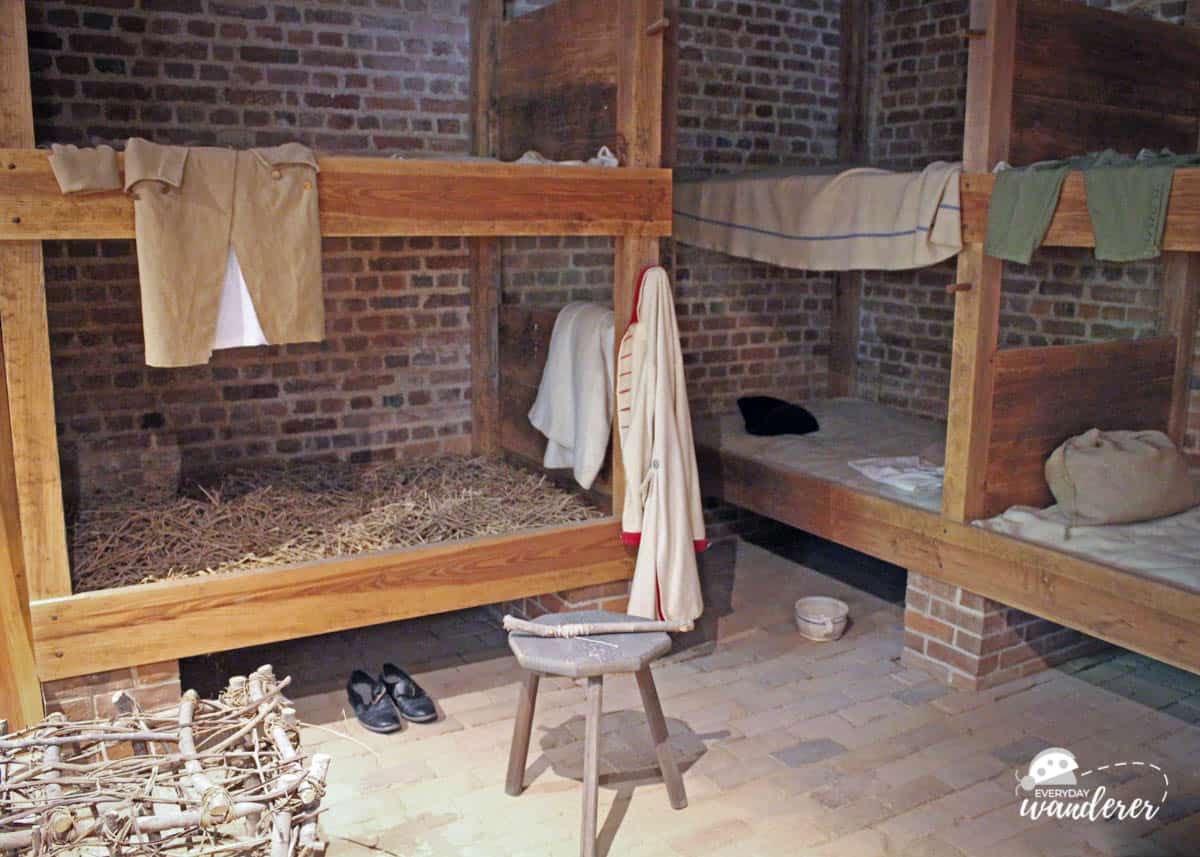
Slave Quarters
The Slave Quarters at Mount Vernon are a poignant testament to the lives of the enslaved workers who formed the backbone of the estate’s operations. Housing over 20 individuals in cramped conditions, these quarters starkly contrast with the relative comfort of the overseer’s accommodations — and even more so in comparison to the Mount Vernon mansion. The crude wooden bunks and straw mattresses speak volumes about the harsh realities faced by the enslaved, making these quarters an essential stop for understanding the complete history of Mount Vernon.
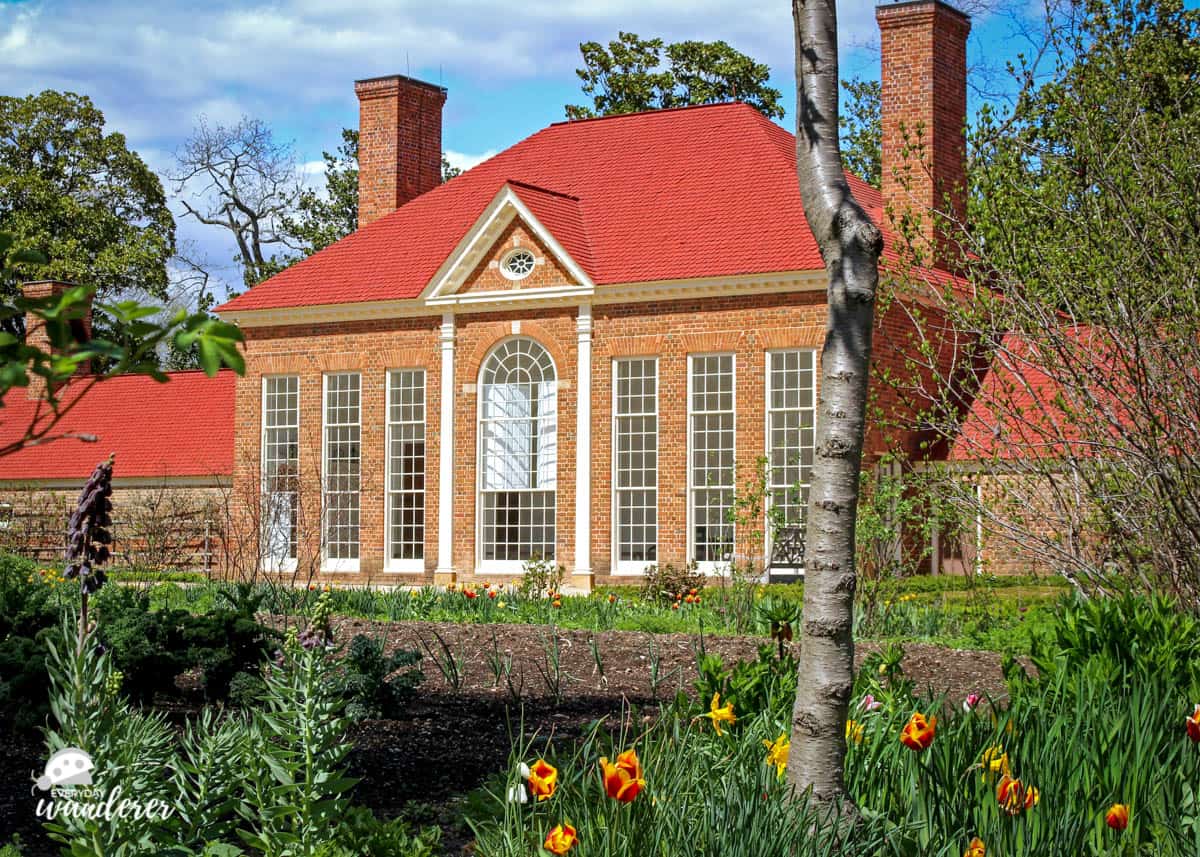
The greenhouse at Mount Vernon, a structure of both beauty and practicality, allowed for cultivating exotic plants like coffee, aloe, and citrus, even during harsh Virginian winters. Situated near the upper garden, designed for aesthetics, the Greenhouse symbolized Washington’s interest in botany and agricultural experimentation. Today, it is a reminder of his efforts to bring beauty and innovation to his estate.
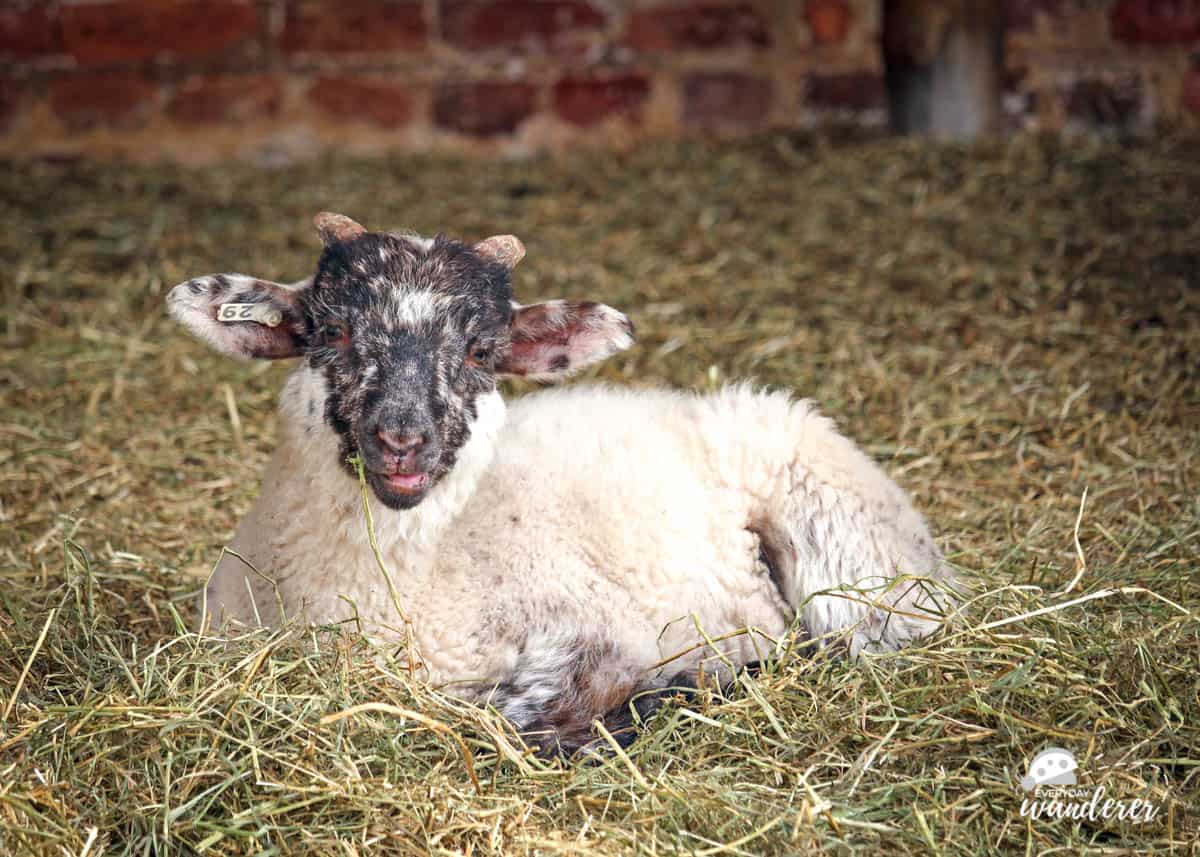
The barn at Mount Vernon is more than a practical building. It’s a place of life and activity, especially in spring when the goats and sheep at Mount Vernon proudly show off bleating kids and baaing lambs to visitors. Beyond the sight of baby animals, the warmer months also bring many bustling activities to this vibrant, working estate.
The Grounds of the Mount Vernon Estate
George Washington’s Mount Vernon grounds are as rich in beauty as in history. Strolling through these well-preserved landscapes offers a unique opportunity to connect with the past, from the meticulously maintained gardens to the historic trees that have witnessed centuries.
Bowling Green
Spreading out from the mansion’s front door, the bowling green is a striking example of 18th-century landscape design. This carefully manicured lawn was a focal point for social gatherings and leisure activities in Washington’s time. Enclosed by a winding path and flanked by impressive trees, the bowling green reflects Washington’s desire for order and beauty in his surroundings. Today, it continues to be a serene spot, inviting visitors to envision the estate as it was during Washington’s lifetime.

The beautiful gardens at Mount Vernon are a living testament to George Washington’s passion for agriculture and horticulture. The lower garden, primarily focused on producing vegetables and herbs for the kitchen, showcases Washington’s practical approach to self-sufficiency. In contrast, the upper garden, near the greenhouse, was designed for aesthetic pleasure, blooming with a variety of flowers and ornamental plants. These gardens provided food and beauty and served as a laboratory for Washington’s botanical experiments.

Historic Trees
The historic trees at Mount Vernon are silent witnesses to the estate’s storied past. These living monuments, some of which date back to Washington’s time, add a sense of continuity and timelessness to the grounds. Each tree, with its history and connection to the past, contributes to the estate’s character and is a natural link to the era of America’s first president.
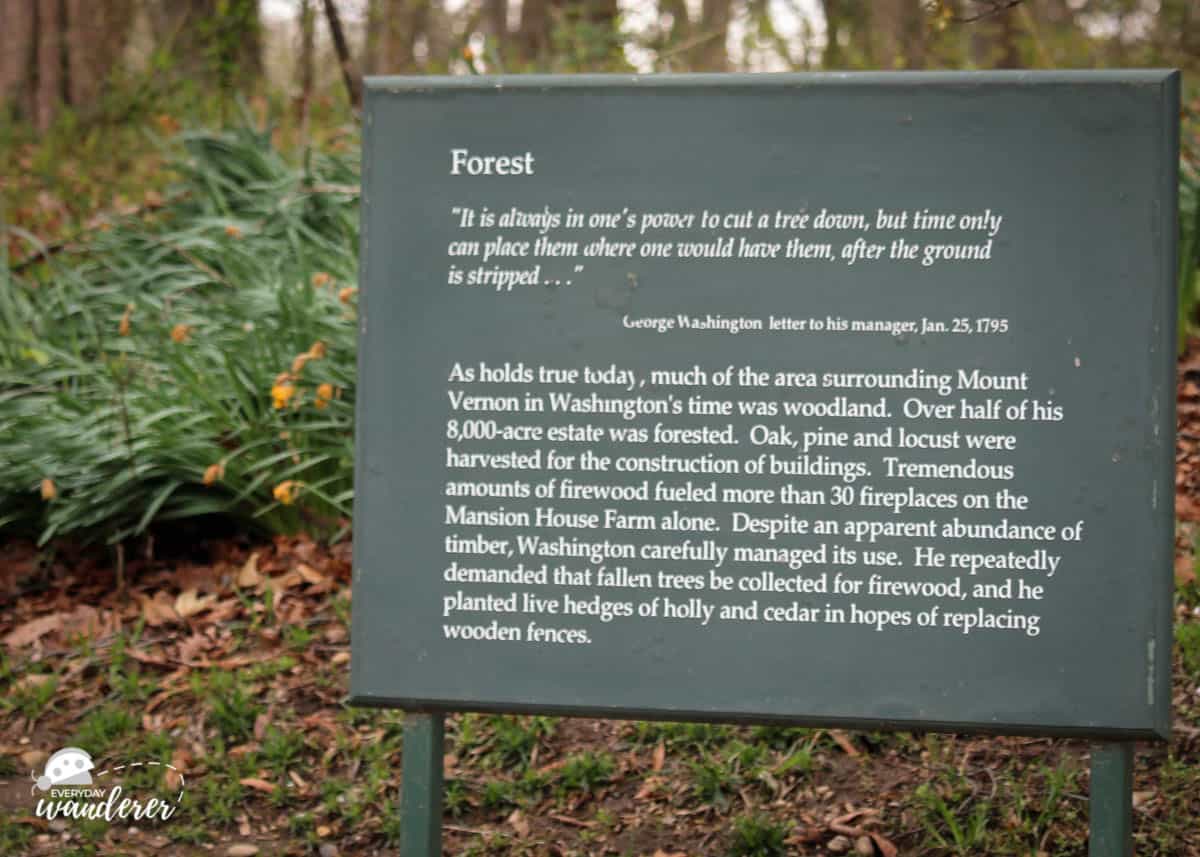
Quotes by Washington
Scattered throughout the estate are various quotes by George Washington, offering visitors a glimpse into the mind of this Founding Father. These words, etched in different locations, reflect Washington’s thoughts on everything from agriculture to personal virtues. One particularly striking quote about the forest highlights his awareness of environmental stewardship and resource conservation, showcasing his forward-thinking approach to the natural world.
Mount Vernon Inn Restaurant
When you need to refuel after exploring the vast grounds of Mount Vernon, you have a few options. For speed and convenience, there’s the Mount Vernon Food Court Pavilion. However, when we visited, it was packed with young field trippers, and my family and I wanted healthier fare. Fortunately, there’s also the Mount Vernon Inn Restaurant.
In contrast to the bustling food court, this charming eatery offers a serene and more refined dining option. My family and I especially enjoyed the inn’s famous peanut and chestnut soup, which perfectly encapsulates the essence of colonial cuisine. So, no matter what you select from the menu, I highly recommend trying it.
Sage Advice: You don’t need an admission ticket to dine at the Mount Vernon Inn, making it an ideal spot for a business lunch, a leisurely Sunday brunch, or a romantic dinner in the Washington, DC, area. The combination of historical ambiance and exquisite dishes creates an unforgettable dining experience.
Final Resting Spot of George and Martha Washington
In the southwestern corner of the estate, you’ll find the tomb of George and Martha Washington, just a short walk from the slave cemetery. These sacred spots, nestled within the serene landscape of the estate, offer visitors a moment of reflection.

Original Burial Plot
The original burial plot at Mount Vernon, situated with a tranquil view of the Potomac River, was the first resting place of George Washington, his wife Martha, and 20 other family members. Recognizing the need for repairs to this old vault, Washington’s will requested the construction of a new, larger tomb. In 1831, officials moved the bodies of George and Martha Washington, along with other family members, from the original burial plot to the new family tomb. While the old crypt no longer serves as a burial site, it remains a significant historical landmark.
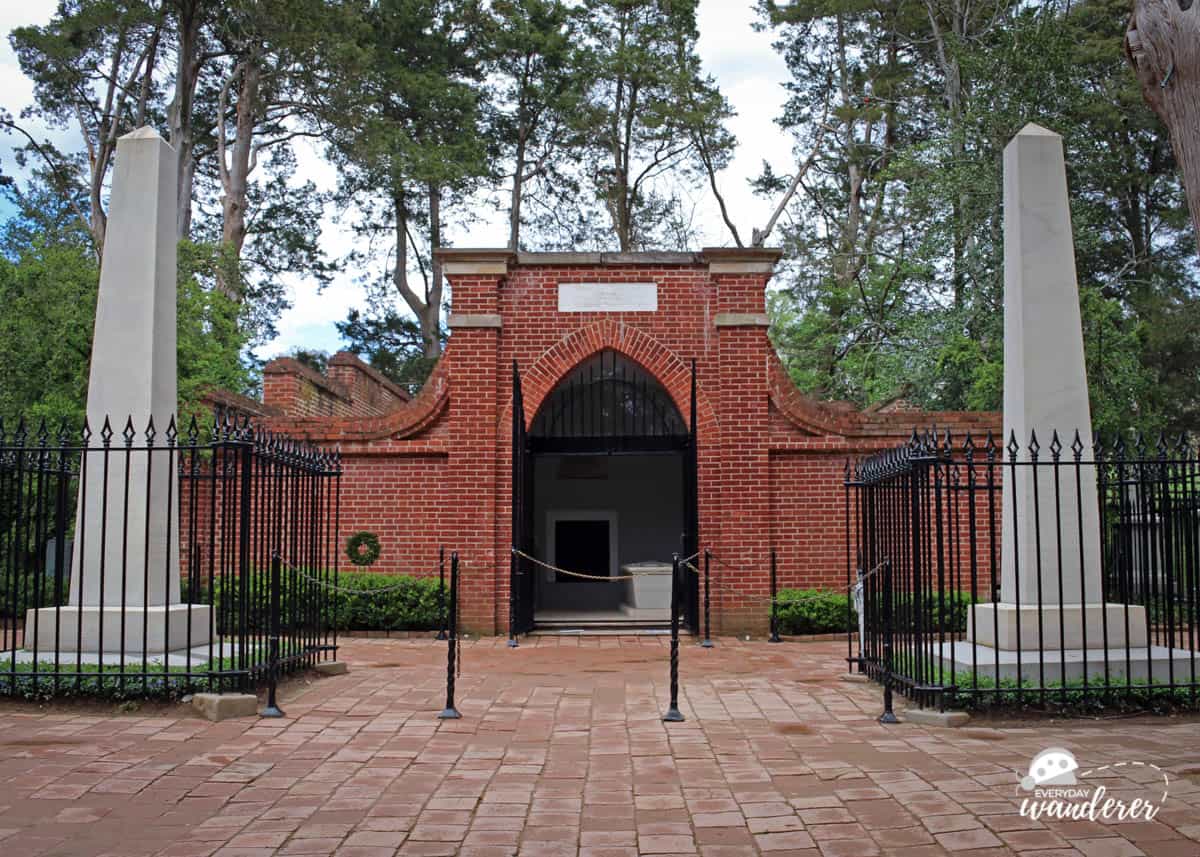
Tombs of George and Martha Washington
Today, the remains of George and Martha Washington rest in a new tomb, a dignified red brick structure flanked by two obelisks reminiscent of the Washington Monument. This final resting place, a testament to the enduring respect and honor bestowed upon the first President and his wife, draws visitors from around the world. The tomb, a symbol of the nation’s reverence for its founding figures, stands as a solemn and respectful site, inviting contemplation on the lives
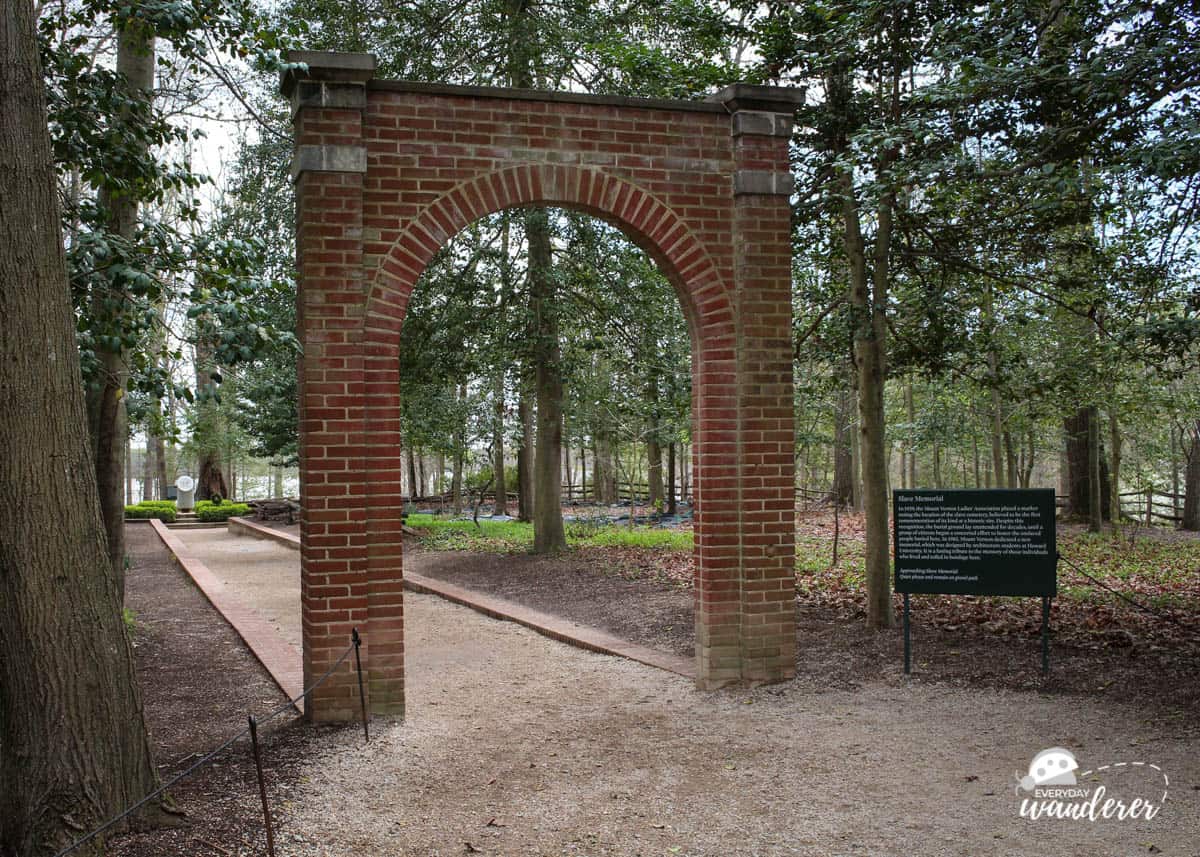
The Slave Memorial at Mount Vernon
A short walk southwest of the Washingtons’ tomb lies the Slave Memorial, a poignant and necessary acknowledgment of the enslaved individuals who lived and labored at Mount Vernon. This memorial, marked by a brick arch, leads to a cemetery where many enslaved people were laid to rest, often without the dignity of marked graves. The Mount Vernon Ladies’ Association first recognized this site in 1929, pioneering the commemoration of enslaved people at historic sites. Architecture students from Howard University designed a more fitting tribute in 1983, establishing it as a significant acknowledgment of the site’s history.
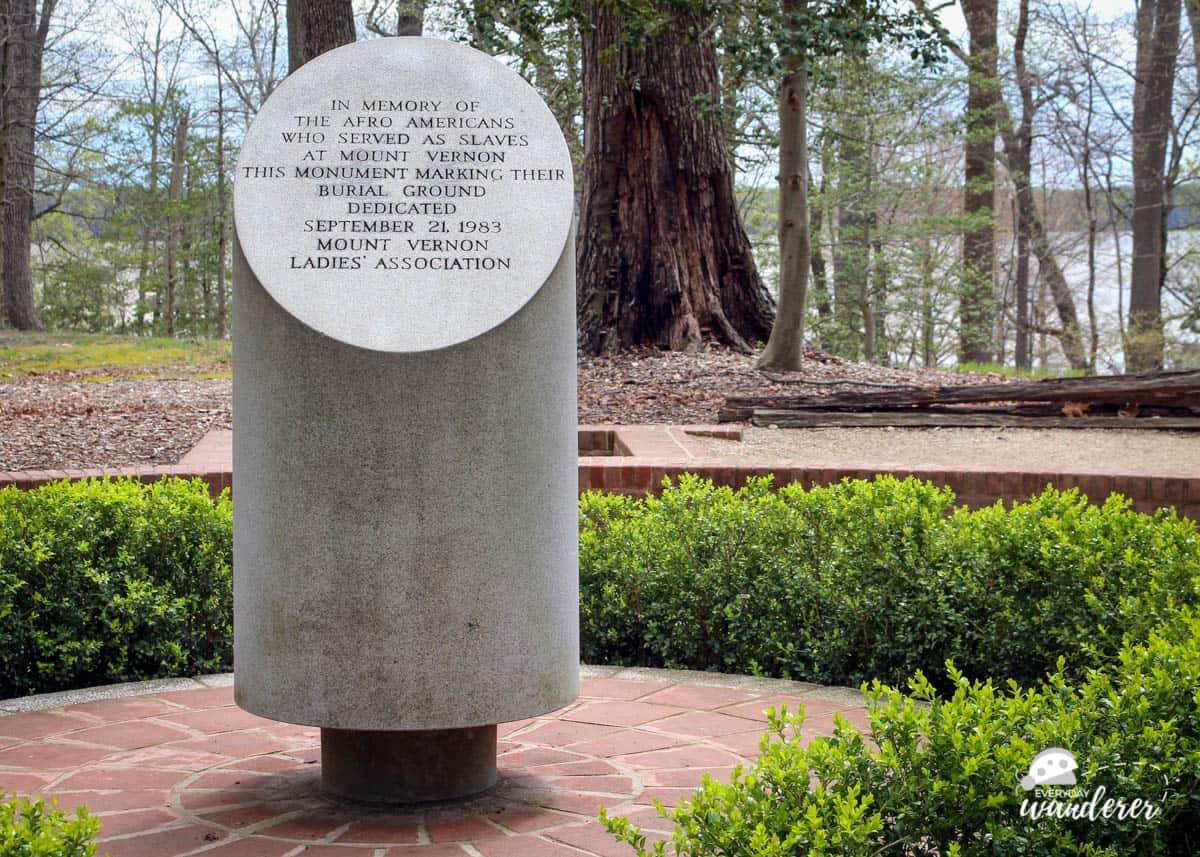
The memorial, symbolizing “life unfinished,” is a powerful representation of the unfulfilled lives and aspirations of those who endured enslavement. Three steps inscribed with the words “Faith,” “Hope,” and “Love” encircle it, representing virtues that many enslaved individuals clung to despite unimaginable hardships. This site serves as a place of remembrance and starkly reminds us of the painful complexities woven into the fabric of American history.

Museum and Education Center
With 23 galleries and theatres that share even more about George Washington’s life and the estate’s enslaved community, the Museum and Education Center is a great place to wrap up your day trip to Mount Vernon. This modern facility, equipped with interactive exhibits and rich historical artifacts, provides a comprehensive understanding of Washington’s role as a military leader, statesman, and private citizen. Visitors can delve into detailed displays that cover everything from Washington’s role in the American Revolution to his efforts in agriculture and his presidency.
The Education Center, in particular, brings history to life with its engaging and interactive approach, making it an ideal destination for learners of all ages. The center doesn’t just focus on Washington’s achievements but also addresses the complexities of his time, including slavery at Mount Vernon. By offering a balanced and nuanced view of history, the Museum and Education Center ensures that visitors leave with a deeper, more informed understanding of one of America’s most pivotal figures and the era he shaped.
To Visit George Washington's Mount Vernon
Planning a visit to George Washington’s Mount Vernon is an opportunity to step into a pivotal piece of American history. This iconic estate, nestled along the Potomac River, offers a unique glimpse into the life and legacy of the first President of the United States. Here are answers to frequently asked questions as you plan your visit.
Where is George Washington’s Mount Vernon?
George Washington’s plantation home is about 16 miles south of Washington, DC, and about eight miles south of Old Town Alexandria.
The street address is 3200 Mount Vernon Hwy., Mount Vernon, Virginia.
What is the Phone Number for Mount Vernon?
You can reach George Washington’s Mount Vernon by phone at 703.780.2000.
What's the Best Way to Get to Mount Vernon from DC?
To reach mount vernon by car.
How to Use This Map
- Zoom in or out using the + and – keys in the bottom right corner.
- Click the “More options” text link in the upper left corner to open this embedded map in a new browser window and take advantage of more options including the ability to send these directions to your phone.
To Reach Mount Vernon Using Public Transportation
You Can Also Visit Mount Vernon with a Tour from Washington DC
- This day trip to Mount Vernon from Washington DC includes a guided tour of Old Town Alexandria, a stop at the US Marine Corps War Memorial, and an hour at George Washington’s Mount Vernon.
- Or visit Mount Vernon in style with a private tour of George Washington’s estate and other historic sites tailored to your interests and preferences.
How Much is Parking at Mount Vernon?
There is no fee to park at Mount Vernon.
Can You Get to Mount Vernon on the Metro?
Unfortunately, the Metro will only get you part of the way to Mount Vernon. To use public transportation to reach Mount Vernon, take the Metro to Huntington Station (yellow line) and connect to bus #101 which will stop at the entrance to Mount Vernon.
What Time Does Mount Vernon Open?
From April through October, Mount Vernon is open daily from 9:00 am to 5:00 pm. The other months of the year, Mount Vernon closes at 4:00 pm.
How Much is Admission to Mount Vernon?
Standard adult admission to Mount Vernon is currently $28. The ticket includes a one-day grounds pass and a timed entry, guided tour of the mansion. Mount Vernon offers discounts to children, military members, first responders, and medical professionals. Children under five can visit for free.
What Does a General Admission Ticket to Mount Vernon Include?
How many acres is mount vernon.
Although George Washington’s home once covered approximately 8,000 acres in the 18th century, today the site covers 500 acres along the Potomac River in Northern Virginia.
Did George Washington Build Mount Vernon?
George Washington did not build Mount Vernon, but he greatly expanded and improved the estate. The mansion was originally built by his father, Augustine Washington, in 1734, and George inherited it later, significantly enlarging and enhancing the property over several decades.
How Did George Washington Get Mount Vernon?
George Washington inherited Mount Vernon after the death of his half-brother Lawrence Washington and, subsequently, his widow. Initially, George leased the property from Lawrence’s widow, but he eventually inherited it outright after her death.
Is George Washington Buried at Mount Vernon?
Yes, George Washington is buried at Mount Vernon next to his wife, Martha. You can pay your respects when visiting Mount Vernon.
Where is George Washington's Tomb?
You’ll find the tombs of George and Martha Washington in the southwestern portion of the estate, situated between the fruit garden and nursery and the slave memorial.
What are the Best Places to Stay Near Mount Vernon?
For an apartment-like stay at an affordable rate, Stay APT Suites in Alexandria can’t be beat. The Hampton Inn & Suites in Alexandria is another great accommodation in Northern Virginia with convenient access to Mount Vernon and other popular sights in the Washington, DC, area. Or check out these other highly-rated hotels near Mount Vernon .
Have You Visited George Washington's Mount Vernon?
What did you do and see? Any advice you’d share with travelers planning their visit? Share your thoughts in the comments section below.
Ready to Go? Use These Helpful Links to Book Your Trip!
- Find low fares with airfarewatchdog and Skyscanner
- Book your plane ticket with Expedia or Kayak
- Or take the scenic route on an epic road trip in a rental car or an RV from Outdoorsy
- From hotels to private homes, find the perfect accommodation with Hotels.com or Vrbo
- Travel in style with a suitcase, carry-on, backpack, or handbag from eBags
- Save on tickets to attractions, sightseeing tours, and more with CityPASS , Tiqets , and Viator
- Don’t leave home without travel insurance from AXA
- Discover the sights, history, and culture of your destination with an interactive scavenger hunt
- Need something else to plan your perfect trip? Visit my travel resources page for more trusted partners. Happy wandering!
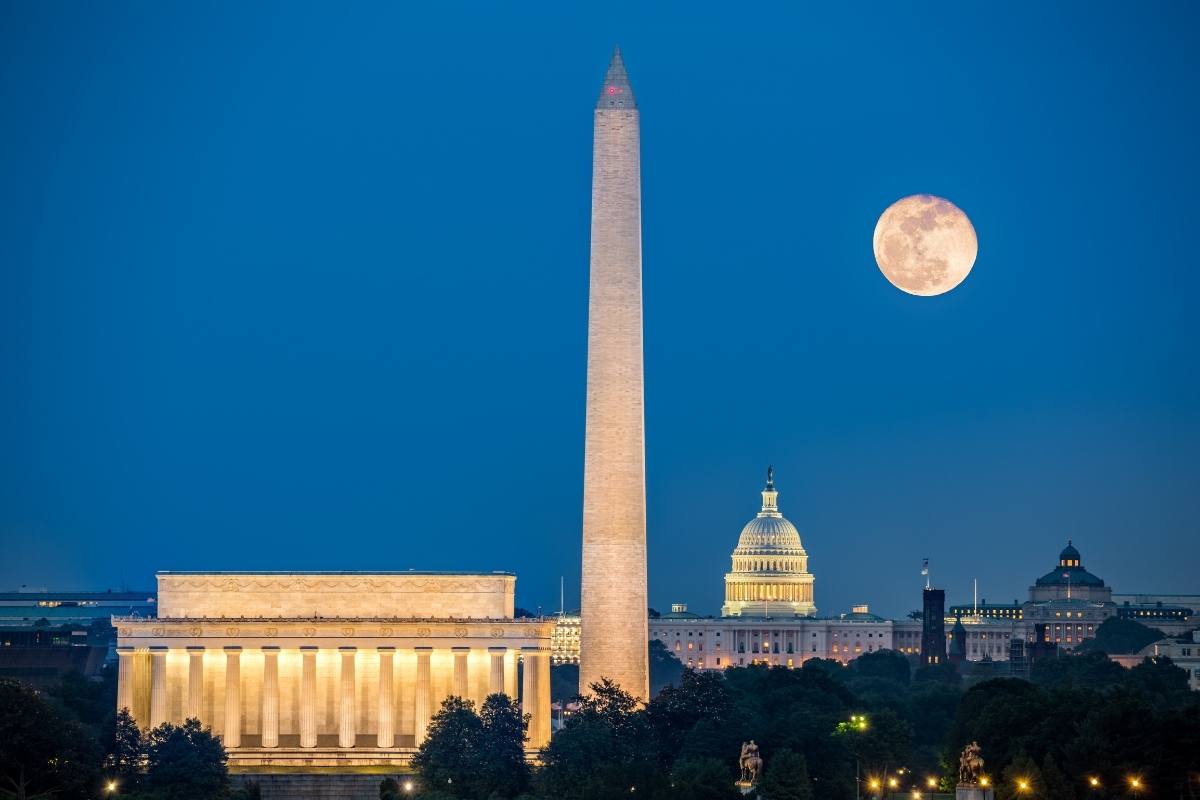
Looking for more information to plan your Washington DC vacation? Check out my additional recommendations to help you plan your trip to Washington, DC , including what to see and do in Washington DC, the best places to stay in Washington DC, where to eat in Washington DC, and more!
Thank you for sharing!
9 thoughts on “DC Day Trip: Visiting George Washington’s Mount Vernon”
Took my kids on a field trip to Mount Vernon last weekend. The estate is well-preserved, and the staff does a great job bringing history to life for all ages. A must-visit for history enthusiasts!
I visited Mt. Vernon 2 years ago by myself . I am now getting to share the experience with my 11 year old grandson. I was able to participate in a very moving wreath ceremony at the Slave Memorial and learned about George freeing his slaves. However, Martha’s slaves were not freed and upon her death were divided among family members by value.
I was so surprised to learn that George Washington had freed his slaves upon his death but heartbroken to learn that Martha didn’t follow in his footsteps (and the way that tore loved ones apart). Did you read my article about the Arlington House? Such fascinating history (and it has a tie back to George and Martha Washington!)
I’m a bit conflicted on visiting sites like this one because of the strong historical ties to my lineage. I go because I need to know the history, but I never feel uplifted, so I always have to mentally prepare for what I’m going to see. The stark difference between how the enslaved people lived compared to the people they were forced to serve. It’s a fantastic lesson in where we have come as a country, but also constant reminder that we still have a long way to go.
I really appreciate you sharing your perspective. While I don’t have the same personal connection you do as an African American, I agree with your comments 100%. America gained her independence from England nearly 250 years ago, yet our children are still primarily taught the white European male version of her history. And I really have a tough time glorifying historical figures who owned slaves, slaughtered Native Americans, sent Americans citizens of Asian ancestry to concentration camps, treated women as second-class citizens, etc. Yes, we’ve come along way. But, man, do we still have a long way to go. I hope I’m doing my part to shine a spotlight on these parts of our history by including them in my articles.
Wow there are so many things to see here! I bet it was quite sad as well as interesting. Seeing the slave quarters must have been upsetting.
While I really enjoyed our day at Mount Vernon, I did feel like there was sadness that hung over everything for me as I envisioned 300 enslaved people supporting the lives of 5 rich, white landowners. I thought of them when I gazed at the amazing mansion and the beautiful gardens and had to fight back tears when I saw their living conditions in the slave quarters and their final resting place.
That was life back then, as long as we learn from those mistakes, then we are good.
I agree. Not learning valuable lessons from history is a tragic mistake. Thanks for stopping by!
Leave a Comment Cancel Reply
Your email address will not be published. Required fields are marked *
Get the latest articles delivered to you!
Thank You! You have successfully joined our subscrib er list.
MEET SAGE CONTACT US MEDIA KIT
DESTINATIONS
Travel interests.
ANIMAL ENCOUNTERS FOOD AND WINE GREAT OUTDOORS MUSEUMS AND MORE NATIONAL PARK SYSTEM ROADSIDE ATTRACTIONS SEASONAL TRAEL STREET ART TRAVEL PLANNING
TRAVEL RESOURCES
COMPANIES I USE TRAVEL GUIDES
LET'S CONNECT!

Disclosure Statement
To help offset the costs of running EverydayWanderer.com, you’ll find affiliate links lightly sprinkled throughout the site. If you choose to make a purchase via one of these links , there’s no additional cost to you, but I’ll earn a teeny tiny commission. You can read all of the legal blah blah blah (as my little niece says) on the full disclosure page .
Copyright © 2023 | Made with love in Kansas City by Sage Scott | Privacy Policy

- Destinations
16 Best Things to Do in Mount Vernon, WA
Last Updated By VI on April 23, 2024 in Day Trips in Washington State
Little Mountain Park
Lincoln theatre, the skagit valley tulip festival.
- See the Complete List

15002 Bradshaw Rd, Mt Vernon, WA 98273, Phone: 360-424-8152

Little Mountain Park is a spacious public park stretching for 522 acres just south of Mount Vernon's city limits, at the base of lovely Little Mountain, which reaches elevations of nearly 1,000 feet above sea level. The park, which is the largest city park in Mount Vernon, is accessible via a 1.5-mile paved road, which provides stunning panoramic views of the surrounding Skagit Valley, San Juan Islands, and Olympic Mountains at its summit. It is known as a top spot for hang gliding throughout the year and a prime viewpoint for viewing the region's tulip fields in bloom during the spring months. Approximately four miles of hiking trails are offered throughout the park, which is also home to charming walking paths, a protected nature area, and day-use picnic tables.

712 S 1st St, Mt Vernon, WA 98273, Phone: 360-336-8955

311 W Kincaid St, Mt Vernon, WA 98273
Bay View State Park

10901 Bayview Edison Rd, Mt Vernon, WA 98273, Phone: 360-757-0227
Skagit Wildlife Area

21961 Wylie Rd, Mt Vernon, WA 98273, Phone: 360-445-4441
Padilla Bay National Estuarine Research Reserve

10441 Bayview Edison Rd, Mt Vernon, WA 98273, Phone: 360-428-1558
Pasek Cellars

2615 Old Highway 99 South, Mount Vernon, WA 98273, Phone: 360-445-4048
Tulip Valley Winery

16163 WA-536, Mt Vernon, WA 98273, Phone: 360-428-6894

Littlefield Celtic Center

1124 Cleveland Ave, Mt Vernon, WA 98273, Phone: 360-416-4934
Taste of India

420 W Gates St, Mt Vernon, WA 98273, Phone: 360-428-2866
Max Dale's Steak and Chop House

2030 Riverside Dr, Mt Vernon, WA 98273, Phone: 360-424-7171
Bakerview Park

3101 East Fir Street, Mount Vernon, Washington, Phone: 360-336-6215
The Mexico Cafe

1320 Memorial Hwy, Mt Vernon, WA 98273, Phone: 360-424-1977
Schuh Farms

15401-15143 Memorial Highway, Mount Vernon, Washington 98273, Phone: 360-424-6982
Gordon Skagit Farms

15598 McLean Road, Mount Vernon, Washington, Phone: 360-424-7262
- 1. Tulip Town
- 2. Little Mountain Park
- 3. Lincoln Theatre
- 4. The Skagit Valley Tulip Festival
- 5. Bay View State Park
- 6. Skagit Wildlife Area
- 7. Padilla Bay National Estuarine Research Reserve
- 8. Pasek Cellars
- 9. Tulip Valley Winery
- 10. Littlefield Celtic Center
- 11. Taste of India
- 12. Max Dale's Steak and Chop House
- 13. Bakerview Park
- 14. The Mexico Cafe
- 15. Schuh Farms
- 16. Gordon Skagit Farms

Delightful wineries showcase the bounty of the region's vineyards, crafting wines and hard ciders from Pacific Northwest grapes and fruits. Visitors can also take in film screenings and live theatrical performances at the historic Lincoln Theatre, home to one a preserved vintage Wurlitzer silent film organ.
More Features

12 Best Overwater Hotel Pools

22 Best Things to Do in Everett, WA

12 Best Things to Do in Oak Harbor, WA

- About Us/Contact Us
- Privacy Policy
- Terms of Service

- The History List 250
- Listing Your Event
- Conferences + Courses
- Sign-Up for An Account
- Sign-Up for Newsletter
Visiting George Washington’s Mount Vernon—A Guide for History Lovers
George washington’s mount vernon ( mountvernon.org ).
3200 Mount Vernon Memorial Highway Mount Vernon, Virginia 22121
Insider tips and recommendations from fellow history lovers as well as current and former employees and volunteers—thank you to all our contributors!
George washington’s beloved mount vernon began as a one and one-half story farmhouse built in 1735 by his father, augustine, and received its well-known name during the ownership of his half-brother lawrence. george acquired mount vernon in 1754, and over the next 45 years slowly enlarged the dwelling to create the resplendent 21-room residence we see today. washington personally supervised each renovation; advising on design, construction and decoration—even during the revolutionary war. conscious that the world was watching, washington selected architectural features that expressed his growing status as a virginia gentleman planter and ultimately as the leader of a fledgling democratic nation..
[ George Washington’s Mount Vernon ]
Planning your visit
- Don’t go to “Mount Vernon expecting to be entertained—it’s just a house. The excitement comes from treading in places where history was made.” It is ideal to take “the time to sit in the seats on the veranda to relax and take in the sites and settings” because “Mt. Vernon is not a rush to fit-it-all-in place, but one for strolling, observation, and contemplation.”
- Use the site to plan your trip so that you’re able to take in one of their special events . They have different events throughout the year that would appeal to different people. The website is incredibly helpful with calendars, maps, information about the surrounding area, and so on. Also, you’ll want to check that something you want to see will be available/open when you plan to go. ( Brandi Allen )
- Buy your tickets online to get a discount on general admission tickets , skip the long lines at the ticketing booth and to be able to select a tour time for the Mansion Tour. Buy a timed admission ticket for the first tour of the day. ( Caron Chapman-Case ) See the next section for which tour you should take.
- They also have the special tours at the end of the day that are well worth it. But they fill up fast, so be sure to sign up well in advance.
- Download the Mount Vernon app for iPhone or Android. With it you can listen to descriptions while you tour without renting a recording device. It includes a Plant Finder and much more.
- Go on a dry day since there are many dirt trails that could get muddy.
- Wear comfortable shoes and wear sunblock as some areas are not shaded.
- Bags should be no larger than 16 x 16 x 8 inches.
- Be prepared to walk a lot and bring water as it can get hot on the trek. Although there is a courtesy shuttle that will take you around the estate from April to October.
- Photography inside the house is not allowed.
When to visit
- Most crowded months: April – July 4
- If you are visiting during a peak period , arrive after 1 pm on Tuesday, Wednesday, or Thursday.
- Best months to visit: January to February and September to October. Less crowded, and usually pleasant weather. [Sangeeta Ranade adds that “MV has tour groups come through every single day of the week. Mid-March through July 4 will always be incredibly busy. January/February and the first week of September are the slowest times and then the summer isn’t too chaotic.]
- There are different views on whether coming in the morning is a good idea, especially when school is in session, tour groups come through every single day of the week. Visiting during the summer are less chaotic.
- Some recommend going after Thanksgiving . That is when they have the Christmas camel on display and the pardoned Thanksgiving turkeys. The mansion is decorated for the holidays and they had people in period costumes outside with hot cider. ( LaRae Hardin Park and Nancy Delia )
To read and watch in advance
- George Washington: A Life by Ron Chernow describes how George Washington rebuilt the house and how he ran the farm. ( Rob Michael)
- George Washington’s Mount Vernon website has an array of excellent videos on various topics and for many age levels . Ongoing archeological excavations and historical research is continuing to add to the narrative of those who lived and worked at Mount Vernon and is providing new insight to individuals—both enslaved and free—who are absent from written records.
Selecting the tour or tours to take
- A general admission ticket gives you access to the famous mansion, the beautiful view across the Potomac River, all the surrounding colonial buildings, Washington’s amazing gardens, the tombs, the farm, and the museum filled with Washington treasures.
- Free showings of several Mount Vernon films are included in the general admission ticket and takes place daily in Robert H. & Clarice Smith Auditorium, in the Ford Orientation Center and in the Museum and Education Center.
- The estate has moved to a timed ticketing system for the Mansion , so visitors can better spend their time exploring the grounds and not waiting in line. Depending on the number of guests each day, the tour can last between 15 to 35 minutes.
- Tours may be shortened during busy periods. A Premium Mansion Tour is recommended for a more in-depth, guided exploration of the Mansion to see areas not normally open to guests. ( Csc Adams and Melissa Wood )
- Everyday, a brief wreath-laying ceremony takes place at the Washingtons’ Tomb.
- Take the National Treasure Tour which takes you through the basement of the home and down to the waterfront.
- Experience Mount Vernon from a different perspective on a Sightseeing Cruise of the Potomac .
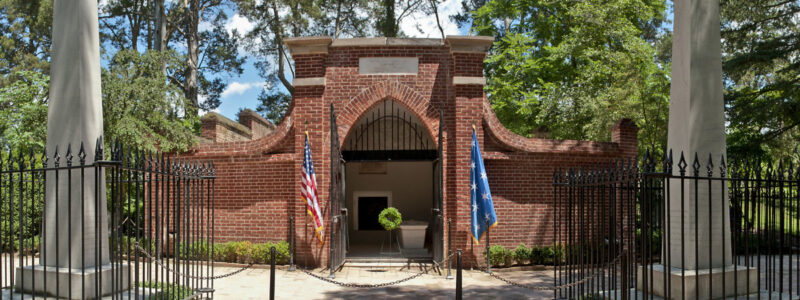
When you visit
- If you don’t have a car , go on a weekday when the Fairfax Connector buses run more frequently. Only take the 101 bus, travel time is around 30 minutes from Huntington metro.
- No outside foods or drinks are allowed, except for water . Food may be purchased at the Food Court Pavilion or at the Mount Vernon Inn Restaurant .
- If you can trail behind the tour group in the house to ask questions of the staff, you will get a lot more out of your visit. ( Kathleen Melanson Coulter )
- It’s possible to visit his Gristmill and Distillery which is open from April to October, by riding the shuttle as it’s only a few miles away.
- Make sure to visit the House for Families and all of the buildings surrounding the mansion like the blacksmith, etc. Walk the gardens, view the Potomac from the veranda, and visit the museum.( Jenny Lynn ) All of these are included in the general admission ticket.
- Go ahead and enjoy the restaurant . They serve colonial-era recipes, such as George’s favorite breakfast cakes.
- Don’t miss the gift shop either as it has great things to purchase that aren’t your typical cheap items. They have a great selection of wine from their vineyard.
Especially for kids
- Ask for a kids map , it has questions/puzzles on it and when completed turn it into the gift shop for a small prize. ( Stephanie Burbol )
- Take the kids to the farm area and allow them to interact with the live animals many of which are the same breeds raised in Washington’s time, including Ossabaw Island Hogs, Hog Island Sheep, Dominique Chickens, and Red Devon Cattle. Mount Vernon is also home to horses, mules, and oxen.
- Mt. Vernon has a new app, Agent 711: Revolutionary Spy Adventure , where kids can become a spy for Gen. Washington and can go undercover to test their spycraft skills as they explore the grounds of Mt. Vernon.
- Make time for the Hands-on-History Center where kids can dress up in 18th century clothing, play with the Mt. Vernon dollhouse, play 18th century games, puppets, and puzzles.
- In the Museum and Education Center, head over to the Revolutionary War Theater to watch the 4D movie, General Washington, Commander in Chief . This is a 20-minute immersive experience with smoke, fog, snow and vibrating seats! If you’re short on time, head there first to get in line and watch the film, then spend the remainder of your time visiting the exhibits.
- Other highlights of the museum include George Washington’s false teeth, wax figures of George at different ages, and many interactive exhibits.
Images and video courtesy of George Washington’s Mount Vernon.
Share This Story, Choose Your Platform!
Sign me up!

- George Washington
- Martha Dandridge Custis Washington
- Mount Vernon
- US Presidents
- US–Virginia
Related Posts

The American Revolution Museum at Yorktown

The Museum of the American Revolution, Philadelphia, PA
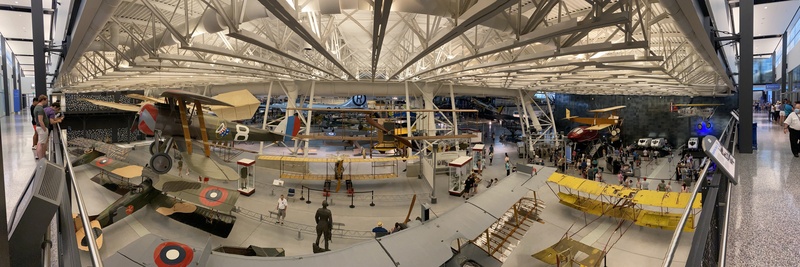
Steven F. Udvar-Hazy Center, Smithsonian Institution, Chantilly, VA
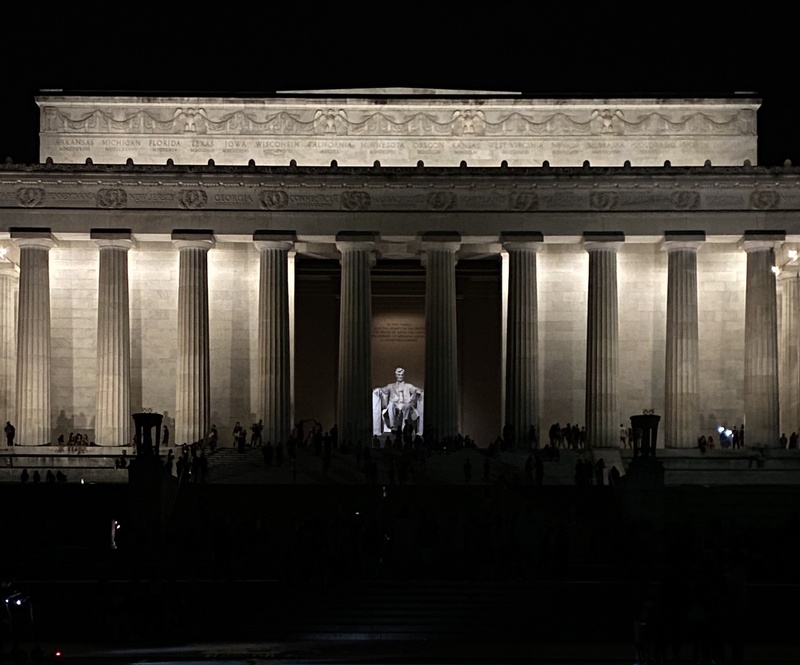
The Lincoln Memorial at 100
The History List On the Road—Fort Ticonderoga
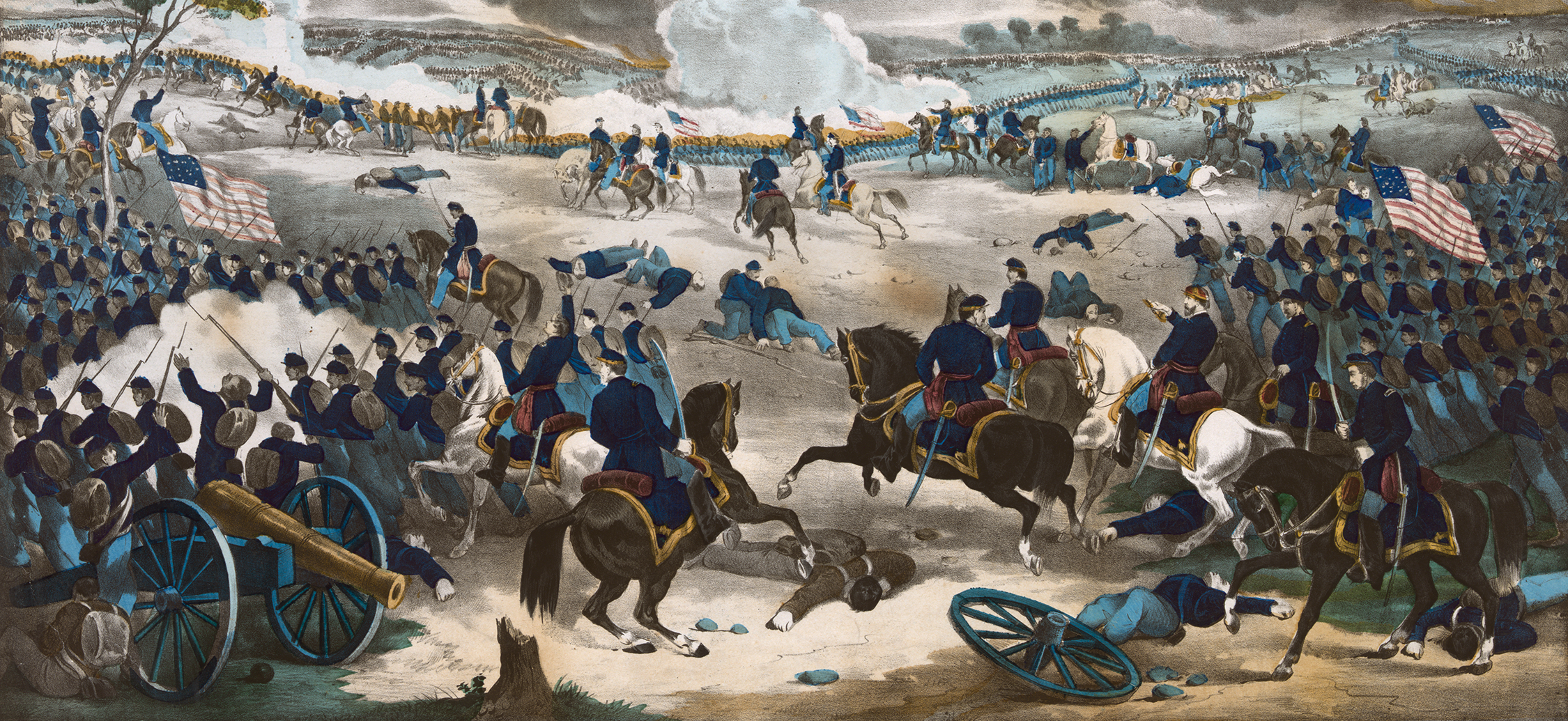
155th anniversary of the Gettysburg Address on November 19, 2018
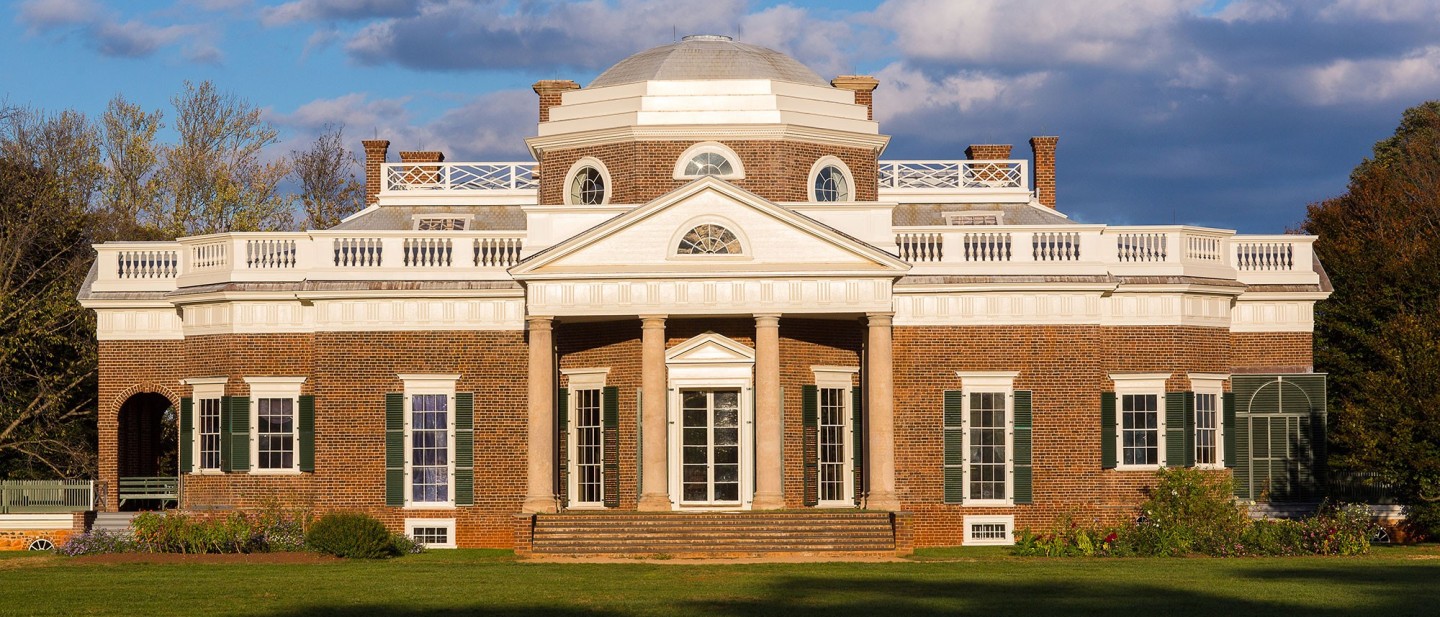
Visiting Thomas Jefferson’s Monticello—A Guide for History Lovers
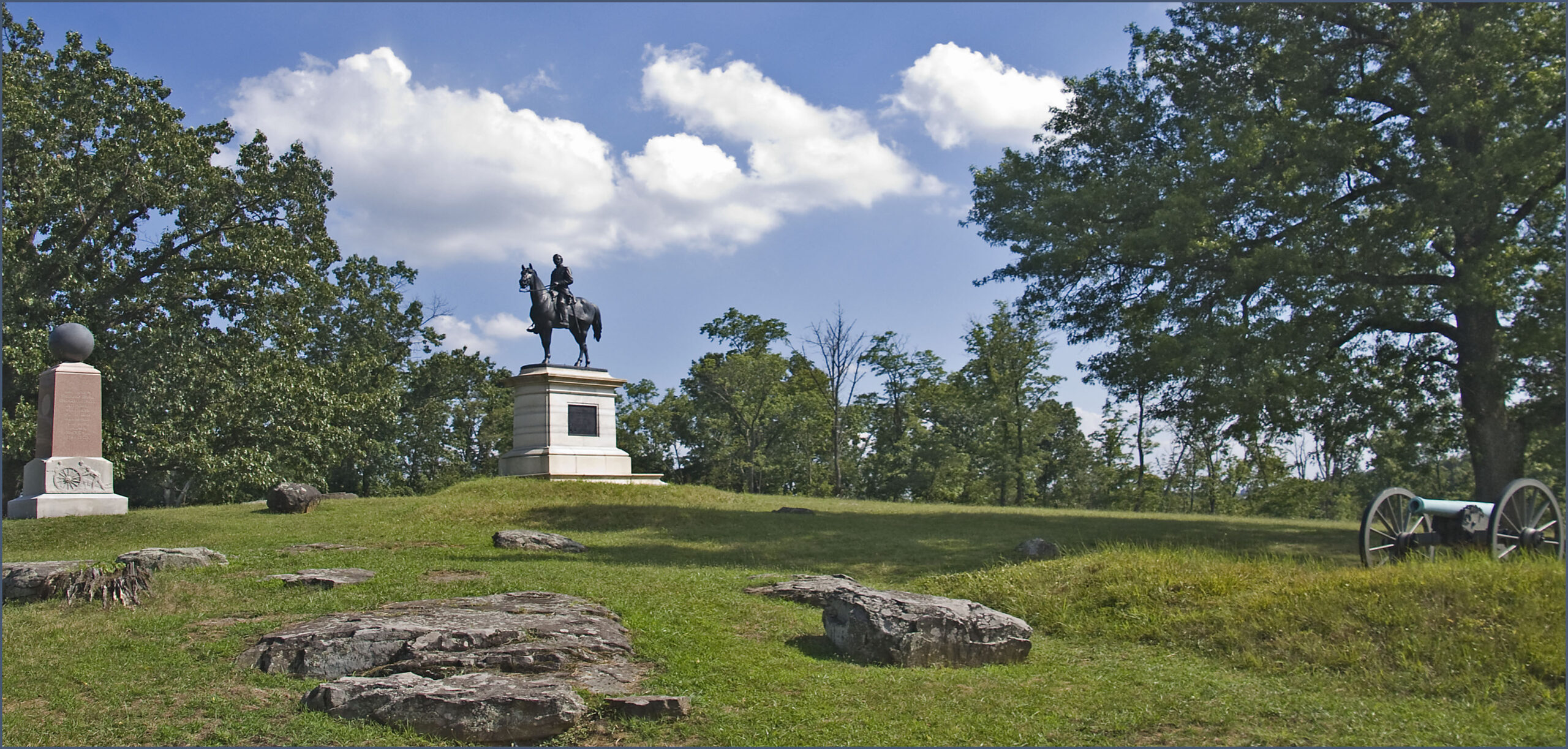
Visiting Gettysburg National Military Park—A Guide for History Lovers
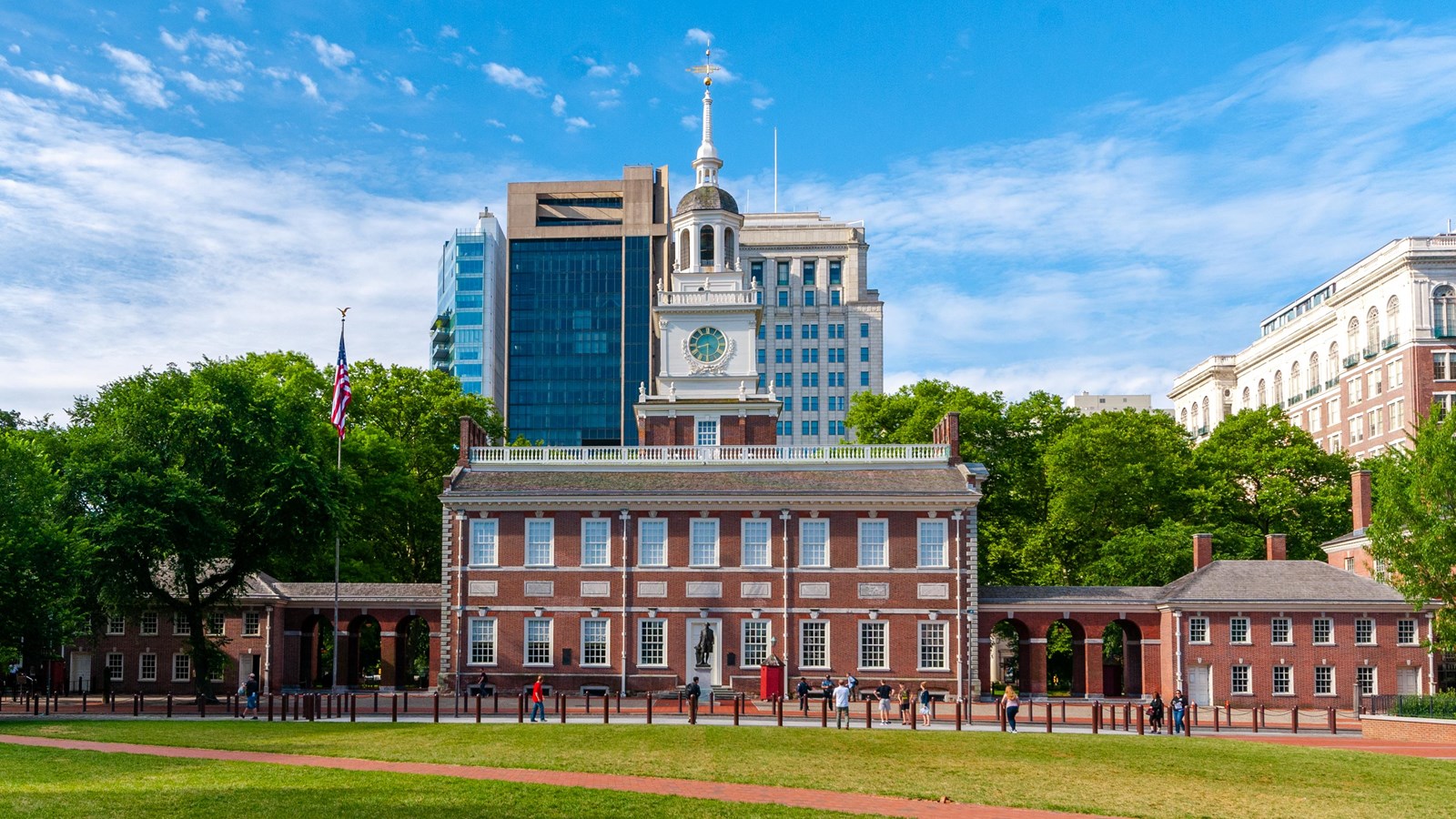
Visiting Independence National Historical Park—A Guide for History Lovers

Engaging more people in your historic site or with your history organization
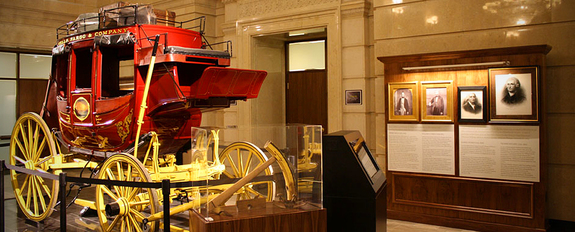
Bumping into history wherever you go and whatever you do
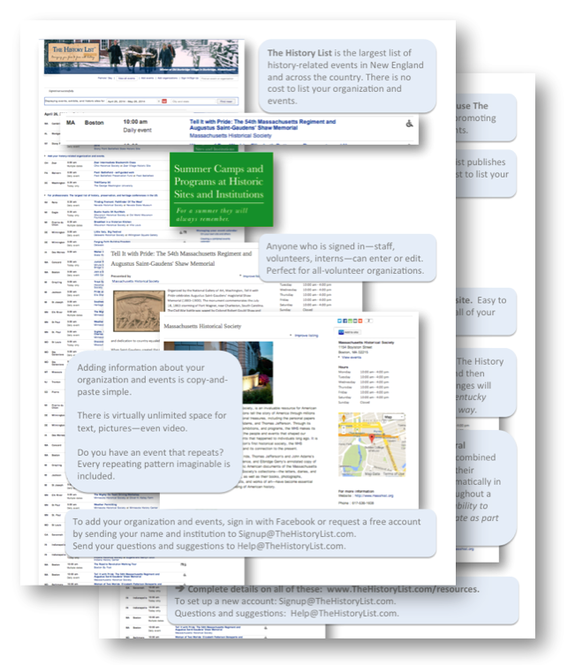
Attract more visitors to your historic site, historical society, history museum, or other history organization with The History List

Employment options for history lovers
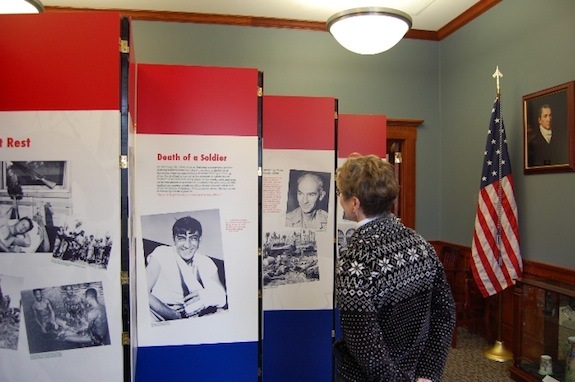
Case study: A statewide traveling exhibit program
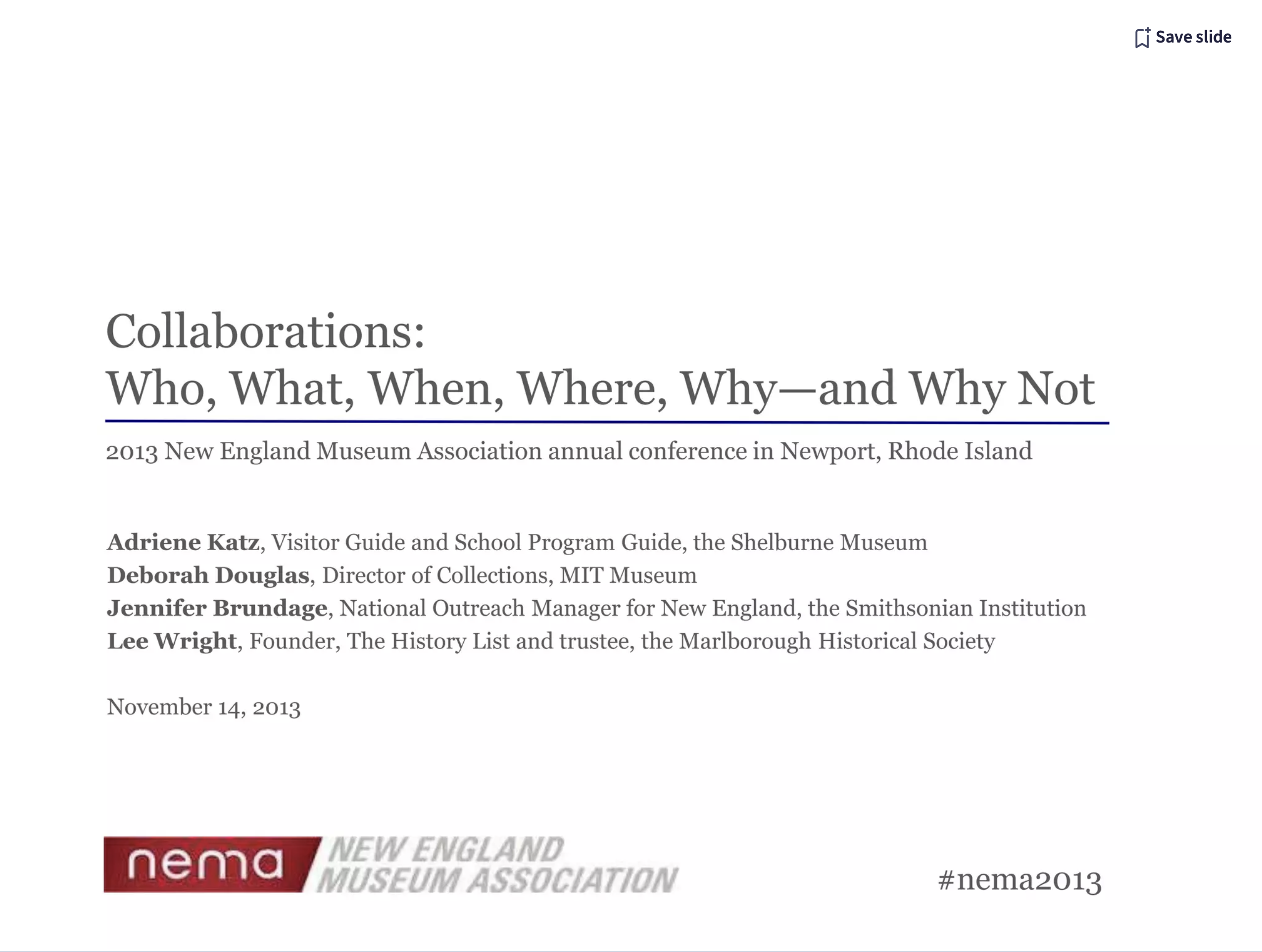
Collaboration for non-profits: Case studies and guidelines
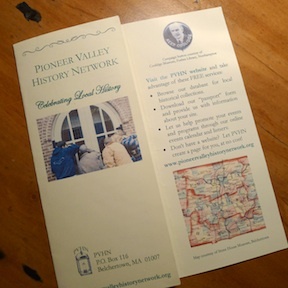
Case study: Creating a regional network of historical societies for joint marketing

88 Social Media Examples from Historical Societies, Historic Sites, History Museums, and Other History Organizations
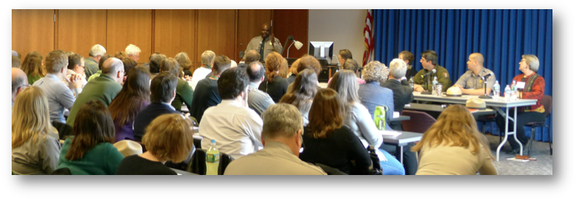
History and Interpretation in the U.S. National Park Service (NPS)
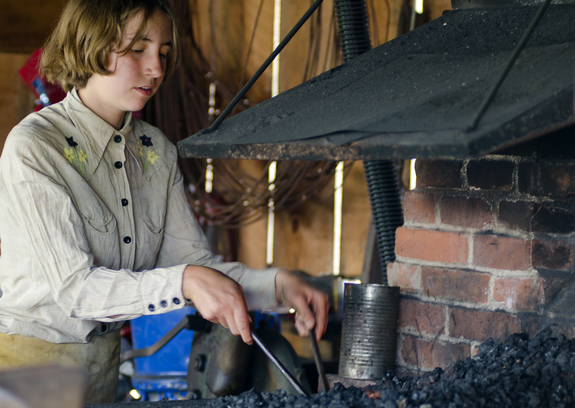
Case study: A statewide history expo stimulates interest in local history and leads to the creation of new local historical societies

Case study: An online game, iPad app, and 120 lesson plans teach life aboard the USS Constitution
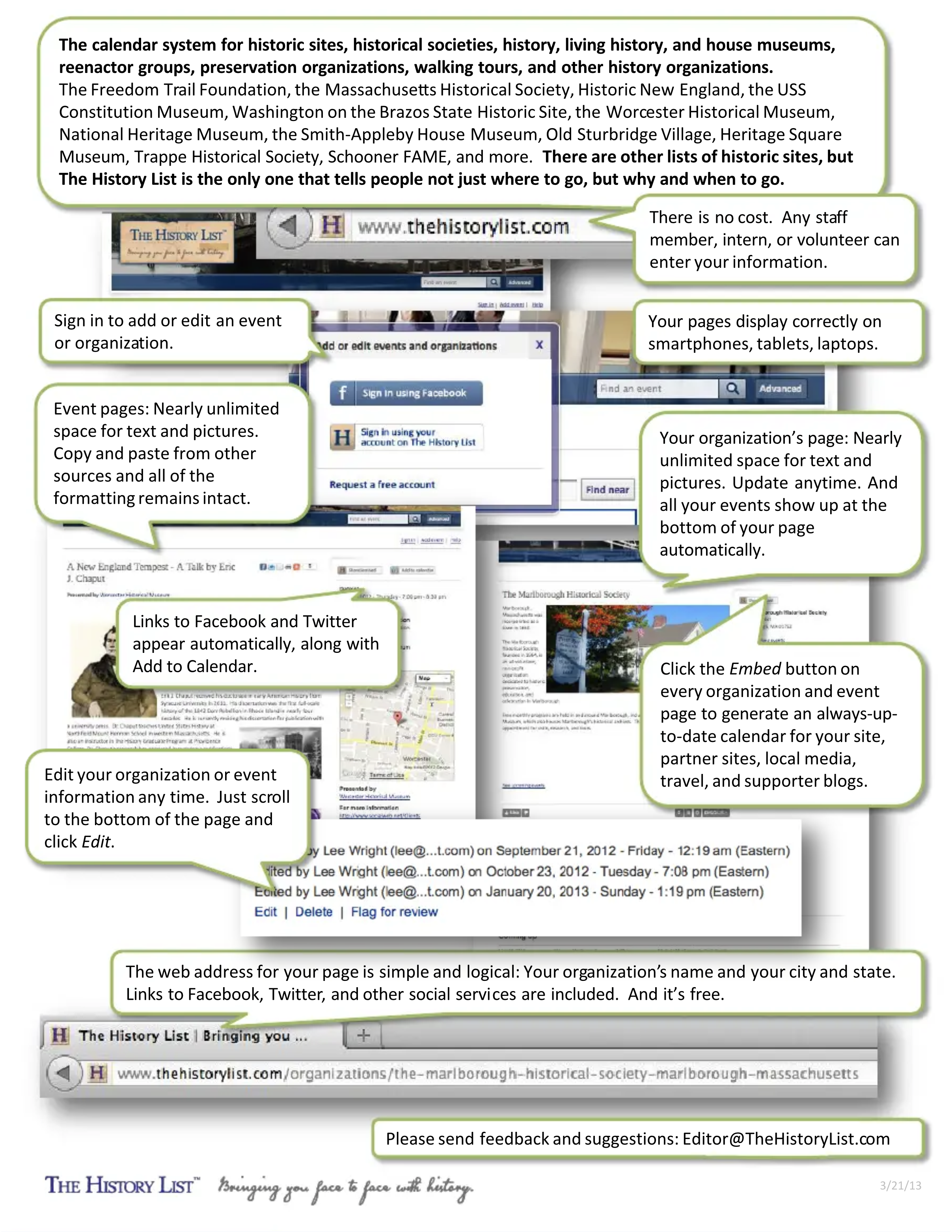
A one-page guide for staff, volunteers, and interns on using The History List to promote your historical society, museum, or historic house museum, and your events and exhibits
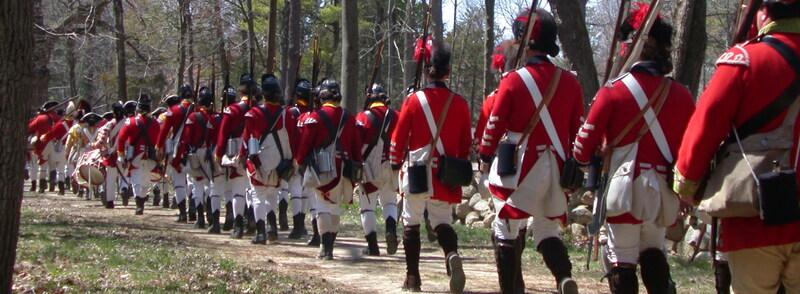
“The Historians are coming! The Historians are coming!”
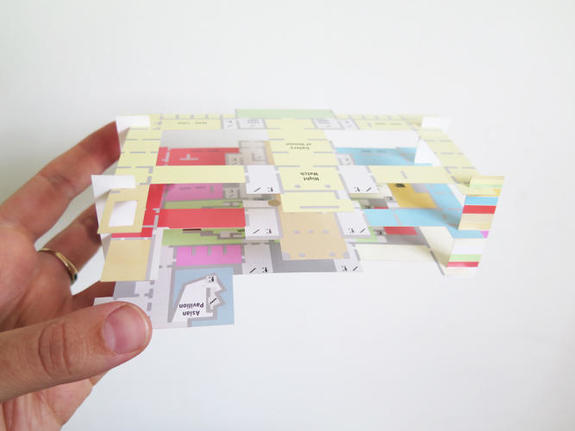
Bringing history to life and generating interest in your event
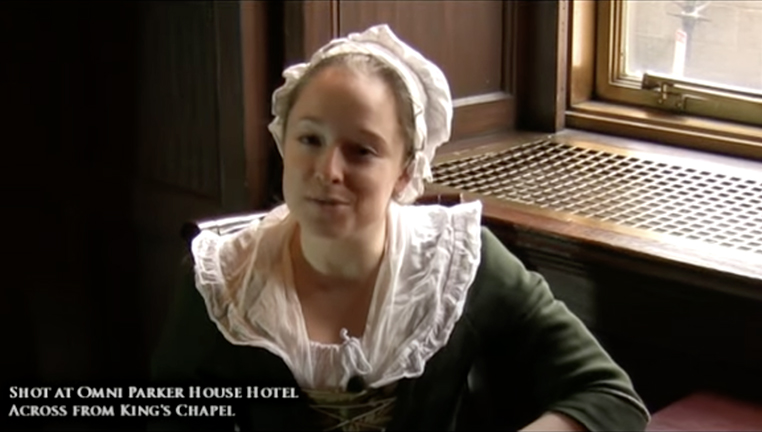
Case study: Promoting historic tours with daily video clips
Plan, Ready, Go
Tips for Visiting Mount Vernon, George Washington’s Home
If you’re planning a trip to Virginia or Washington, D.C., Georgie Washington’s Mount Vernon should be on your list of places to visit. Here are some great tips for visiting Mount Vernon.
George Washington’s home is open to the public and offers a unique look into the life of the first president of the United States. Mount Vernon is one of my absolute favorite historic homes in the United States and certainly one of my favorite stops on any trip to the Washington, DC, area.
I’ve visited Mount Vernon many times. I hope you enjoy it as much as I do.
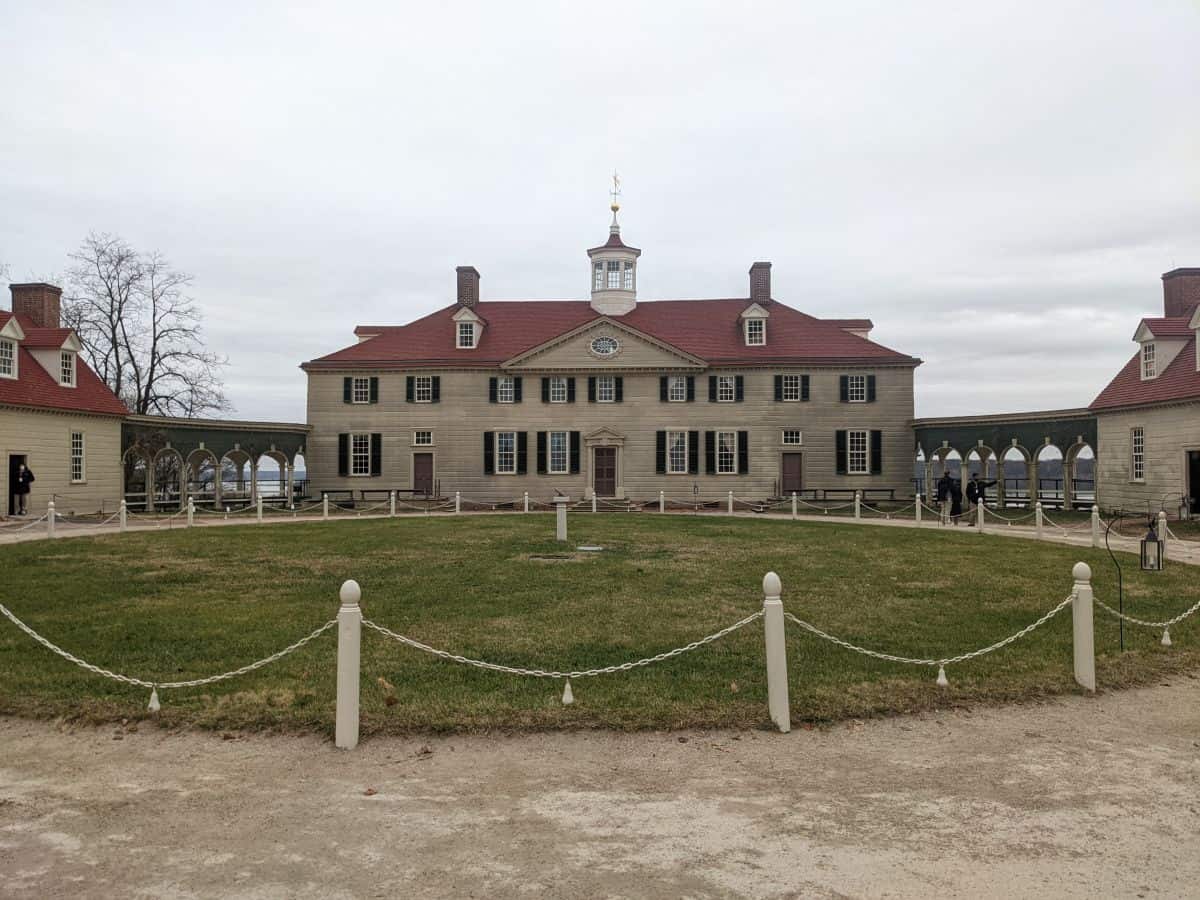
This post includes affiliate links. If you make a purchase through one of these links, I may earn a small commission at no additional cost to you. As an Amazon Associate, I earn from qualifying purchases. See disclaimer.
What is Mount Vernon?
Mount Vernon is a historic site located just outside of Washington, D.C. that was home to George Washington, the first president of the United States, and his wife Martha Washington.
The estate is managed by the Mount Vernon Ladies’ Association. Its preservation and restoration are privately funded. Mount Vernon was first open to the public in 1860, and it has since become one of the most visited historic sites in the United States .
Although George Washington’s land holdings were about 8,000 acres at one time, Mount Vernon is now about 500 acres.
Even if you’re not a history buff like me, a trip to Mount Vernon is definitely worth it. And it makes for a great day trip in Virginia or an addition to any family vacation in the area.
Where is Mount Vernon?
Mount Vernon is located in Northern Virginia a few miles south of Alexandria, Virginia, and a short drive from Washington, D.C. It’s a fairly easy drive to Mount Vernon and parking there is always free .
Getting to Mount Vernon from Washington, D.C. without a car is not easy, but it can be done. Using public transportation to get to Mount Vernon does require taking Metrorail and a Fairfax Connector bus.
Some tour operators offer round-trip cruises on the Potomac from Washington, DC, or Alexandria that stop at Mount Vernon and include admission tickets so you can explore the estate for a few hours.
PRO TIP: If you have flexible travel dates you need to check out Going (formerly Scott’s Cheap Flights). You get amazing flight deals sent straight to your inbox with instructions on how to book directly with the airlines. Check out Going here. Going is my favorite way to find great travel deals.

How much time should you plan to spend at Mount Vernon?
You’ll need at least a few hours to take in all the sights at Mount Vernon. I recommend planning to spend half a day or more if you want to make the most out of your visit.
Most visitors will spend between two and three hours exploring the grounds, but you can certainly spend more time if you’re interested in a deeper dive. Mount Vernon recommends planning on three hours , but you can spend less time and still see a lot if you want.
There’s so much to see and do at the estate (more on this below) that you’ll want to give yourself plenty of time to explore so that you don’t feel rushed.
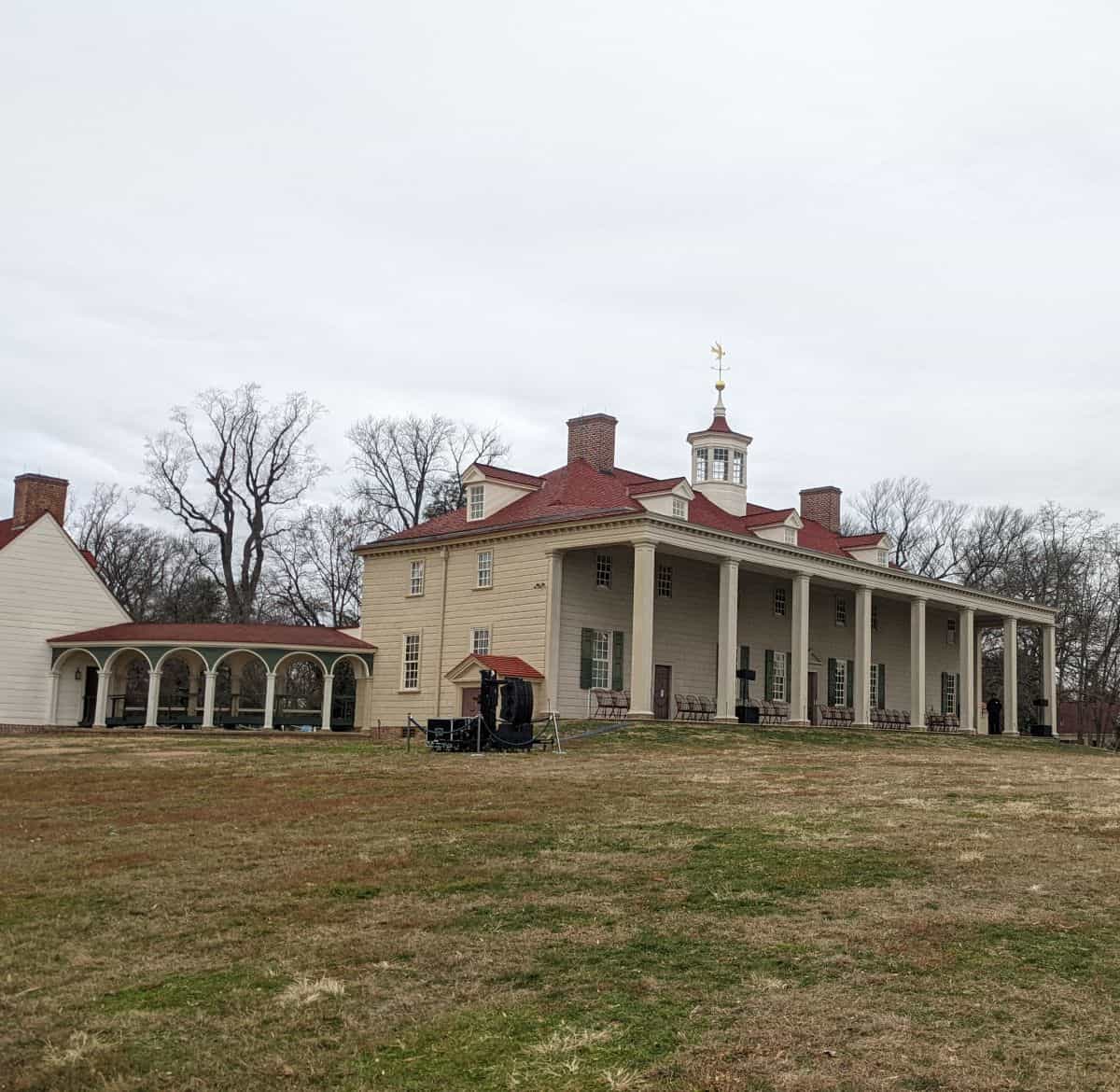
Tips for visiting Mount Vernon
When visiting Mount Vernon, there are a few tips to keep in mind.
First, you need to review your ticket options and decide which is best for you. I strongly recommend that you purchase your tickets in advance . You also want to make sure you understand which ticket you’re buying so you don’t miss out on touring the mansion if that’s really want to do.
Be sure to wear comfortable shoes as the estate and grounds are quite large and you’ll likely be doing a lot of walking. Also, you’ll want to know that some of the paths are dirt and/or uneven in places.
You’ll also be spending a lot of time outdoors, so make sure to check the weather forecast and plan appropriately.
Bringing water with you is a good idea , especially if temperatures are higher.
TIP: Keep track of all of your important travel details with a digital travel planner like this .
What to see at Mount Vernon
There are so many things to see and do at Mount Vernon that it can actually be a little overwhelming if you’ve never been there before. Below are what I think are the essential things to see at Mount Vernon.
Visitor Center (Ford Orientation Center)
On your trip to George Washington’s Mount Vernon, be sure to stop by the visitor center first. There, you can pick up a map of the estate, inquire about audio tours, and learn about all the different attractions there.
Oh, and this is also a good place to use the restroom. LOL.
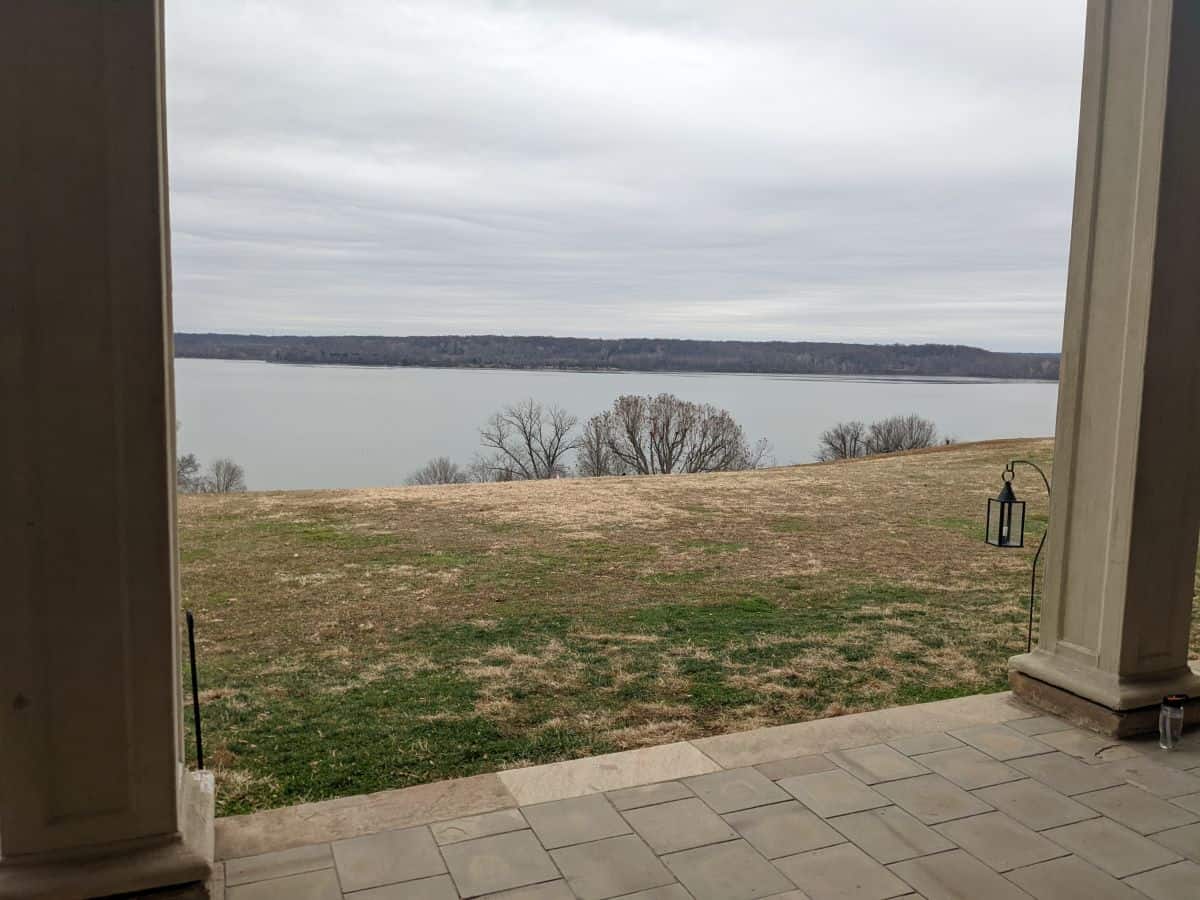
Mansion Tour
The mansion tour is one of the highlights of a visit to Mount Vernon. In my opinion, no first-time visitor to Mount Vernon should skip the opportunity to tour the inside of George Washington’s beautiful home.
The mansion tour is offered in addition to the general admission ticket and requires a booking.
Mount Vernon’s knowledgeable staff will guide you through the main house and answer any questions you have about George Washington’s home.
You’ll be taken through the home, including several important rooms on the lower floor like the dining room and George Washington’s private study. You’ll also get to learn about life at Mount Vernon during Washington’s time, as well as the history of the estate.
Please note: the mansion is currently undergoing a major restoration project that may impact your visit.
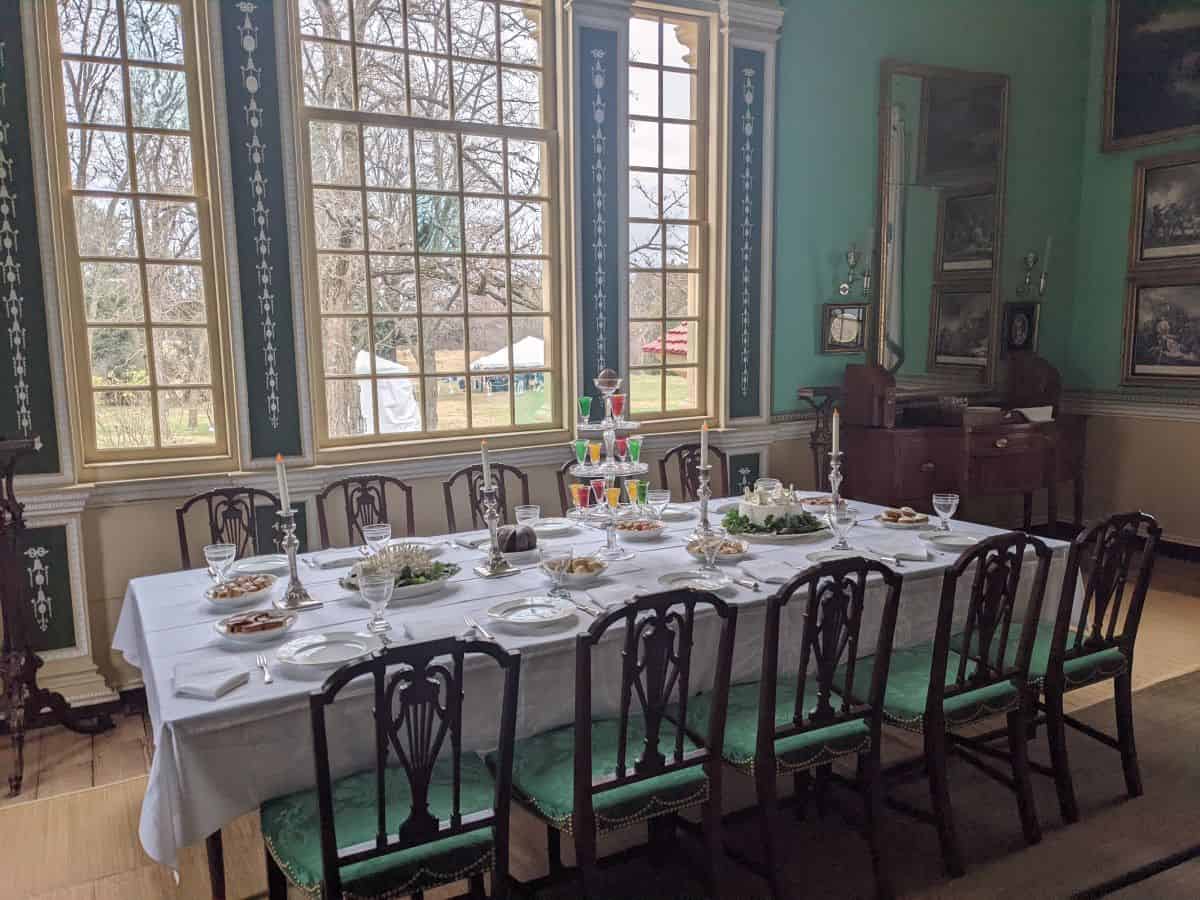
Our tour included a visit to the second-floor chamber where you could see the Washington’s bed chamber. It is the very room where George Washington died in 1799.
And make sure to spend some time on the east front of the mansion enjoying the view from its vantage point on the banks of the Potomac River. Your guided tour time on your ticket is the time at which you can get in line for your tour, though you may have to wait a bit before you actually get into the mansion.
You should plan to arrive at the estate at least 30 minutes before your mansion tour time.
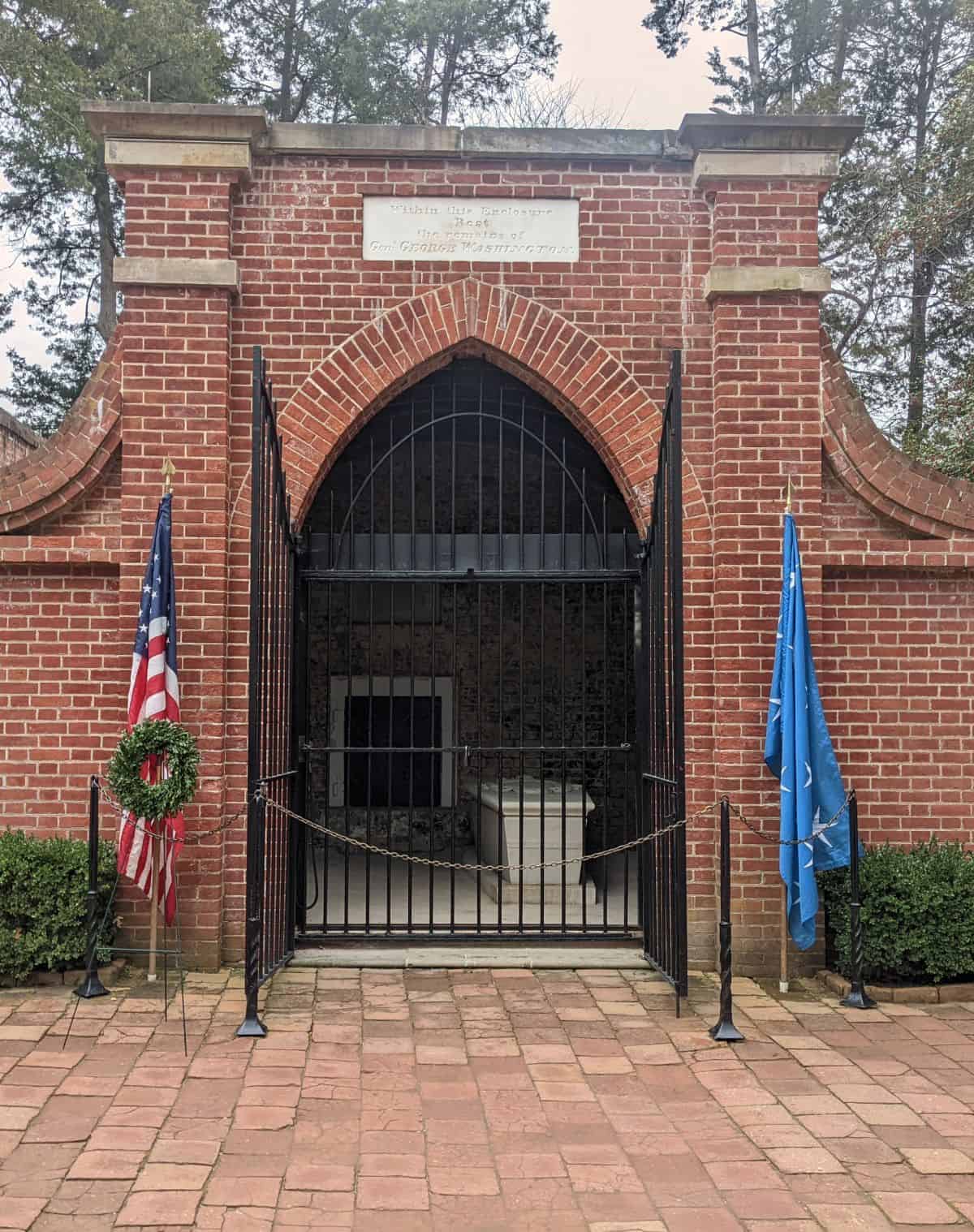
While you’re at Mount Vernon, I recommend you stop at the final resting place of George and Martha Washington. Well, there are actually two tombs. In his will, Washington directed the construction of a new tomb at Mount Vernon.
Washington was moved from his original burial place (still on the property) to the large “new” tomb in 1830 along with Martha Washington and other family members.
Slave Memorial
About 50 yards from George Washington’s tomb you’ll find the Slave Memorial . A wreath is laid at the memorial every day to honor those who were enslaved at Mount Vernon.
Several years ago, archeologists began a lengthy survey project to document the final resting places of the enslaved people who died while at Mount Vernon. There will be no excavations, but there are plans to thoroughly map the area of the slave cemetery.
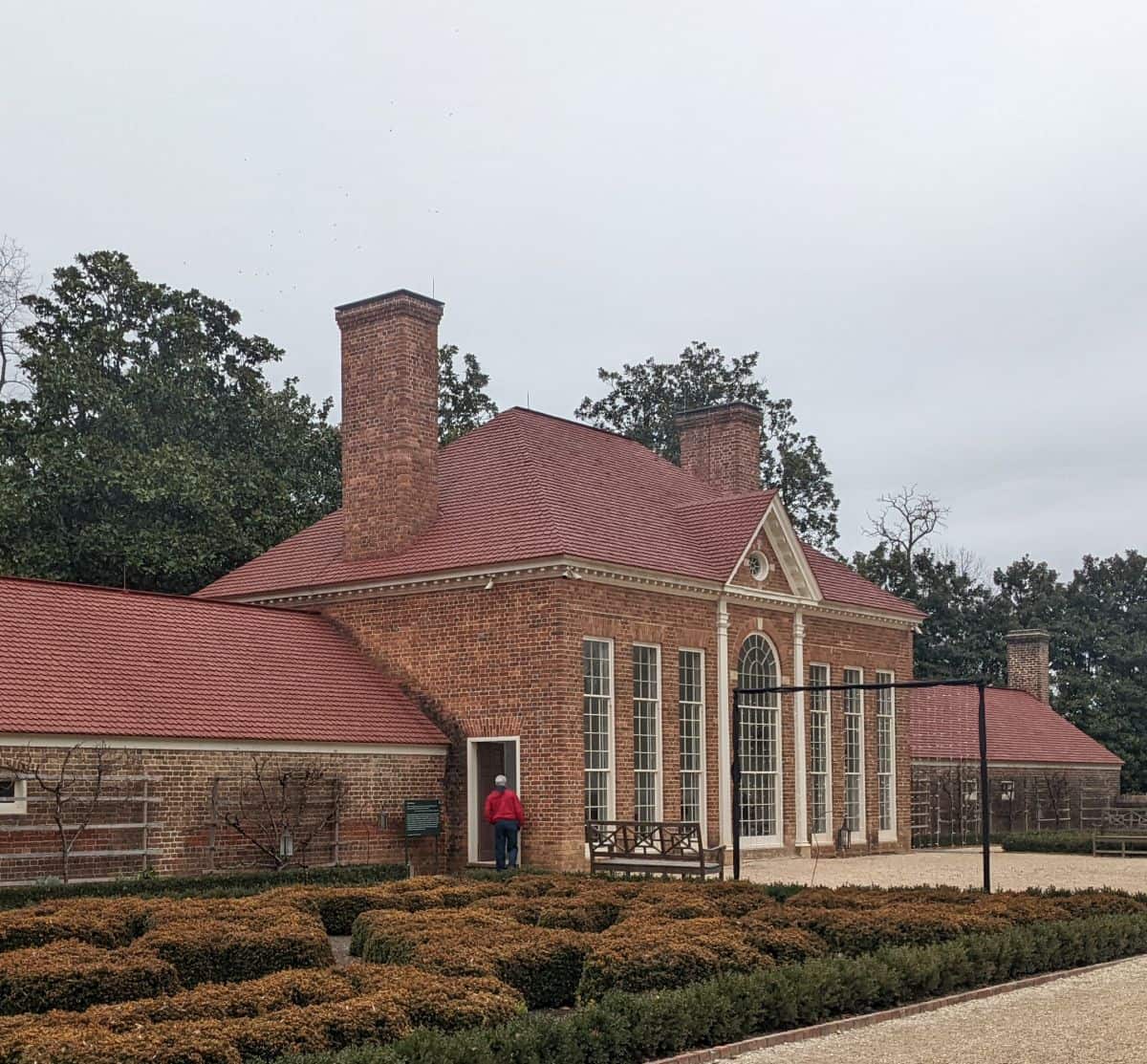
George Washington was known for his love of gardening, and the gardens at Mount Vernon are a testament to that passion.
There are four gardens on the estate: the lower garden, the upper garden, the botanical garden, and the fruit garden and nursery. All are filled with beautiful flowers, plants and trees, and offer visitors a chance to relax and take in the natural beauty of Mount Vernon.
The upper garden includes a beautiful greenhouse.
The lower garden was the estate’s kitchen garden, which grew the food that was prepared for the Washington household. This garden was really Martha Washington’s domain rather than George Washington’s.
The botanical garden was kind of a place for horticulture experimentation.
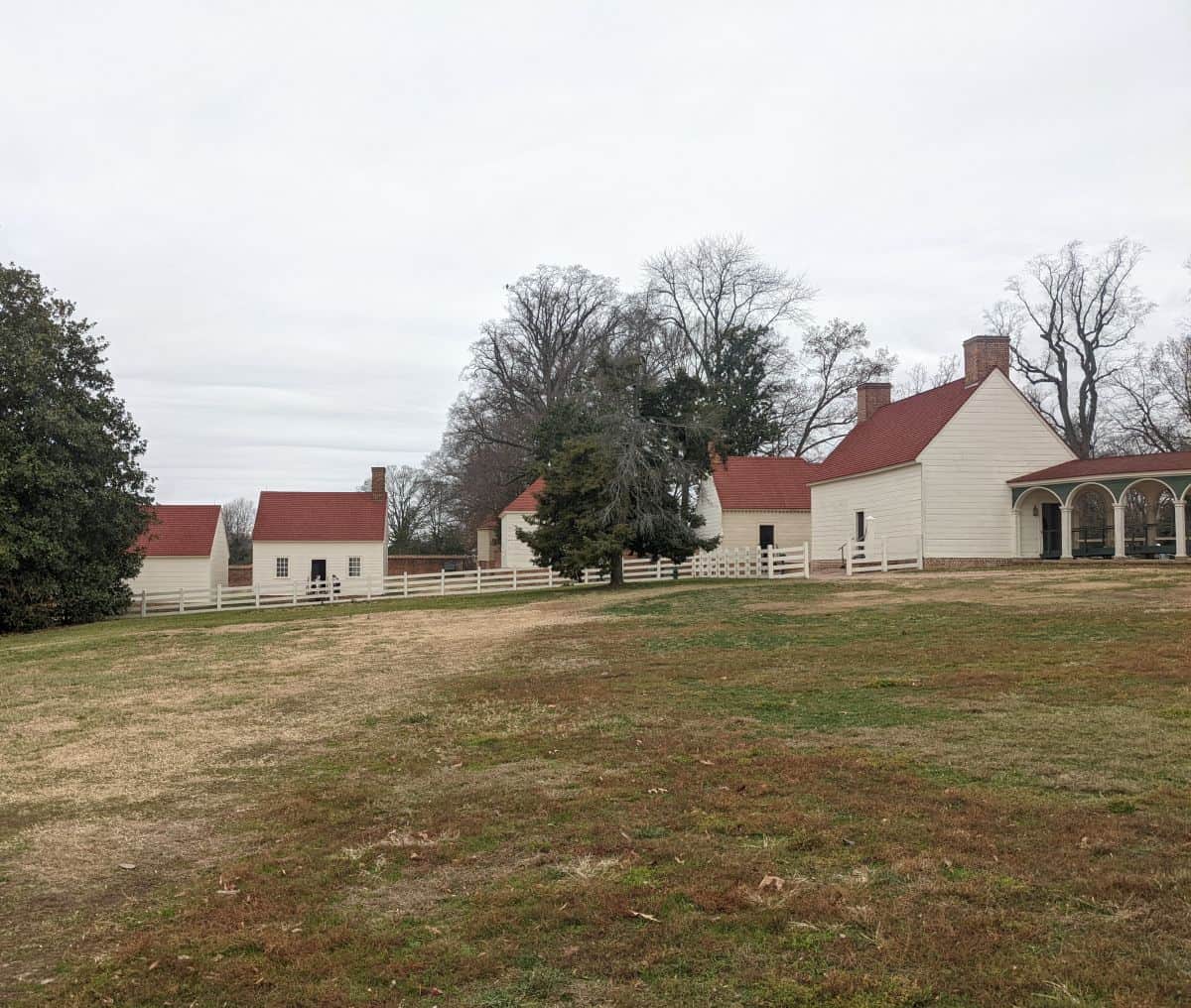
Historic area outbuildings
Explore the outbuildings in the Mount Vernon historic area to learn more about the skills that were needed to maintain the estate.
You can see the blacksmith shop, smokehouse, stable, and spinning house among other outbuildings. The buildings, which date back to the 18th century, offer a glimpse into life at Mount Vernon during Washington’s time.
Education Center
If after doing all of the above, you still have time and energy to learn more about George Washington and Mount Vernon then stop by the Education Center.
The education center offers a 4D theater experience and a variety of hands-on exhibits that provide in-depth information about Washington’s life and career. You’ll also find exhibits on the estate itself, as well as the history of slavery in America.
There are several films available at both the Education Center and the Orientation Center (see above). I wouldn’t recommend you spend too much time watching films if it’s your first time at Mount Vernon.
Perhaps choose one or two that appeal to you. Then spend the bulk of your time exploring the estate itself.
Please note: the Education Center exhibit on George Washington’s Life will undergo a rebuild from July 2024 through 2025.
Where to eat at Mount Vernon
Mount Vernon offers a Food Court Pavilion and a restaurant for when you’re ready to pause and enjoy a bite to eat.
The Mount Vernon Food Court is where to go to grab a quick meal or snack. They offer things like salads and sandwiches, plus they’re open for breakfast.
We enjoyed dining at the Mount Vernon Inn Restaurant . They offer lunch and dinner menus, plus weekend brunch.
If you want to eat at the Inn Restaurant, I recommend making advance reservations. But if they aren’t taking reservations you can inquire at the hostess stand to see if they can fit you in.
It’s important to note that no outside food or beverages are allowed on the grounds of Mount Vernon except water. There are a few tables available in front of the gift shop for those who want to bring a sack lunch.
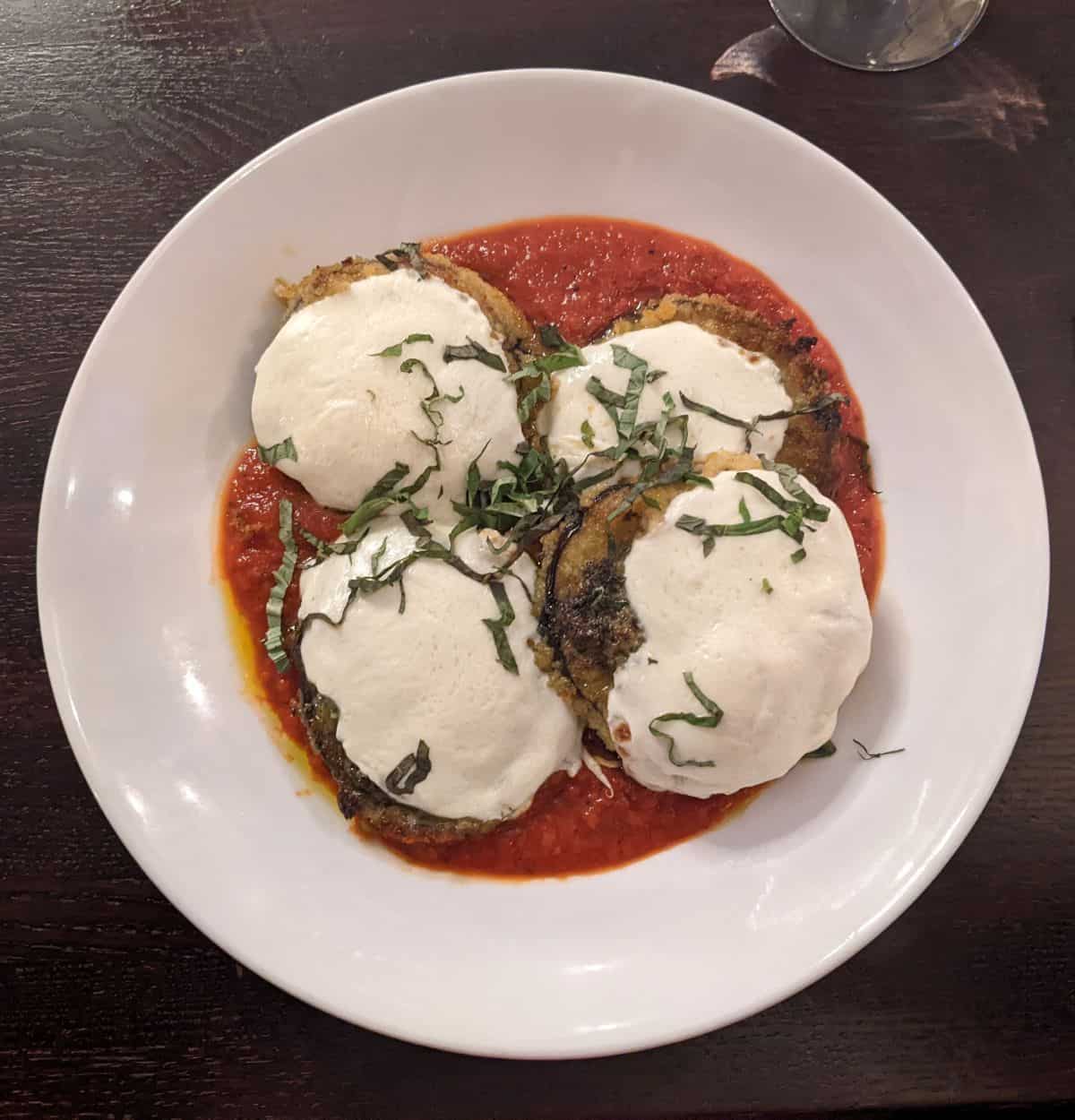
Where to stay when visiting Mount Vernon
If you’re looking for a place to stay while visiting Mount Vernon, Alexandria, Virginia, is a great option. Alexandria is just a few miles from the estate, and there are plenty of hotels and restaurants in the city. Plus, Alexandria offers plenty of attractions of its own, so you can easily fill a day or two when you’re not touring Mount Vernon and make a weekend getaway out of it.
We stayed at the Residence Inn by Marriott Alexandria Old Town South at Carlyle and had a fine stay in a quiet area.
Here are a few other highly rated options in Alexandria:
- The Westin Alexandria Old Town : just a few blocks from the King Street metro station. They also offer exclusive concierge service and an on-site restaurant.
- Hotel Indigo Old Town Alexandria : only a 3-minute walk to the Old Town Waterfront and just five miles from Ronald Reagan Washington National Airport.
Final thoughts on touring Mount Vernon
Washington’s home is full of amazing history and beautiful scenery, and there’s something for everyone. Whether you want to explore the mansion, stroll through gardens, learn about George Washington the man, or just relax by the river, Mount Vernon has something special waiting for you.
Make sure to plan your visit ahead of time so you can make the most of your time at this iconic American landmark!
Are you planning a visit to Mount Vernon? What are you looking forward to most?
More articles related to visiting Mount Vernon
- The top day trips in Virginia
- Day trips from Washington, DC
- Guide to visiting Thomas Jefferson’s Monticello
- What to see and do at James Madison’s Montpelier
- The essential day bag packing list
Pin this post!
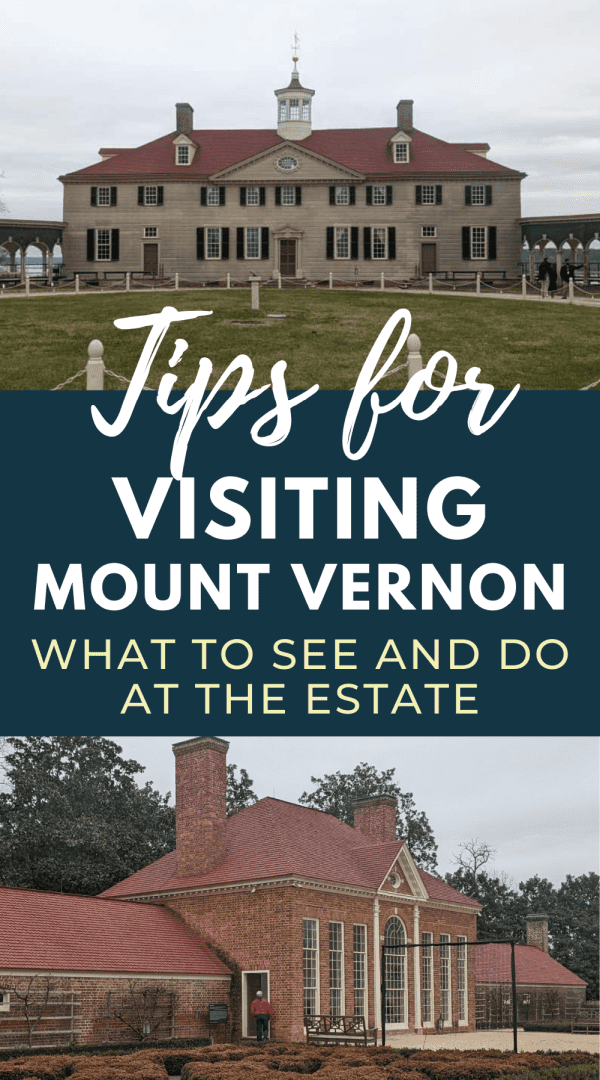
Darcy Vierow is a busy professional and travel planning expert with years of experience maximizing travel with limited time and on a less-than-average salary. Her tips have been published by Forbes, MSN.com, Yahoo! News, Yahoo! Finance, Aol, Newsbreak and GOBankingRates. Read more about Darcy Vierow .
Leave a Reply Cancel reply
Your email address will not be published. Required fields are marked *
By using this form you agree with the storage and handling of your data by this website. *
Privacy Overview

Mount Vernon: A Detailed Guide to George Washington’s Home
One of the most visited historic homes in the United States is Mount Vernon, the home of George Washington, the Commander-in-Chief of the Continental Army during the American Revolutionary War, president of the Constitutional Convention (where the U.S. constitution was written), and the man who became the new nation’s first president. Therefore, he is known as the Father of the Country. Just outside Washington, D.C. along the Potomac River in Virginia, Mount Vernon is a wonderful place to visit to capture a feeling of what it must have been like for George Washington and his wife, Martha, and all the others who would call this place home.
Plus it’s a place where visitors can gain a good understanding of how some (wealthy) families lived in the late 18th century. You can walk through his home and view his gardens, his farm, his wharf on the Potomac River, his tomb, and the many outbuildings that supported his home and business interests. Along the way, you gain a better understanding of the enslaved people who lived and worked here, as well.
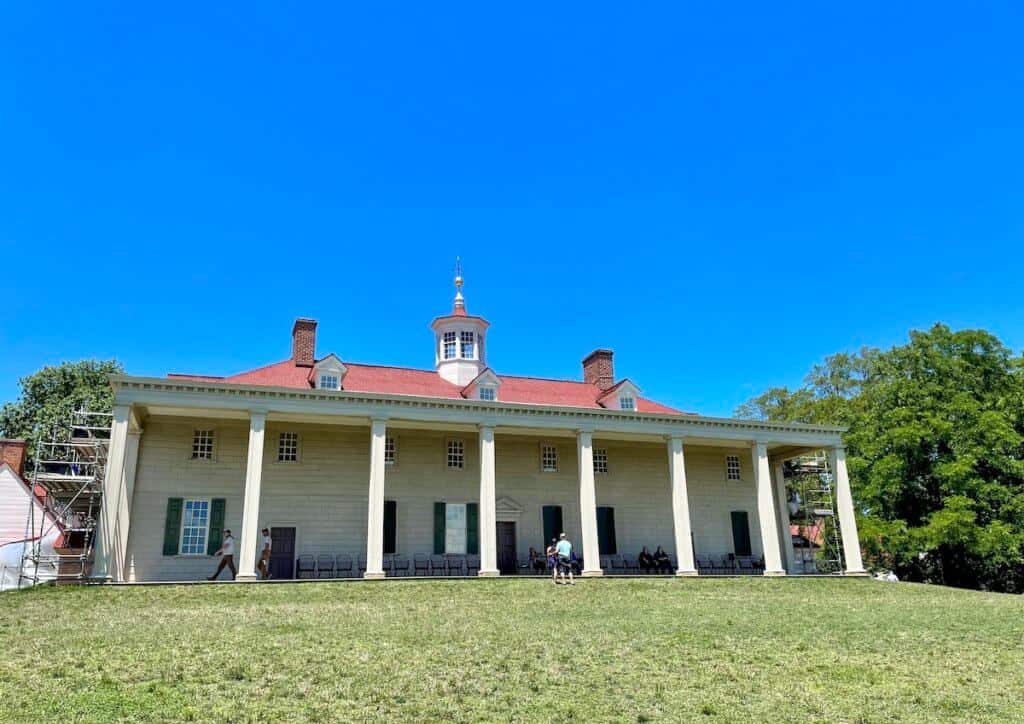
Pleasantly Situated
Washington loved Mount Vernon and longed to return to it whenever he was away. In 1793, he wrote, “No estate in United America is more pleasantly situated than this…on one of the finest Rivers in the world.”
Planning Improvements
George Washington was a planner and a doer in many aspects of his life. Regarding Mount Vernon, he spent a lot of time designing expansions and enhancements to his home and surrounding property. Besides a place for his family to reside, the estate had to accommodate his enslaved people as well have buildings to house the many functions required by such a household in the 18th century. In addition to planning for his household, Washington studied and experimented with new ideas regarding his business interests that included agriculture and fishing.
Washington’s Household
The mansion.
The small home that George Washington inherited (a one-story home with four rooms and a foyer) in 1761 served as the seed of its growth over the coming years. (More detail on the expansion is listed in a later section of this post.)
Today the mansion is staged as it would have been in 1799, the year George Washington died.
Guided tours of the mansion are available and require tickets. Whether you step inside the mansion or not, take time on the two-story porch to enjoy the very same beautiful view of the Potomac River that Washington’s family and guests enjoyed.
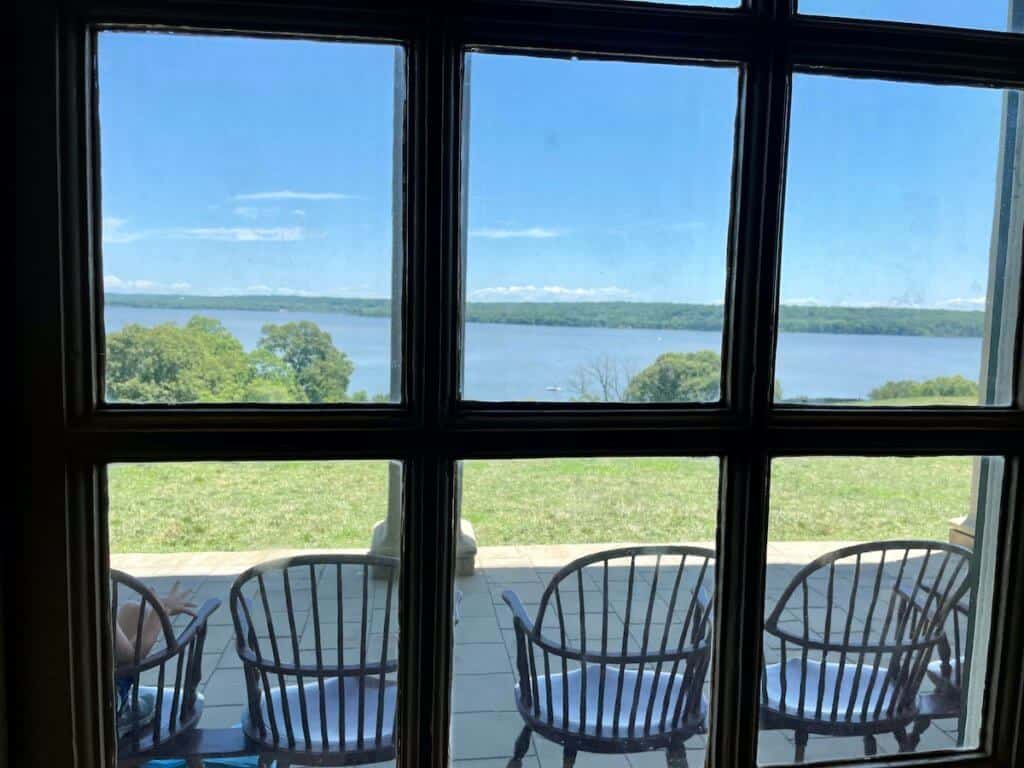
First Floor
Upon entering the New Room , today’s visitors — like George Washington’s guests centuries ago — are bound to be impressed. This is a two-story room that served as a place to entertain visitors. It has a large Palladian window and its ornamentation includes symbols of agriculture — one of Washington’s keen interests and his major sources of income. After Washington died in 1799, his body was laid to rest in a coffin in this room.
The Front Parlor was a favorite room for the Washingtons and a place where they gathered in the evenings to read, catch up with each other, and discuss what was happening beyond their home. Once a bedroom, the Little Parlor was later used as a music room. The Old Chamber was a guest bedroom, and the Dining Room next door was where the family typically took their meals. Washington’s Study was where he read, managed much of his business enterprises, and enjoyed quiet time alone.
In the foyer, called the Central Passage , a framed key to the Bastille is displayed. This was a gift from the Marquis de Lafayette in 1790. Oftentimes, the Washingtons had the Central Passage exterior doors opened to capture cooling breezes during the hot summer months.
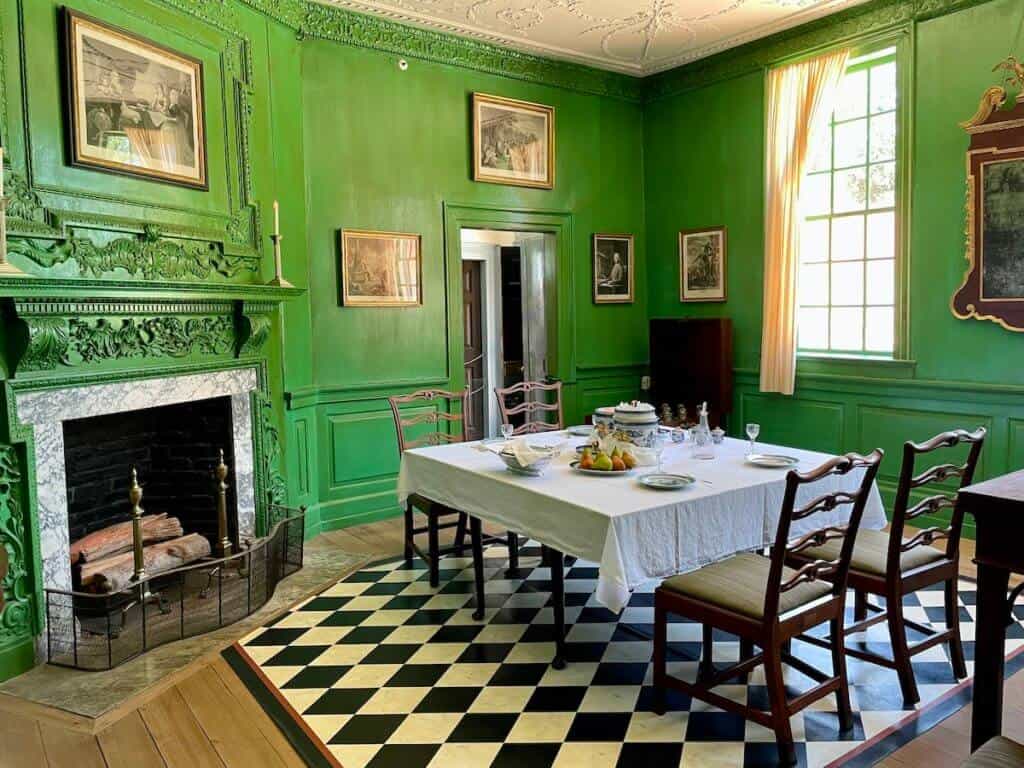
Second Floor
The second floor houses George and Martha’s bedroom (as well as other bedrooms for their family and guests). Interestingly, there is a hidden staircase from George and Martha’s bedroom to his study below. This convenience enabled him to go down to his study after waking up in the morning, get dressed (he kept his clothes there), and attend to matters that needed his attention, without distractions or disturbances.
He died in his bed on December 14, 1799 after a short illness. After he passed away, Martha chose not to sleep in the bedroom again; instead, she chose another bedroom.
One takeaway I had when visiting was the liberal use of color and patterns for the walls and upholstery in the mansion. This was true for most of the house — all except George and Martha’s bedroom that was simply decorated in whites.
Looks Like Brick, But It’s Not
As with many historic properties, Mount Vernon requires regular maintenance. Therefore don’t be surprised if you notice work projects when you visit. When my husband and I visited, there was scaffolding on the north and south sides of the mansion. Workers were repairing the exterior using a rustication process. Washington saved construction costs by making the mansion look as if it’s built with brick, but it’s actually a wooden exterior . Rustication involves carving beveled edges into wooden logs, and then applying paint mixed with sand to give the wood a grainy texture, mimicking brick. Much of the house’s imitation brick are authentic to Washington’s time.
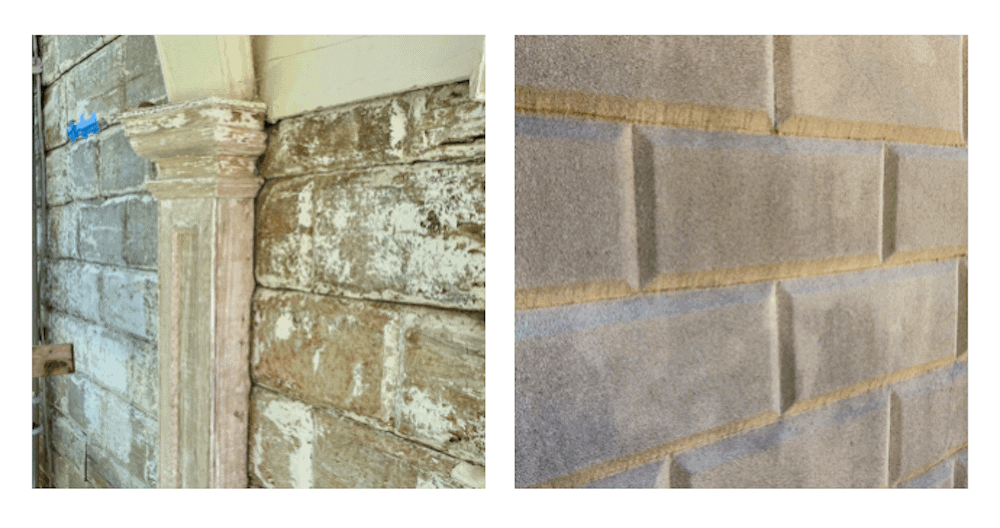
Supporting Washington’s Household
There are numerous outbuildings to visit including those for trades (like shoemaking, blacksmithing, washing, and spinning thread and yarn) as well as the kitchen, slave quarters, coach house, stable, and barn.
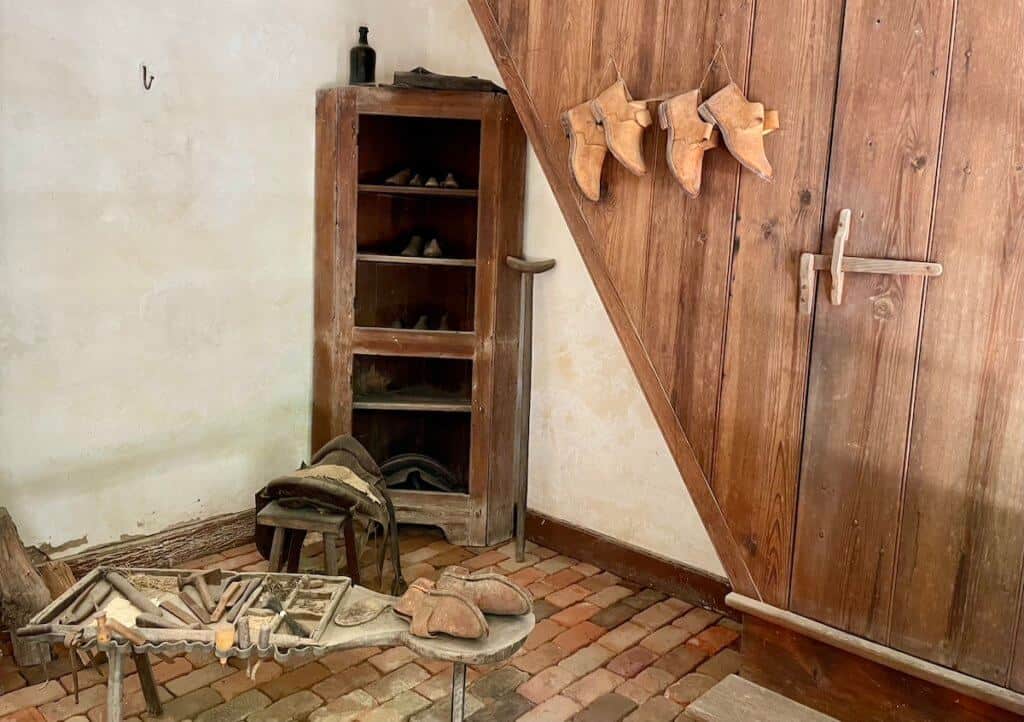
In addition, there were four gardens that are still maintained today:
- Upper Garden , a formal garden with a variety of plants including flowers along with fruit trees and vegetables. The garden followed a rigid symmetrical plan, and trimmed dwarf boxwood shrubs served as borders for the beds and, in some cases, strong visual interest since some were trimmed to create intricate, symmetrical designs.
- Lower Garden , a kitchen garden that provided much of the fruits and vegetables consumed at Mount Vernon.
- Botanical Garden , a small space where Washington explored different varieties of plants.
- Fruit Garden & Nursery , a four-acre area to accommodate trees and other plants that required a lot of space to grow.
- A large brick greenhouse and other garden houses supported the gardening effort. The greenhouse provided protection for young plants as well as a place for tropical plants (like orange and lemon trees) to grow year-round despite the season.
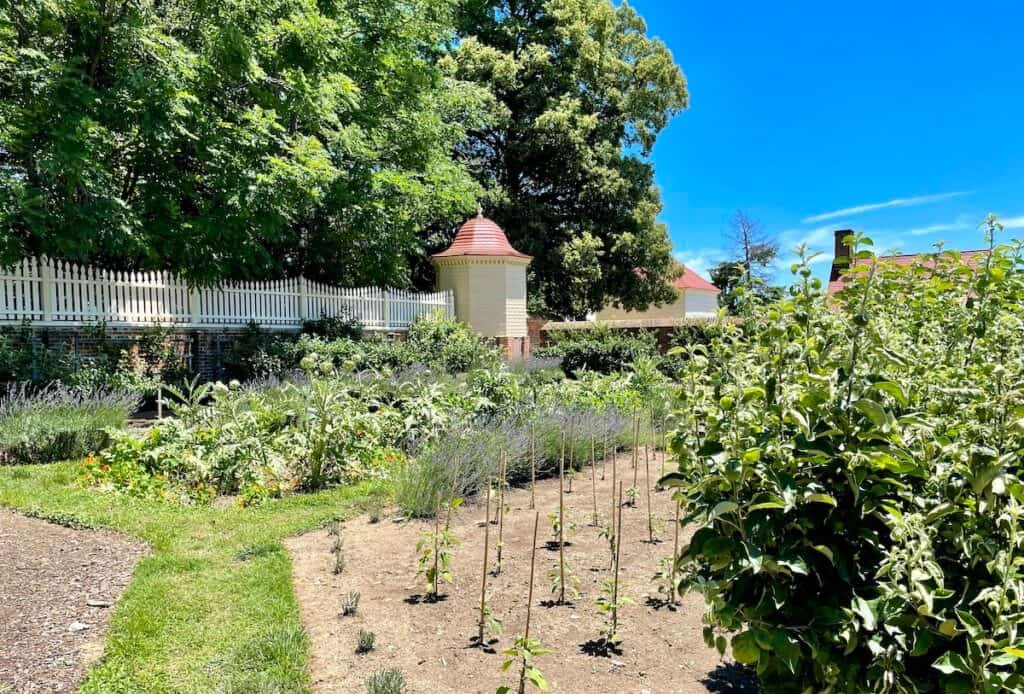
Washington’s Business Interests
Among other things, Washington considered himself a farmer and he strived to learn more about different types of plants and how to grow them in the Virginia climate. He was one of the first in the region to move away from the soil-depleting tobacco crop to other more appropriate crops. Also, he was one of the first to apply crop rotation methods.
Furthermore, being located on the Potomac River provided him with an abundance of fish — some of which was consumed at Mount Vernon, but much of it was preserved and sold.
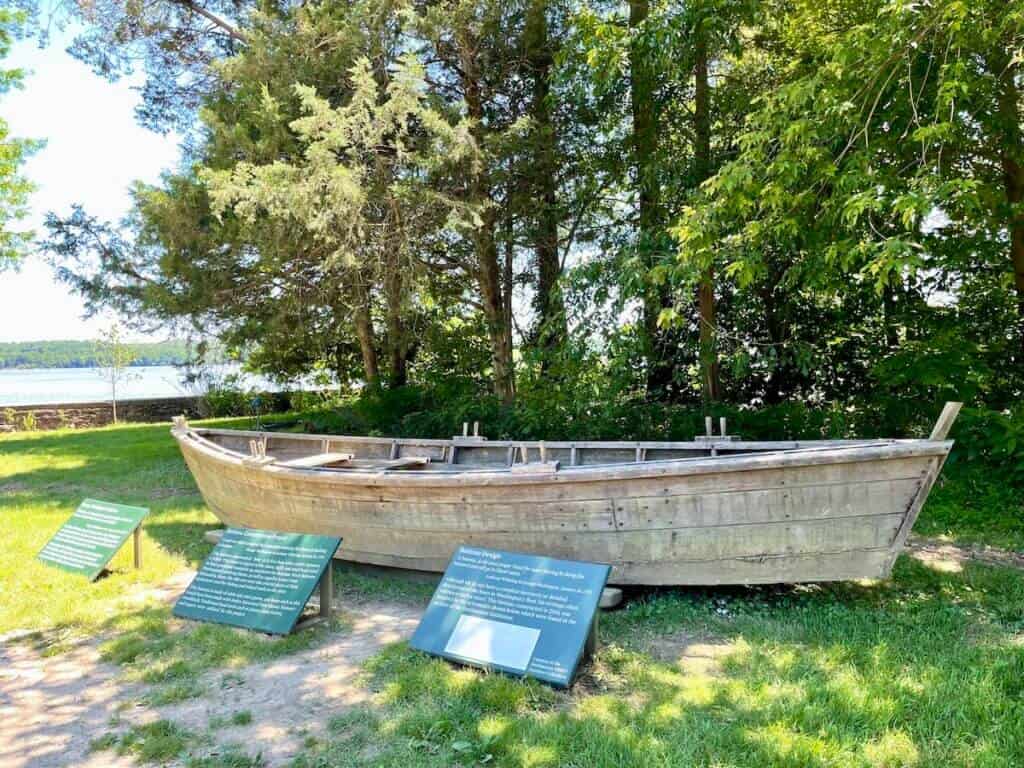
Agriculture and fishing provided a profitable enterprise for Washington. There are several places at Mount Vernon for visitors to learn more about these enterprises.
- A short walk from the mansion and the gardens, the Pioneer Farm is where Washington experimented with farming techniques (like crop rotation), tools, and agricultural plants.
- Washington designed a two-story 16-sided barn (that from a distance looks to be round) to process grain grown on the farm. From this innovative idea came a greater efficiency of the process, making it more profitable. (What visitors see today is a recreation of the barn Washington had built for him.) The second level had a slatted wooden floor. This is where the grain was placed after harvesting. Then, work animals would walk in a large circle on the second floor, treading upon the grain, resulting in it separating, with the seeds falling through the slats to the solid wooden floor below. After that, the grain would be further processed before being taken to the grist mill to be ground into cornmeal and flour. Processing the grain in the barn also helped protect it from weather (and mud) outside and keep it clean and dry.
- The wharf was an important component in Washington’s successful business endeavors. It provided a place from which to launch boats that were used for catching the abundant amount of fish from the Potomac River for household use and commercial sale. In addition, it enabled access to the river for easily receiving and transporting goods to and from other markets.
- Not far from wharf is a boat shelter where visitors can learn more about the different types of boats used at Mount Vernon.
- The distillery and grist mill are reconstructions and located about three miles from Mount Vernon itself. They are open on most weekends from April to October and have a separate admission fee.
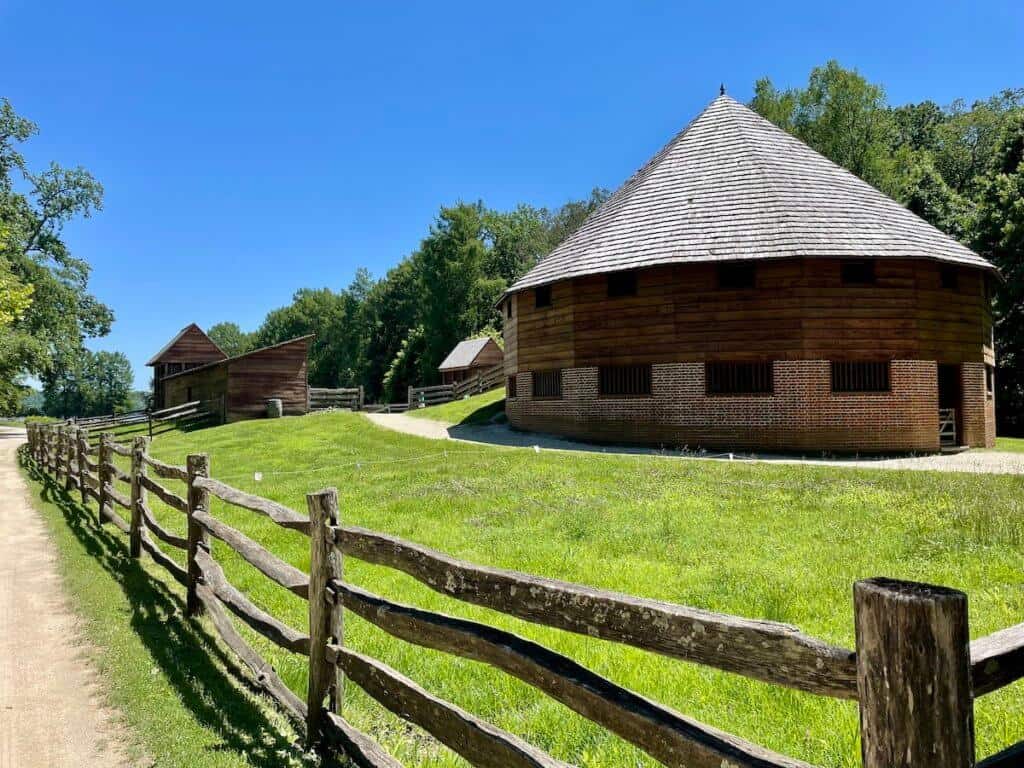
Washington’s Tomb
Also on site are two tombs. Down by the river, the stone Old Tomb had been used for family members for much of the 18th century. It was used for Washington’s body, too, after he died. However, his will directed that a new, larger tomb be built of brick elsewhere on the property. The new tomb was completed in 1838, and the remains in the Old Tomb were moved to the newer structure.
The Washington Tomb is where George and Martha Washington are buried along with some family members. Mount Vernon holds a daily wreath laying ceremony at the New Tomb. It’s a short ceremony that encourages visitor participation.
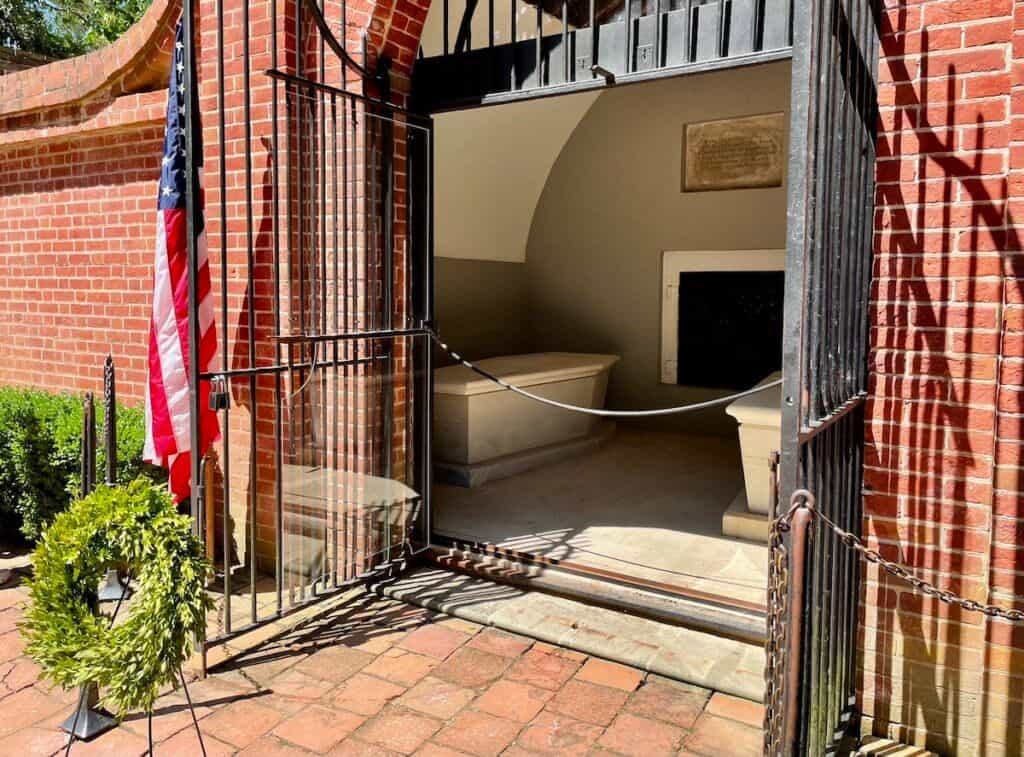
18th Century Graffiti
While at the Washington Tomb, check out the “graffiti” in the bricks . During the Civil War, soldiers from both the Union and Confederate armies came to Mount Vernon to pay their respects. They checked their guns at the gate and covered their “colors” (uniforms) as this was considered a non-fighting zone. Washington was that much of a hero to so many that soldiers from both sides of the national conflict came to Mount Vernon. While there, some soldiers carved their names in the bricks.
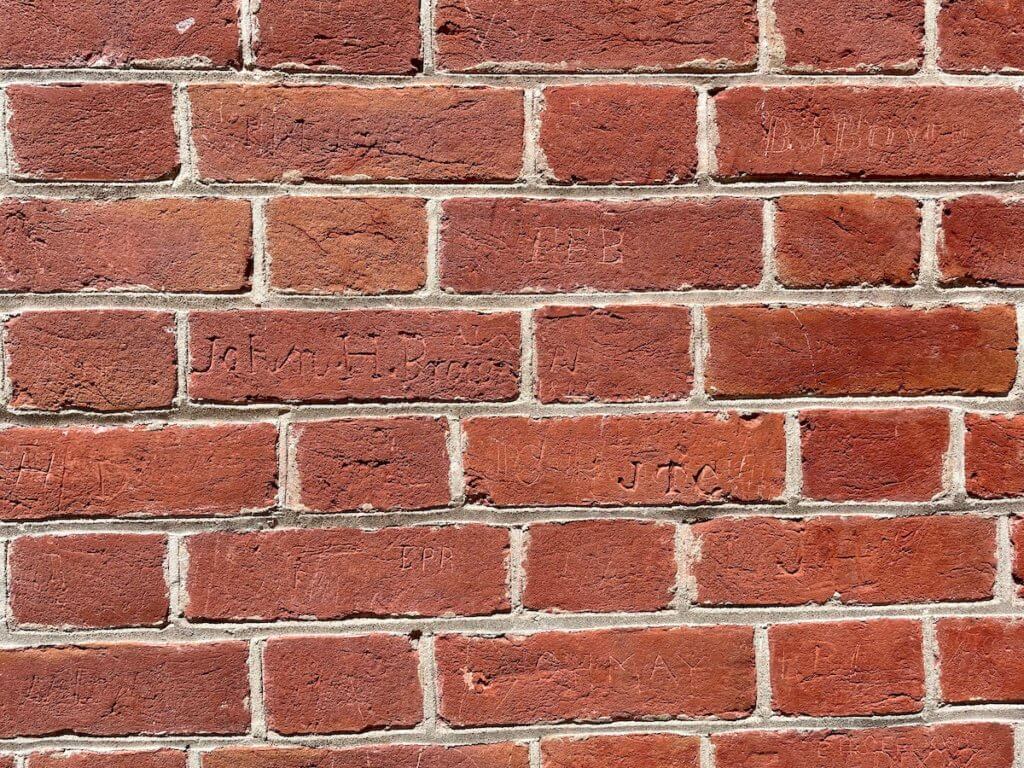
Slavery at Mount Vernon
The success of George Washington’s plantation was due in large part to the work performed by enslaved people. George owned hundreds of slaves in his lifetime. (Martha came to their marriage with enslaved people of her own, inherited from her deceased first husband.) The Washingtons depended on their efforts to run the household, cook for the family, sew clothes, make shoes, work the land, and more. In some cases, the enslaved people lived communally in brick structures, and in other cases, they lived in buildings where they worked during the day.
George Washington’s will stipulated that his slaves be freed upon Martha’s death (although Martha freed them little more than a year after he died). However, this action did not apply to everyone enslaved at Mount Vernon. Those owned by Martha (inherited from her first husband) were another matter because his will had decreed that the enslaved people should not be sold or freed. After Martha’s death, her descendants inherited her enslaved people.
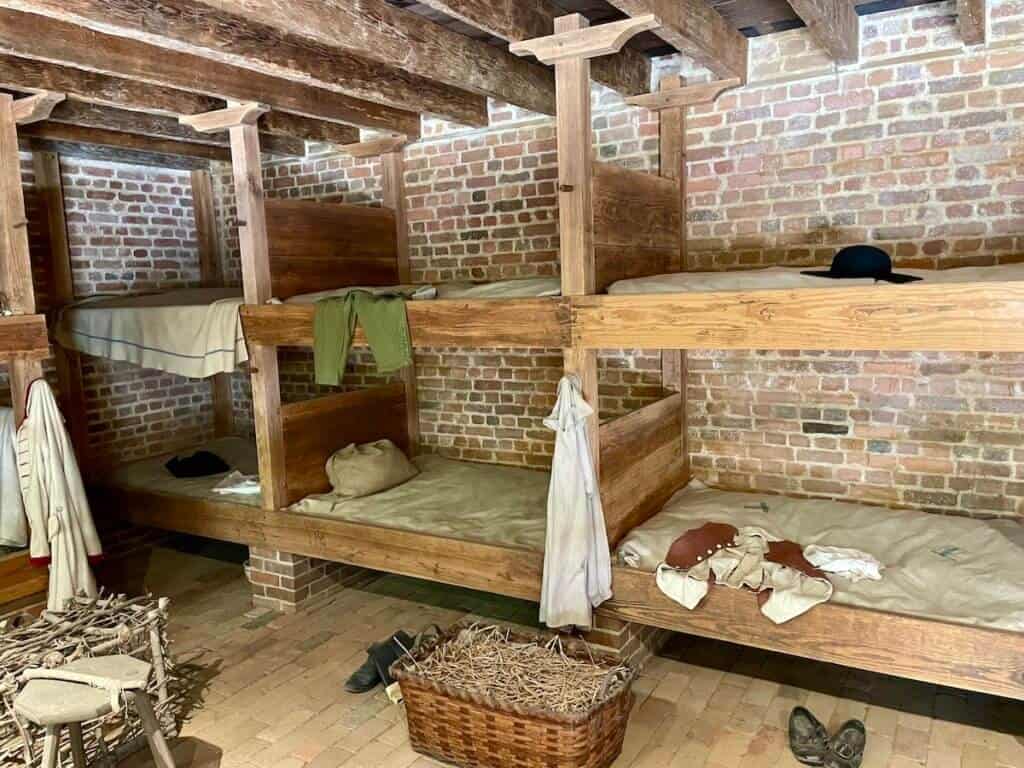
Mount Vernon remembers those who were enslaved by calling them by name on tours, explaining what they did, and showing how and where they lived. In fact, Mount Vernon’s website has detailed information about the enslaved people at the sprawling estate.
There’s a slave memorial and cemetery on the property. In 2014, Mount Vernon began a project to discover exactly who is buried in the slave cemetery. The goal is to create a map of their locations, so that those lives can be remembered and honored.
Other Attractions at Mount Vernon
Museum & education center.
The museum and education center have exhibits and displays that explain various aspects of George Washington’s life, the lives of the enslaved people who lived and worked at Mount Vernon as well as Washington’s shifting views of slavery. Plus there’s an interesting interactive experience where visitors can learn about the challenges Washington was faced with as a military and political leader . Visitors can participate by weighing the pros and cons of situations being presented on screen and decide how they’d react to the dilemmas. Furthermore, there’s a 4-D multimedia production focused on the Revolutionary War.
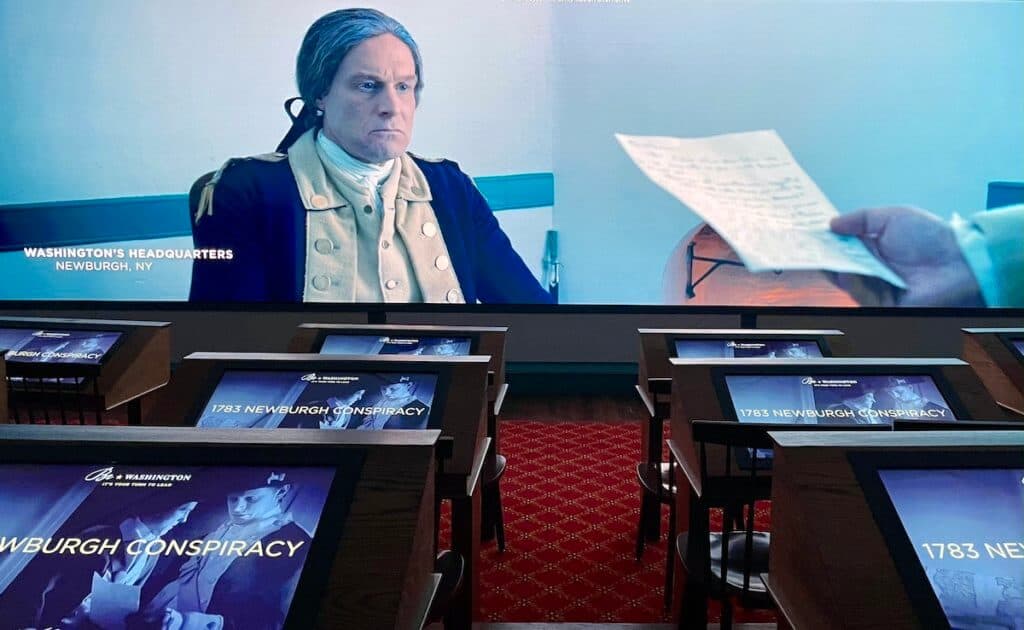
Restaurants
Visitors have a couple good options for dining at Mount Vernon:
- Mount Vernon Inn Restaurant for a full-service dining experience offering lunch, dinner, and weekend brunch.
- Food Court Pavilion offers grab-and-go food like salads, burgers, and pizza. You can eat your food inside or at an outside terrace.
The gift shop offers an extensive selection of books, gifts, home decor and more.
The Distillery & Grist Mill
As mentioned, the distillery and grist mill are a few miles away from the Mount Vernon estate. They’re open on most weekends from April to October.
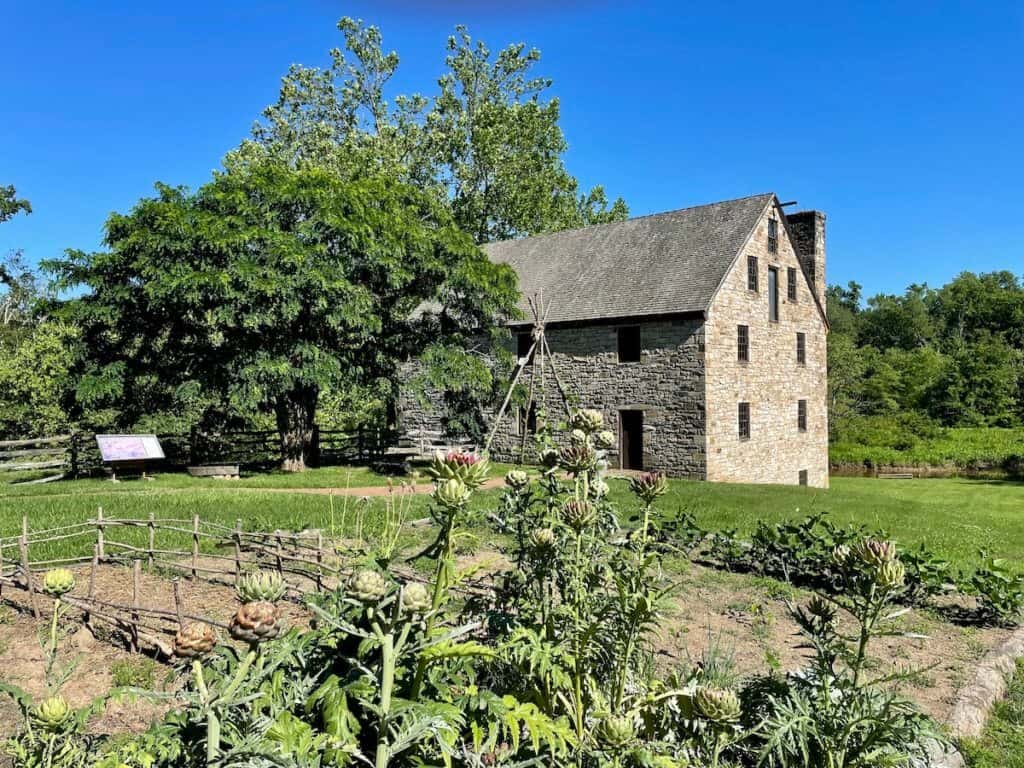
Brief History of Mount Vernon
The original structure was built for George Washington’s father in 1734 when George was just a toddler. It had four rooms and a foyer, called a central passage at the time. After his father’s death, when Washington was 11, his older step-brother Lawrence inherited the property. It was Lawrence who named the dwelling Mount Vernon after an admiral he admired. Eventually, in 1761, Washington inherited the property from Lawrence’s family.
The Property Grows
At Mount Vernon that meant expanding the footprint of the home and the property itself. In fact, Washington added 8,000 square feet to the original house and 4,000 acres to the original property.
He designed several major renovations that resulted in raising the roof to add a story to the main house thereby creating more bedrooms, a garret (attic), and a two-story piazza facing the river. Furthermore, he added wings on the north and south ends of the house to increase living and entertaining spaces.
Changing Ownership
Upon George’s death, Martha inherited the estate. Just three years later, she died, and the property passed to George’s nephew. Ownership continued through successive family members until the mid-19th century.
In the mid-1800’s, Ann Pamela Cunningham formed the the Mount Vernon Ladies’ Association and raised funds to purchase the property from George Washington’s great-grandnephew. The property opened to the public in 1860.
Preserving the View
Since the 1950s, there have been threats to the magnificent vista from the mansion across the Potomac River. Washington so cherished that view. And visitors over the years have come to love it, as well. It seems fitting that the Mount Vernon Ladies’ Association has fought development attempts (including a sewage treatment plant!) across the river and also nearby. They want to preserve the property (and its views) for future generations. By doing so, all can learn more about the man (and things he enjoyed) who did so much to form and lead the young country in the 18th century.
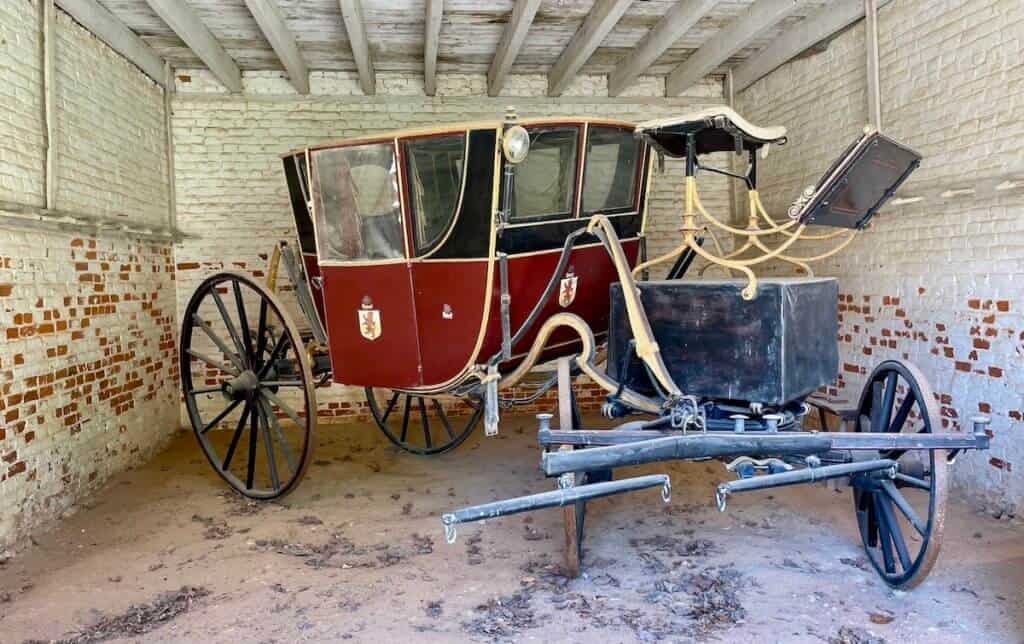
Planning Your Visit
- Expect to spend a minimum of 3-4 hours at Mount Vernon. In fact, I’d suggest you plan to make a day of it. There’s so much to see: the mansion and grounds as well as the museum and education center. Remember, there are a couple of places for dining so that you can keep your energy up all day.
- All visitors must buy a Grounds Pass to enter. Tickets for a mansion tour (plus the off-site grist mill and distillery) are separate. Also, check out special events offered on the day of your planned visit.
- Purchase your tickets online ahead of time (if possible) to guarantee your choice of time for a guided tour of the mansion.
- An interactive map of Mount Vernon will help you get acquainted with the property as you plan your day.
- Consider viewing the virtual tour to gain a little more background before or after visiting.
- When you arrive, you’ll receive a detailed paper map showing the location of all the places available to visit.
- There’s a Mount Vernon app you can download with some good resources for your visit.
- Wear comfortable shoes as there’s a lot of walking.
- Bring along bottled water. (No other outside beverages or food are allowed.)
- An umbrella would be handy in rainy weather because most of your visit will be outside.
- A shuttle runs from the education center to the farm throughout the day.
- Visit by driving, biking , or by boat . Do an online search if you’re interested in a bus tour from Washington, D.C. or other locales.
- Leashed dogs are welcome with some exceptions. 🐶
- Check out Mount Vernon’s accessibility features before your visit, if interested.
- Parking is free.
Mount Vernon is 8 miles from Alexandria, VA; 18 miles from Washington, D.C.; 55 miles from Baltimore; and 96 miles from Richmond. The address is 3200 Mount Vernon Memorial Highway, Mount Vernon, VA.
Related Articles
There are additional interesting options when planning your visit. For example, we visited Mount Vernon on a visit to the D.C. area and walked to 16 amazing monuments in town. Plus, there are more inviting spots a short drive away.
- Annapolis – a charming, quaint, historical town that offers lots of history and sailing fun along with excellent dining and shopping.
- Charlottesville – Explore America’s colonial history by visiting the estates of three of the country’s founding fathers, walking and hiking scenic trails, and visiting some notable wineries.
- Charlottesville Trails: Take a Walk Back in History – Discover some inviting trails at historical estates — Thomas Jefferson’s Monticello, James Monroe’s Highland, James Madison’s Montpelier — and nearby parks.
- Charlottesville Wineries: Sensational Sips in Virginia’s Heartland – Visit one — or all — of the top ten wineries in the greater Charlottesville area.
- Great Falls Park – a scenic park overlooking spectacular waterfalls and the Potomac River with plenty of trails.
- The Historic Triangle: Jamestown, Williamsburg, Yorktown
- Norfolk – Close to Virginia Beach, Norfolk is lively with three top attractions: Chrysler Museum of Art, Nauticus Maritime Museum (with a retired U.S. battleship to tour), and the Norfolk Botanical Garden.
- One Week in Historical Virginia – Consider our itinerary for a fabulous visit to this special part of the state.
- Southern Maryland – further south of Annapolis, along the western shore of the Chesapeake Bay, sits a delightful area with 17th-century American history (Historic St. Mary’s City) as well as marine and nautical history, lighthouses to visit, and fossils to hunt! Yep, that’s right!
- 16 Best Monuments and Memorials in Washington, D.C. – Visit a few or all of these great monuments, including the most recent ones. Use this guide to plan your visit!
Final Thoughts
Mount Vernon has been a draw for my husband and me when we’re in the general Washington, D.C. area. We took our kids there to expose them to this interesting history when they were youngsters (many years ago). And we’ve stopped by several times since then. Each time we visit, we come away with a few more insights. Also, we gain a renewed appreciation for the efforts of those who have continued to preserve this special part of American history.
On our last visit, we enjoyed a wonderful lunch at the Mount Vernon Inn Restaurant before entering the grounds. At the conclusion of our tour of the mansion and grounds, we went to the museum and education center. Plan to spend some time here after strolling the estate. You’ll learn still more about Washington and hot topics that plagued the young country and its leader.
Please share your experiences and suggestions for other places to visit in the area. Your ideas could be helpful to other travelers. Thanks! 🙂
More Popular Reads
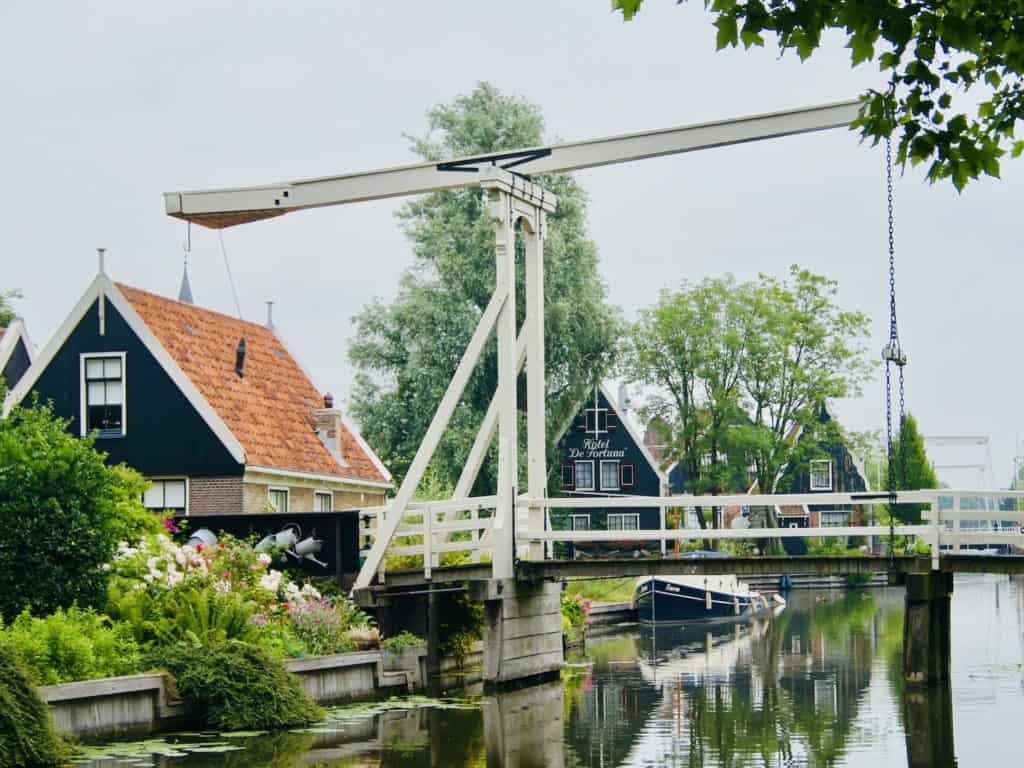
Examples of How Travel Can Enrich Your Life
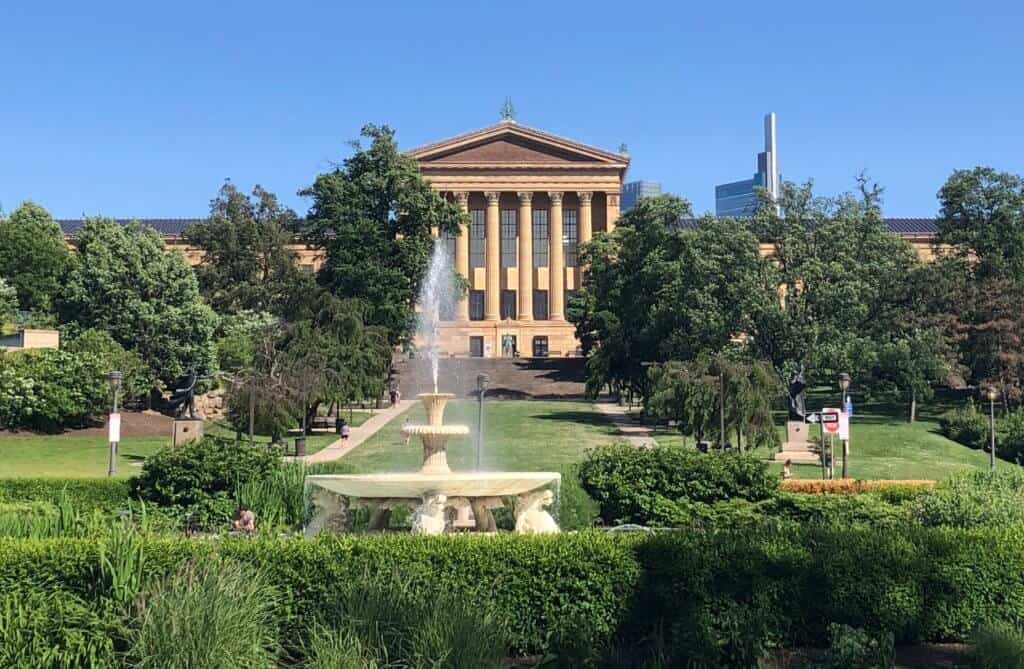
Best Things To Do in Philadelphia
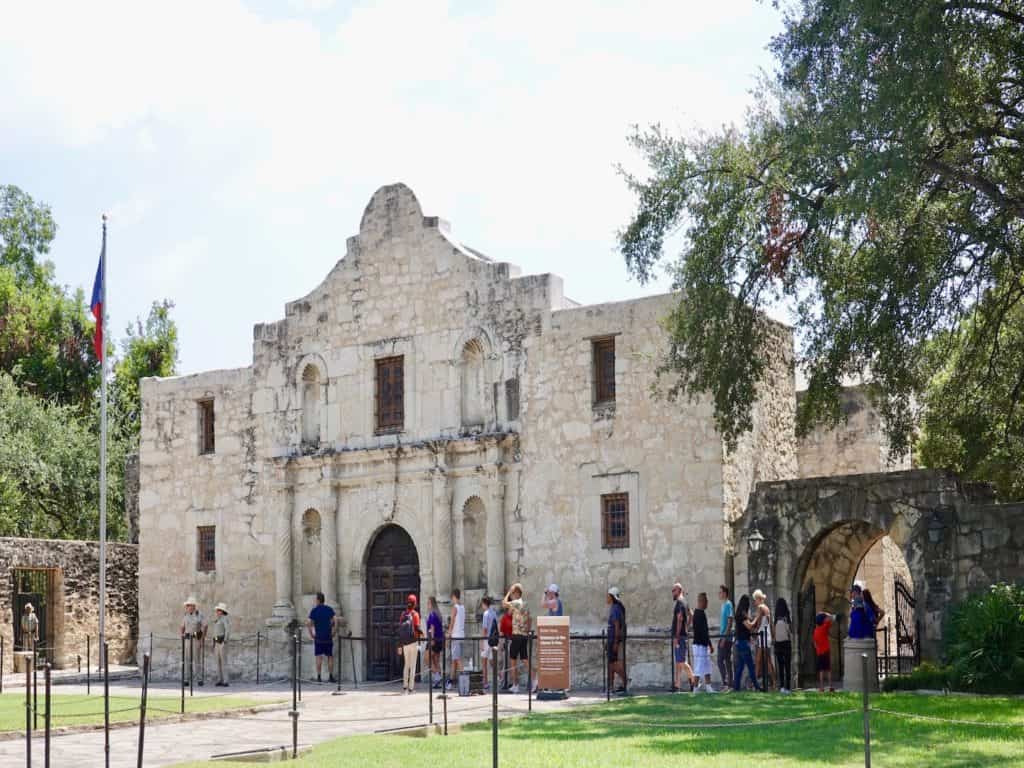
Six Best Places to Visit in San Antonio, Texas
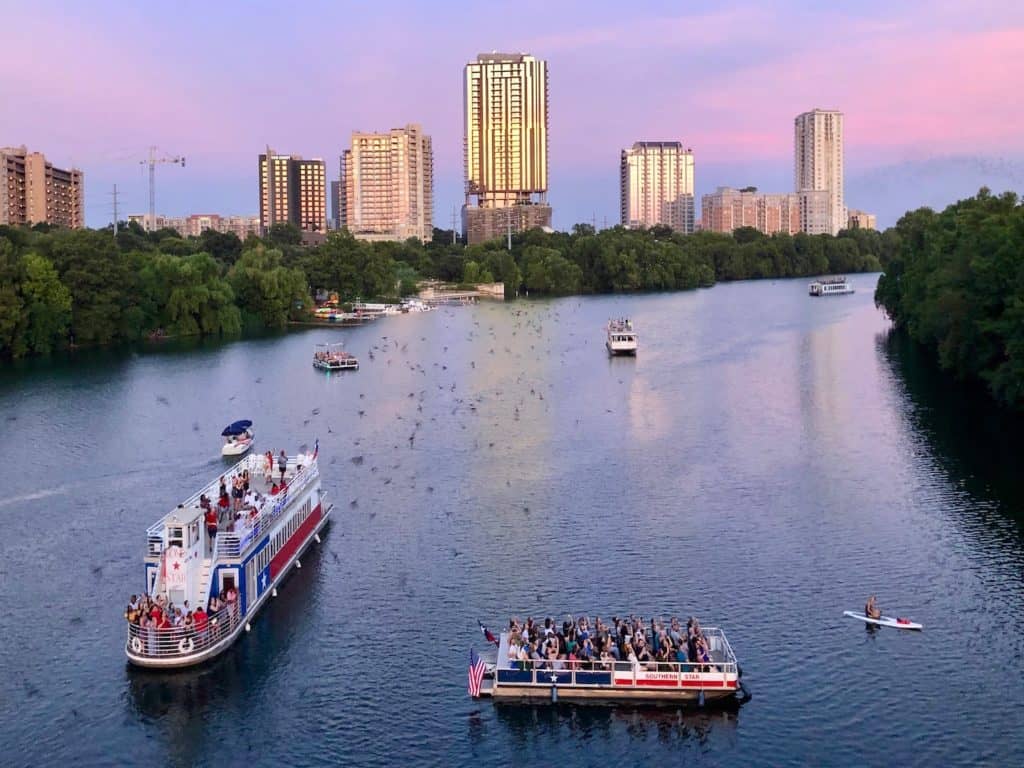
Six Best Things to Do in the Zilker Area of Austin, Texas
Leave a comment cancel reply.
Your email address will not be published. Required fields are marked *
Save my name, email, and website in this browser for the next time I comment.
This site uses Akismet to reduce spam. Learn how your comment data is processed .
THE 15 BEST Things to Do in Mount Vernon
Things to do in mount vernon, explore popular experiences, tours in and around mount vernon.

- Tulip Festival in Skagit Valley Tour from Seattle

Tulip Festival and Skagit Valley Tour

- Tulip Festival at Skagit Valley ,La Conner and Deception Pass

View of Tulips, La Conner, Deception Pass Bridge & Whidbey Island

Boeing Factory Tour with Guided Transport from Seattle

Chuckanut Bay Distillery Tour with 2 Mini Cocktails and Gift Glass

Bellingham to Mt. Baker Experience

90-Minutes of Pottery Fun

Day Sail on Port Townsend Bay

Intro to Outdoor Rock climbing
Tours & sightseeing.

Top Attractions in Mount Vernon

Other Top Attractions around Mount Vernon
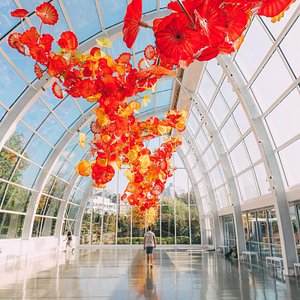
Outdoor Activities
What travellers are saying.
- Roozengaarde Display Garden
- Skagit Valley Tulip Festival
- Little Mountain Park
- Schuh Farms
- Padilla Bay Interpretive Center
- Bay View State Park
- Full Day Private Tour of Vancouver BC Canada from Seattle
- Skagit Valley Birding + Deception Pass Day Tour From Seattle
- View of Tulips, La Conner, Deception Pass Bridge & Whidbey Island

Open 365 days a year, Mount Vernon is located just 15 miles south of Washington DC.

From the mansion to lush gardens and grounds, intriguing museum galleries, immersive programs, and the distillery and gristmill. Spend the day with us!

Discover what made Washington "first in war, first in peace and first in the hearts of his countrymen".

The Mount Vernon Ladies Association has been maintaining the Mount Vernon Estate since they acquired it from the Washington family in 1858.

Need primary and secondary sources, videos, or interactives? Explore our Education Pages!

The Washington Library is open to all researchers and scholars, by appointment only.
Summer Huzzah
Join Mount Vernon for a summer evening of 18th-century entertainment, horse-drawn wagon rides, and more.
At our special VIP experience, taste foods inspired by 18th-century dishes served at Mount Vernon and sample George Washington's whiskey.
Finish the evening with a performance by the Washington Tattoo .
Special Event Showing On

VIP Experience in the Upper Garden
Taste a modern menu inspired by first-hand accounts of guests who dined at Mount Vernon in the beautiful Upper Garden.
Each VIP ticket purchase comes with two drink tickets, applicable toward Mount Vernon beer and wine. Cash bar available.
Please note that the VIP experience cannot accommodate dietary restrictions.
VIP Experience

In the Upper Garden, enjoy a modern tasting menu inspired by first-hand accounts of guests who dined at Mount Vernon as you listen to 18th-century music by Donna Nomick and the hammered dulcimer.
Finish the tasting with a toast featuring George Washington’s whiskey.
- Potted guinea fowl (2 oz) with bread (1/2 slice), garden pickles (3), and Durham-style mustard (1oz)
- Pea soup (4 oz) with dressed vegetables (2 oz) and smoked trout (1 oz)
- Barbecue beef (5-6 oz)
- Biscuit (1-3 in) with jams and two cheeses (2 oz)
- Candied fruit and nuts
- "The most extraordinary plum cake" (4 in)
- Toast with George Washington’s 5-Year Premium Rye Whiskey®
This 18th-century spread will be prepared by Mount Vernon's Resident Baker Justin Cherry of Half Crown Bakehouse . Justin will talk with guests and share the historical significance of the menu.

George Washington Whiskey
In 1799, George Washington's distillery produced nearly 11,000 gallons, making it one of the largest whiskey distilleries in America.
Today, a faithfully reconstructed working distillery produces small batch spirits on-site and is open to visitors on weekends in April - October.
Public Event

Enjoy 18 th -century entertainment, including:
- Tavern games, like shut the box, tic tac toe, and tops
- Lawn games, including the game of Graces
- 18 th -century fortune telling with Dr. Nobles (6:30 p.m. & 7:30 p.m.)
- 18 th -century music with Colonial Faire (6 p.m. & 7 p.m.)
Tour the Mansion
The Mansion will be open for tours.
Don't miss the opportunity to tour the Mansion after hours before many of its rooms go off-view for preservation work.
Learn about our preservation work
Horse-Drawn Wagon Rides
Enjoy a scenic ride across the 12-acre field in a horse-drawn wagon.
Ice Cream Making
See how ice cream was made in George Washington's day, featuring some 18th-century flavors not often seen today, like oyster, pickle, and garlic.
Whiskey and Beer-making
Watch live whiskey distilling and beer-making demonstrations from members of Mount Vernon's Historic Trades Team.
Ponies & Livestock
See ponies and learn about the role of livestock in the 18th-century from members of the Livestock Team.
Concessions
Concessions from the Mount Vernon Inn will be available for purchase.
The Washington Tattoo

The event concludes with a one-hour performance by The Washington Tattoo, followed by a meet-and-greet of the performers (a $32 value).
Schedule of Activities
Lawn seating.
Guests are encouraged to bring a blanket or small lawn chair to sit on the lawn. Seating is not provided at the general public event.
Tents, tables, pop-ups, grills, beach or free-standing umbrellas, coolers, and glass containers are not permitted. All items and bags will be subject to search upon entrance.
Get Discounted Admission
Become a member to save on event tickets and get free daytime admission to Mount Vernon year-round.
Share this event
#gwmountvernon
Quick Links
9 a.m. to 5 p.m.
Centuries-old bottles of cherries unearthed at George Washington’s home
The two, rare intact bottles, about 250 years old, were discovered by archaeologists working in the mount vernon basement.

Archaeologist Nick Beard was gently pushing aside the hardened dirt in the basement of George Washington’s home at Mount Vernon, Va., last fall when he spotted the mouth of a glass bottle.
Beard worked his trowel a little more and the neck of the bottle emerged. Not that unusual, he thought. Archaeologists find lots of bottle fragments.
But as he dug, more of the object appeared. “It kept [getting] larger and larger,” he said.
He stuck his finger in the mouth to see if he might wiggle the piece loose. “And my finger came back wet,” he said. “I thought about it for a half-second longer and said, ‘Oh, my God, my finger is wet,’” he recalled.
“I got my flashlight out and shined it in there, and the thing is completely full of liquid,” he said.
He summoned colleagues. They were stunned. Here was “an out-of-the-box, next-level, spectacular find,” said Jason Boroughs, Mount Vernon’s principal archaeologist.
Experts at Mount Vernon said last week that Beard and other archaeologists have now discovered two intact bottles that still had, along with liquid, some of the cherries they contained when they were buried about 250 years ago. The area of the discovery was believed to have once been a storeroom, Beard said.
Much of the liquid could be groundwater that seeped in after the cork seals deteriorated, but pits, stems, sodden cherries, and gooey residue were also present, the experts said.
“There are whole, recognizable cherries,” said Boroughs. “It actually smelled like cherry blossoms when we got to the bottom.”
Boroughs noted two other finds in Virginia of historic intact bottles containing cherries, and other fruits: one in 1966 in Williamsburg, and the other in 1981 at Thomas Jefferson’s Monticello estate outside Charlottesville.
“We don’t find complete objects or artifacts often ever in archaeology,” said Lily Carhart, Mount Vernon’s curator of preservation collections. “Usually we’re dealing with very tiny fragments. Where we find even the beginning of something that looks like it might be complete, that is a truly exceptional day for us.”
The cherries were probably picked at Mount Vernon in the 1770s, perhaps before the Revolutionary War, and stored for the future. The bottles, imported from England, dated to the mid-1700s and were probably buried between 1758 and 1776, Boroughs said.
“So it’s a time capsule,” he said.
After the discovery, most of the contents were siphoned from the bottles, to help preserve the glass, and stored in 15 small containers. The liquid and the cherries will be analyzed later, said Carhart.
At first, the archaeologists wondered if the contents might be remnants of a colonial drink called Cherry Bounce, which was made with brandy, spices, sugar and cherry juice. George Washington and his wife, Martha, were fond of it, they said.
But Boroughs said Cherry Bounce was made in much larger containers, and it is more likely that the cherries they found were preserved in the bottles for later dining.
“There are 18th-century accounts that talk about proper ways of preserving fruits and vegetables,” he said. “One of the most common, especially for berries, is to dry them as much as possible … put them in a dry bottle, cork it … and then bury them.”
They would then be preserved for up to a year, he said.
The cherries were probably picked, bottled and stored by some of the hundreds of enslaved people at Mount Vernon, Boroughs said. But they were probably eaten in the main dining room, upstairs.
The archaeology was part of larger project to rehabilitate, among other things, the mansion’s deteriorated connection to its foundation, officials said.
Mount Vernon, George Washington’s famous mansion overlooking the Potomac River, is about 20 miles south of Washington. The original house was a modest structure built for his father in 1734.
Washington inherited it in 1761 and expanded it dramatically over the decades — most of the work being done by those enslaved at Mount Vernon, officials said. By the time of Washington’s death in 1799, more than 300 people were enslaved on the plantation there.
Washington, who led American forces during in the Revolutionary War and became the nation’s first president, was often away from Mount Vernon but loved the site and died there on Dec. 14, 1799.
The story of Washington, as a child, admitting to his father that he had damaged a cherry tree with a hatchet is a myth invented by an early biographer, according to Mount Vernon.
Beard, the project archaeologist, said he discovered the first bottle back in November, but excavation of that and the discovery of the second bottle did not take place until last month.
“We wanted to make sure that we would do due diligence when we excavated,” Boroughs said. But the wait was nerve-racking, he said: “We were worried that somebody could step on it.”
When the day for the excavation came — March 22 — archaeologists and curators in hard hats and yellow safety vests gathered at the cramped site in the mansion’s basement. Using trowels and brushes, they carefully removed the hardened dirt from around the two bottles.
“We kind of actually all took turns digging them out,” Beard, the project archaeologist, recalled. “This does not happen very often, and we wanted the whole team to kind of be a part of that.”
He removed the first bottle from the ground. “My heart was racing, hands were shaking,” he said. “But I put my hands down, went for it, and it came out beautifully.”
He said he packed it in foam and carried it back to Mount Vernon’s archaeology laboratory.
“It’s been a very exciting find,” he said.
And the archaeologists think there may be more undiscovered bottles buried nearby. Excavations will continue over the next few weeks.

18th-century glass bottles filled with cherries discovered at George Washington's Mount Vernon residence
Brandy, anyone.
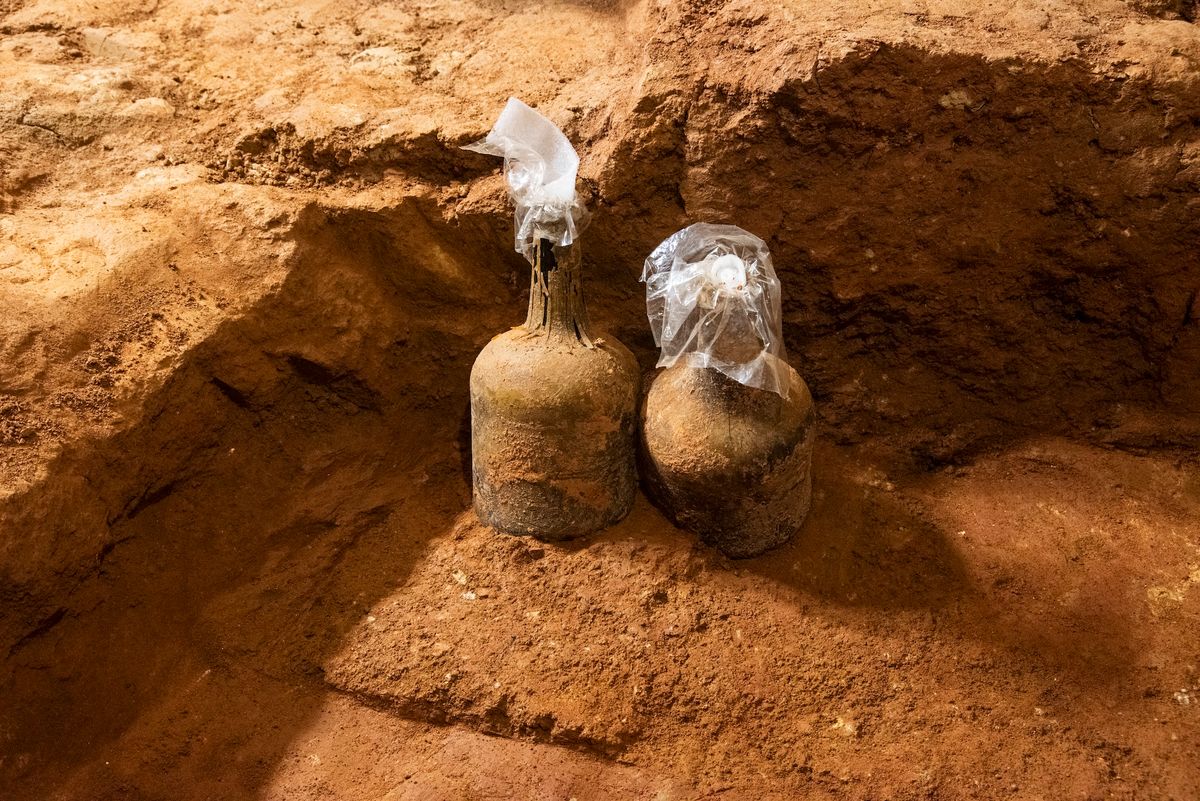
The 250-year-old glass bottles filled with cherries found under a 1770 brick floor at George Washington's mansion at Mount Vernon, Alexandria, Virginia Courtesy the Mount Vernon Ladies’ Association
Archaeologists have discovered two 250-year-old glass bottles full of cherries at Mount Vernon—the historic landmark and first US president George Washington’s former plantation residence in Alexandria, Virginia (just south of Washington, DC).
The bottles were found under a brick floor from the 1770s during an ongoing, $40m renovation of the mansion . Manufactured in Europe and made of dark-green glass in shapes popular in the 1740s and 50s, they were standing upright and sealed—perhaps forgotten in a below-ground storage space when the floor was built over them. The bottles were opened at Mount Vernon’s archaeology lab in order to “help stabilise the glass”, according to a press release , and the cherries, suspended in liquid inside and complete with stems and pits, “still bore the characteristic scent of cherry blossoms”.
In a statement, Mount Vernon’s principal archaeologist, Jason Boroughs, called this a “significant archaeological find. Not only did we recover intact, sealed bottles, but they contained organic material that can provide us with valuable insight and perspective into 18th-century lives at Mount Vernon. These bottles have the potential to enrich the historic narrative, and we’re excited to have the contents analysed so we can share this discovery with fellow researchers and the visiting public.”
Initially, archaeologists thought the bottles might contain Cherry Bounce , a colonial-era drink made with brandy, cherries, sugar and spices that the Washingtons enjoyed, according to The Washington Post ’s Michael E. Ruane . But researchers later decided these were likely just cherries stored in bottles for later use—the liquid could have been ground water that seeped in after the corks broke down.
“There are 18th-century accounts that talk about proper ways of preserving fruits and vegetables,” Boroughs told the Post . “One of the most common, especially for berries, is to dry them as much as possible … put them in a dry bottle, cork it … and then bury them.” He added that the cherries were likely harvested, bottled and stored (for consumption in the main house) by at least one of the hundreds of enslaved people who toiled at the plantation.
The bottles will be conserved starting next month, and their contents shipped to a lab for analysis. They will go on display at Mount Vernon thereafter, as excavation continues—with a potential for more such bottles of fruit to be found. The renovation project is scheduled for completion in 2026, the 250th anniversary of the creation of the United States.

IMAGES
COMMENTS
Mount Vernon is the historic home of America's first president, George Washington, just a short drive from Washington, DC and Alexandria, VA. (12+) $28 (6-11) $15 (0-5) $0 Adults (12+) $28 Youth (6-11) $15 Children (0-5) FREE Buy Your Tickets Online General admission includes one-day admittance to the Mount Vernon estate and an audio tour. While we recommend at least three hours for your visit ...
George Washington's Mount Vernon is the historic home of George and Martha Washington, located 13 miles south of Washington, DC. Guests can see the historic mansion, stately rooms, and outbuildings preserved to the year 1799, the last year of George Washington's life. Owned and operated by the Mount Vernon Ladies Association, George Washington's Mount Vernon has been visited by world ...
Mount Vernon is located in northern Virginia, just a short drive from Washington, D.C. For more information about things to do in Virginia, visit Virginia.org, the official tourism website for the state of Virginia.You'll find an overview of each region in Virginia, as well as information about cultural attractions, upcoming events, and where to stay.
In the museum, discover the people who shaped Mount Vernon, including Washington and Custis family members, enslaved and hired laborers, and Vice Regents of the Mount Vernon Ladies' Association, which has owned and preserved Mount Vernon since the 19th century. Museum Visit Time: 1 hour. Learn More
58. Farms. By Msagro. Schuh Farms always has wonderful vegetables, many things to do like picking out pumpkins, the milk shakes are to die... 5. Little Mountain Park. 86. Lookouts. Little Mountain Parks features two viewpoints that give 180 degree views of north, west and south Skagit Valley to the Olympic Mountains.
The Mansion at George Washington's Mount Vernon is one of the most iconic 18th-century homes in America. Reserve your Mansion tour in advance online, as capacity is limited. Due to ongoing preservation work, the Mansion's New Room is not on display. In August 2024, the New Room, Servants' Hall, and Kitchen will be open.
Visit Mount Vernon by Boat. Travel down the Potomac River by boat to Mount Vernon. Take a three-hour round-trip cruise to George Washington's estate (one-way cruises also available). Listen to a narrated riverfront tour as you pass historic and modern landmarks, including the Washington Monument and U.S. Capitol. Departs from Washington, D.C.
Yes, Mount Vernon offers free admission to employees of historic homes or museums (with identification). We do not offer discounts for federal government employees or law enforcement. Please call (703) 780-2000 or email [email protected] to request tickets.
George Washington's Mount Vernon is the riverside home of our nation's first president, George Washington. The estate includes a Mansion, four gardens and historic outbuildings where enslaved people made tools and textiles, cared for livestock, and processed food. At the New Tomb, guests can visit the final resting place of George and Martha Washington, where wreath-laying ceremonies take ...
Welcome to Mount Vernon. Located on Interstate 5, Mount Vernon is conveniently located mid-way between Seattle, Washington, and Vancouver, British Columbia, Canada. Mount Vernon is a regional hub for agriculture and agritourism, events, entertainment, education and culture, financial and technology, legal, health care, and local government ...
George Washington's Mount Vernon and Estates. George Washington's Mount Vernon and Estates is located on a hill along the Potomac river. Mount Vernon, named after a British General, was originally much smaller than the spacious mansion we see today. Built in 1735 by Washington's father Augustine, the original building was a one-and-a-half ...
The view across Bowling Green of the Mansion at Mount Vernon. The Mansion. If you look really closely when you visit you can just make out the outline of the original one-and-a-half story house built by Augustine Washington in 1734. When George Washington took over the plantation in 1754 he began a series of renovations and expansions. After nearly 50 years of tinkering he settled with the 21 ...
George Washington's Final Resting Place. Since his death at the end of the 18th century, George Washington has been interred in two places at Mount Vernon. Overlooking the Potomac River, the old vault was the original burial plot for POTUS 1, his wife, and 20 other family members. But George Washington realized that the family vault required ...
I visited George Washington's Mount Vernon in July 2021. I bought my ticket online in advance - Mount Vernon Grounds Pass plus a visit to the mansion. I arrived in the parking lot at about 10 am and walked to the entrance. There is strict security. At the front desk, the staff were kind enough to move my mansion visit from 12:45 pm to 12 noon.
George Washington inherited Mount Vernon only after the deaths of his brother Lawrence and Lawrence's two heirs. Lawrence died in 1752, followed by his daughter, Sarah, in 1754 and Lawrence's ...
Your Schedule at George Washington's Mount Vernon. As you select tours and other items, we will build out a suggested schedule that will appear here. ESTATE HOURS. 9:00 AM to 4:00 PM. $0.00. Menu . Back to calendar. $0.00. Login. Buy Tickets. Select your day of visit. Special event, general admission also available. Sunday. Monday. Tuesday ...
To Visit George Washington's Mount Vernon. Planning a visit to George Washington's Mount Vernon is an opportunity to step into a pivotal piece of American history. This iconic estate, nestled along the Potomac River, offers a unique glimpse into the life and legacy of the first President of the United States. Here are answers to frequently ...
16163 WA-536, Mt Vernon, WA 98273, Phone: 360-428-6894. ... Located right in Mount Vernon, the farm is open from April all through December, so each visit is sure to bring its delights. Dubbed "a kid-riffic place to play," children of all ages will love Schuh Farms' harvest activities. For a small fee, you can participate in the corn maze ...
George Washington's beloved Mount Vernon began as a one and one-half story farmhouse built in 1735 by his father, Augustine, and received its well-known name during the ownership of his half-brother Lawrence. George acquired Mount Vernon in 1754, and over the next 45 years slowly enlarged the dwelling to create the resplendent 21-room ...
Mount Vernon is a historic site located just outside of Washington, D.C. that was home to George Washington, the first president of the United States, and his wife Martha Washington. The estate is managed by the Mount Vernon Ladies' Association. Its preservation and restoration are privately funded. Mount Vernon was first open to the public ...
Check out Mount Vernon's accessibility features before your visit, if interested. Parking is free. Location. Mount Vernon is 8 miles from Alexandria, VA; 18 miles from Washington, D.C.; 55 miles from Baltimore; and 96 miles from Richmond. The address is 3200 Mount Vernon Memorial Highway, Mount Vernon, VA. Related Articles
1. Roozengaarde Display Garden. 441. Gardens. In 1985, RoozenGaarde was founded as a small showgarden and retail shop. With this addition Washington Bulb Co, Inc. was now able to reach out to the many individual flower enthusiasts and gardeners who wanted direct access to WBC's great products.
Join Mount Vernon for a summer evening of 18th-century entertainment, horse-drawn wagon rides, and more. At our special VIP experience, taste foods inspired by 18th-century dishes served at Mount Vernon and sample George Washington's whiskey. Finish the evening with a performance by the Washington Tattoo.
Mount Vernon, George Washington's famous mansion overlooking the Potomac River, is about 20 miles south of Washington. The original house was a modest structure built for his father in 1734.
The 250-year-old glass bottles filled with cherries found under a 1770 brick floor at George Washington's mansion at Mount Vernon, Alexandria, Virginia Courtesy the Mount Vernon Ladies' Association
The privately funded $40 million Mansion Revitalization Project continues at George Washington's Mount Vernon -- the first president's historic home 8 miles down the Potomac River from the nation ...